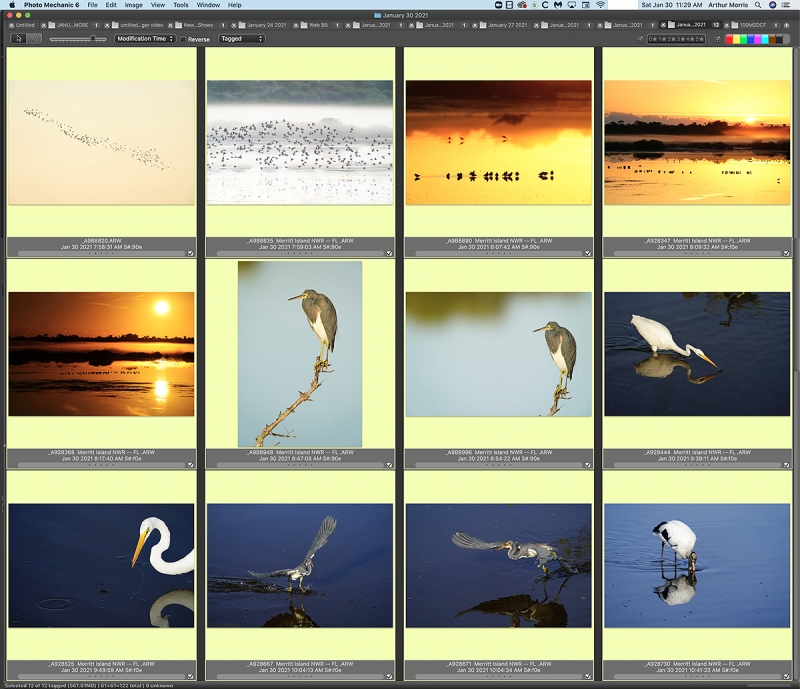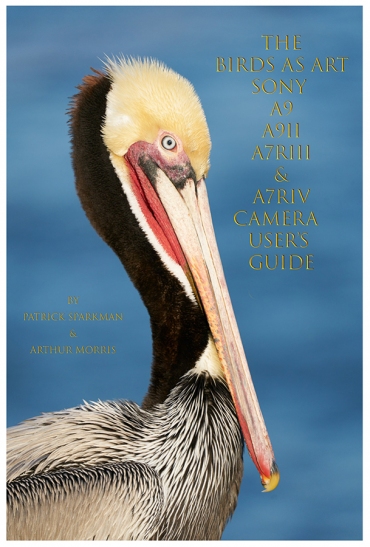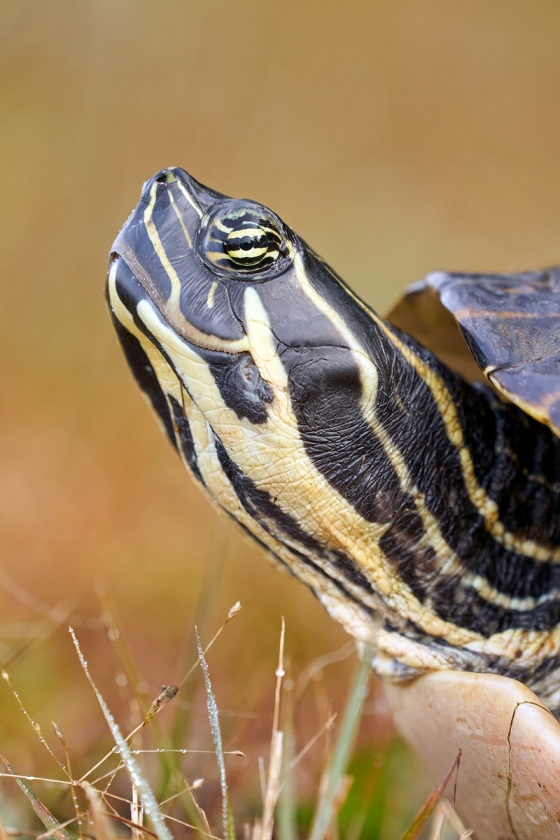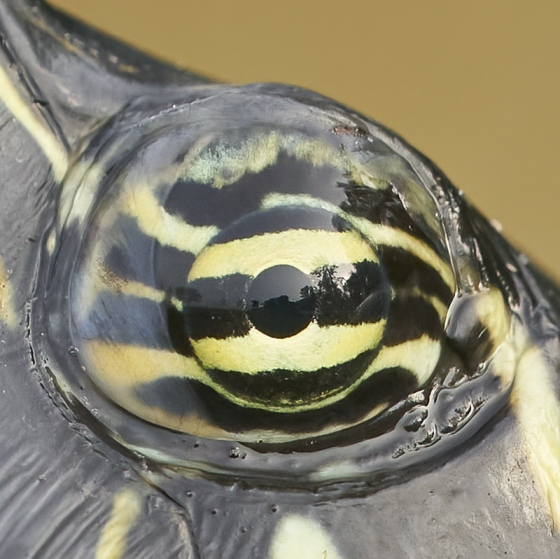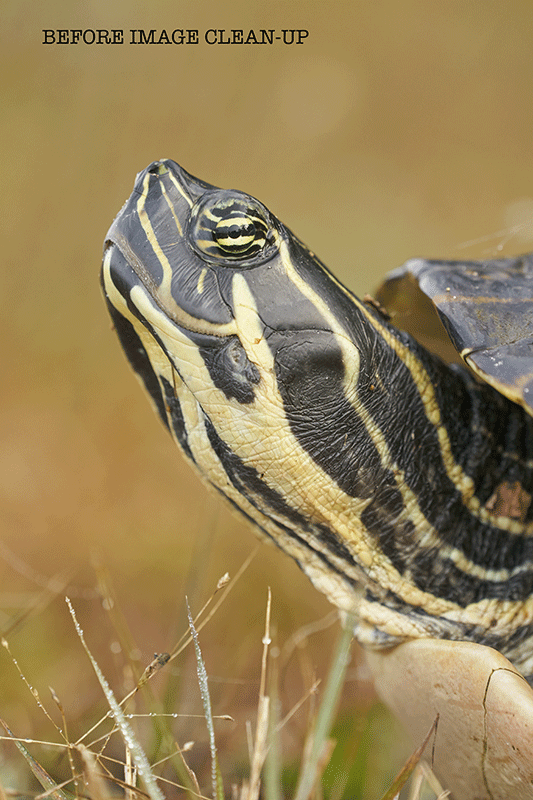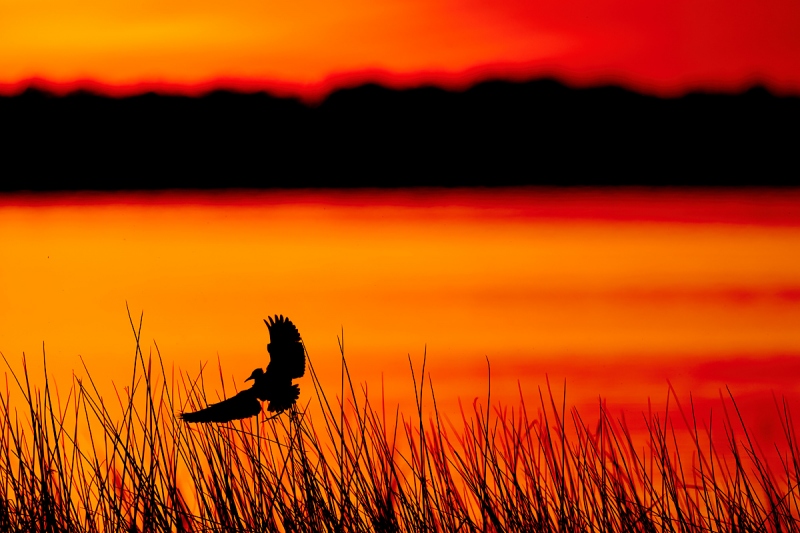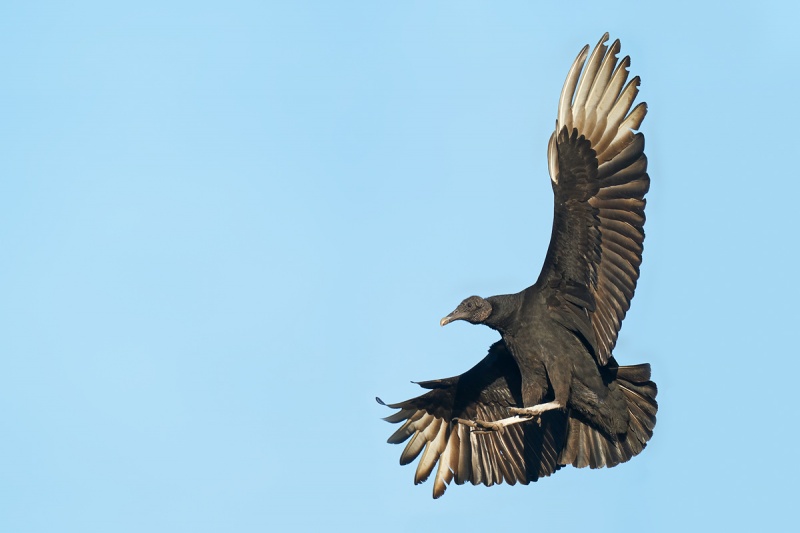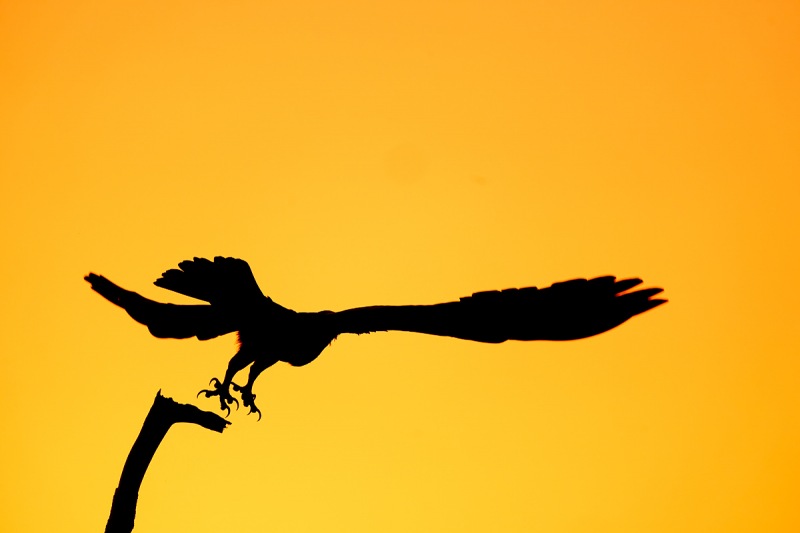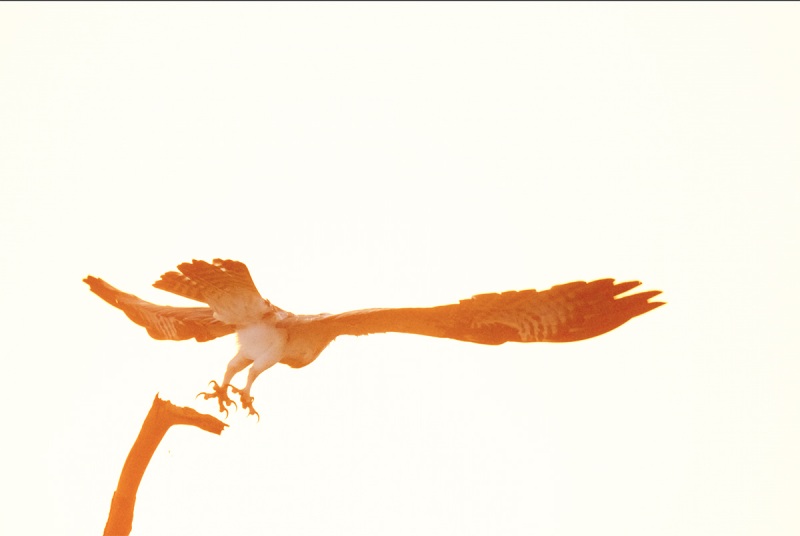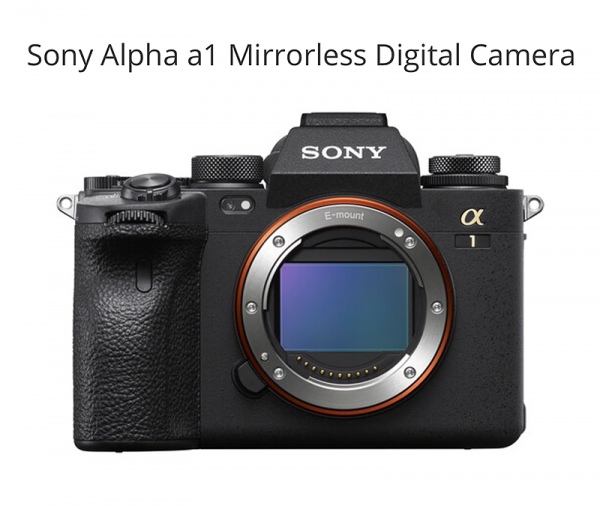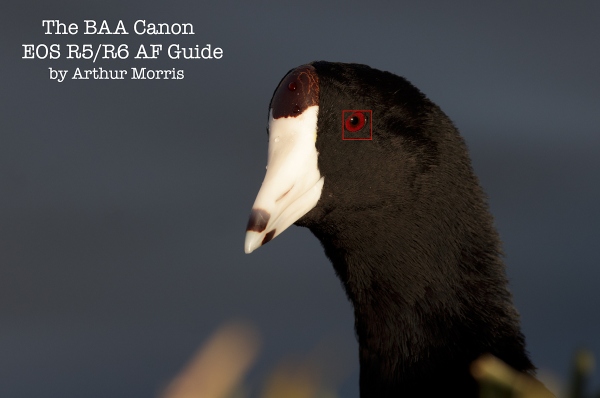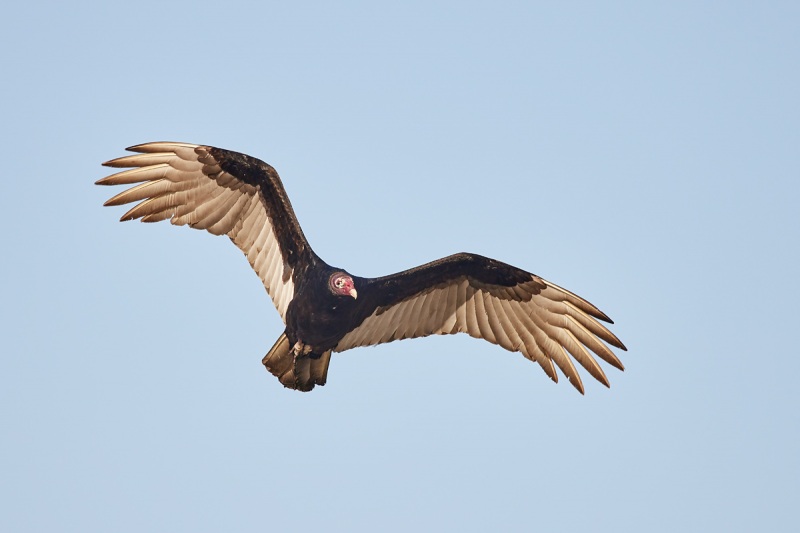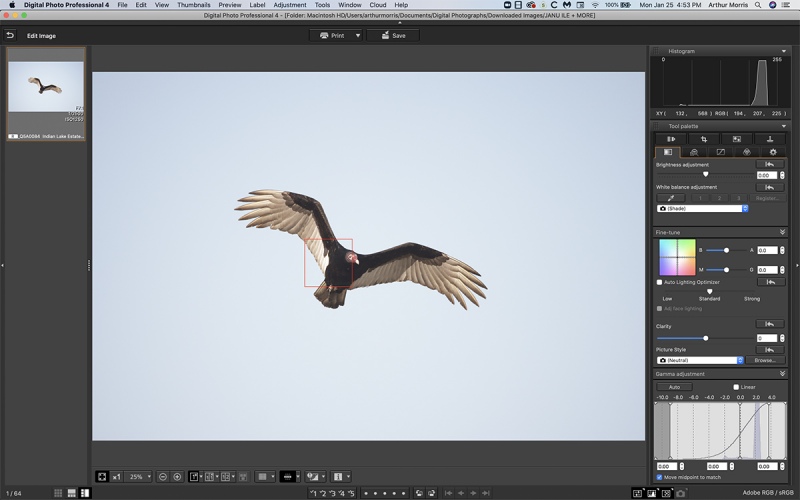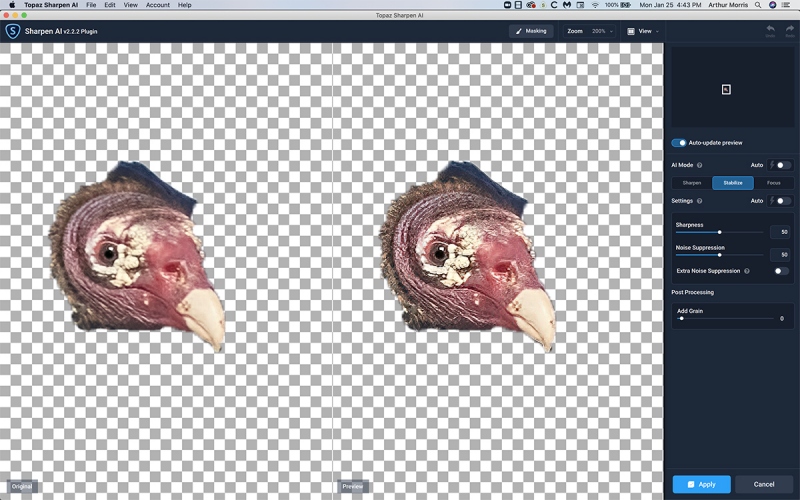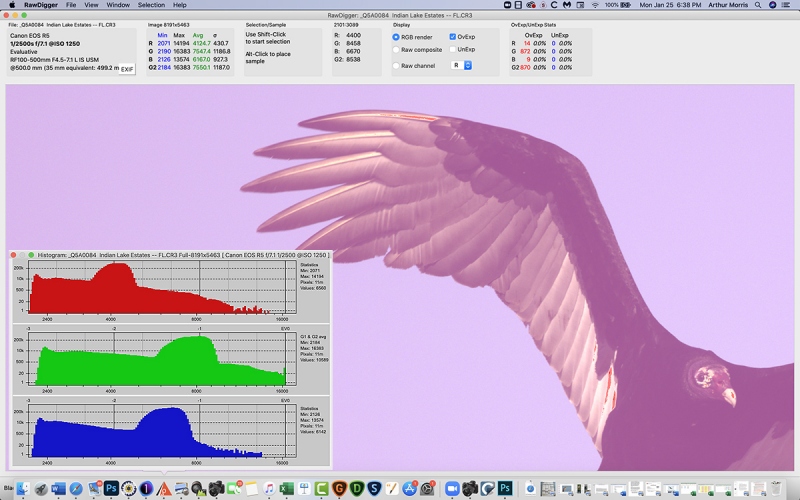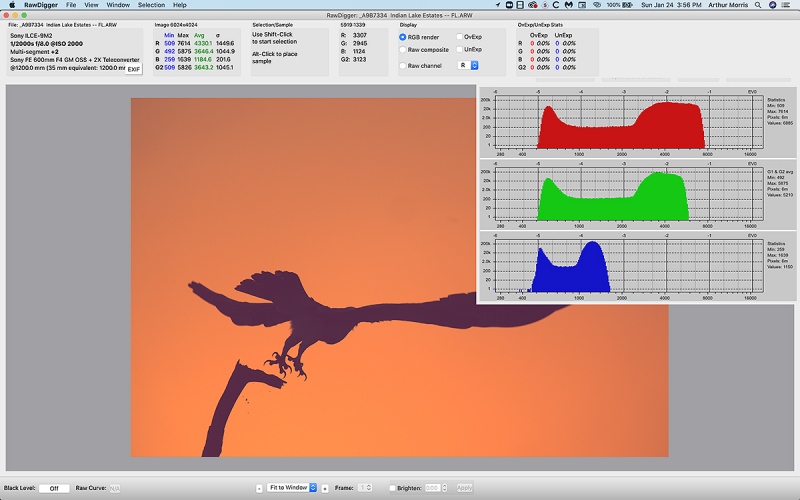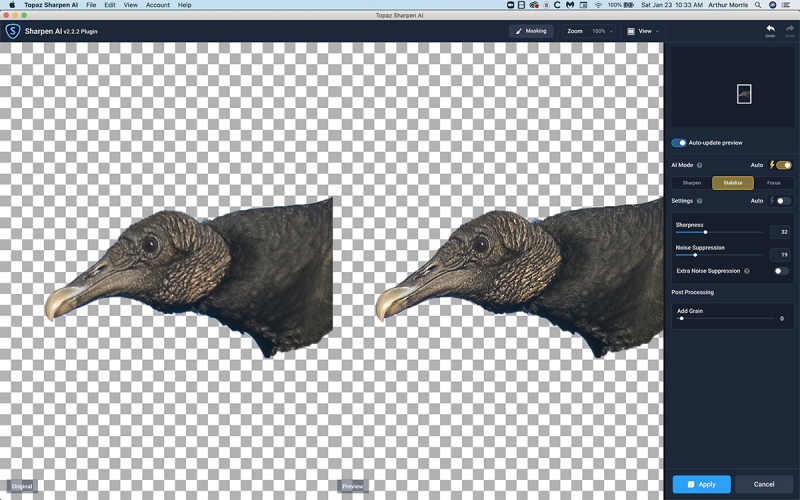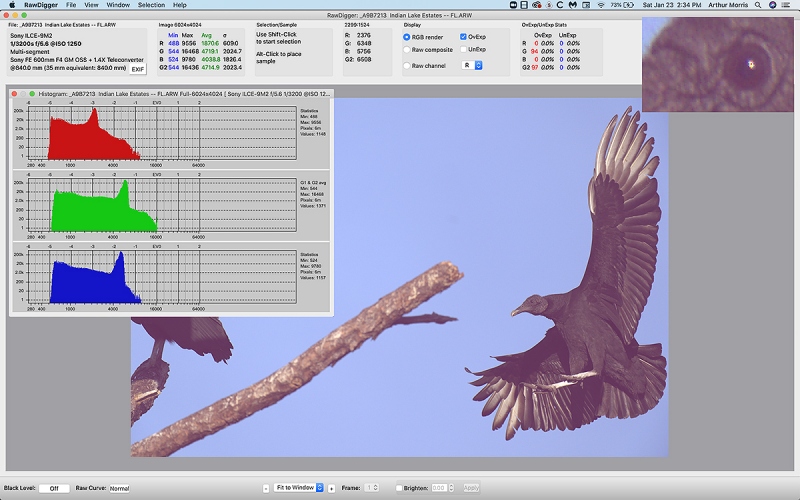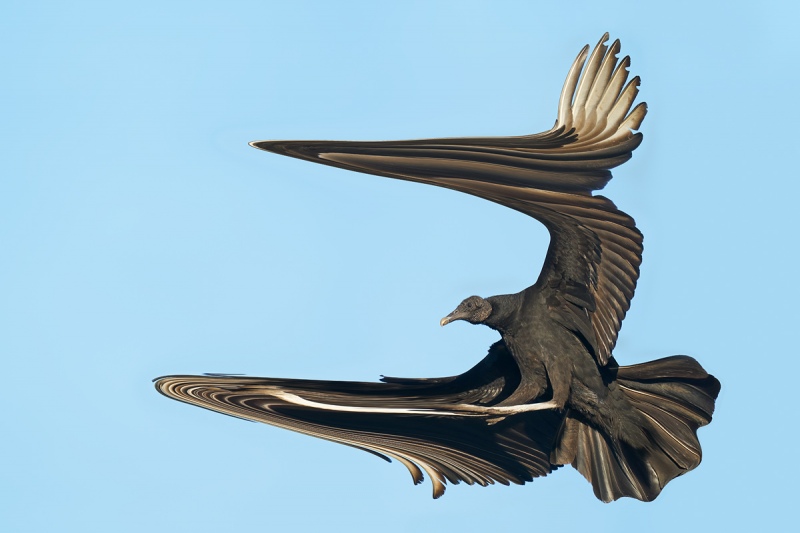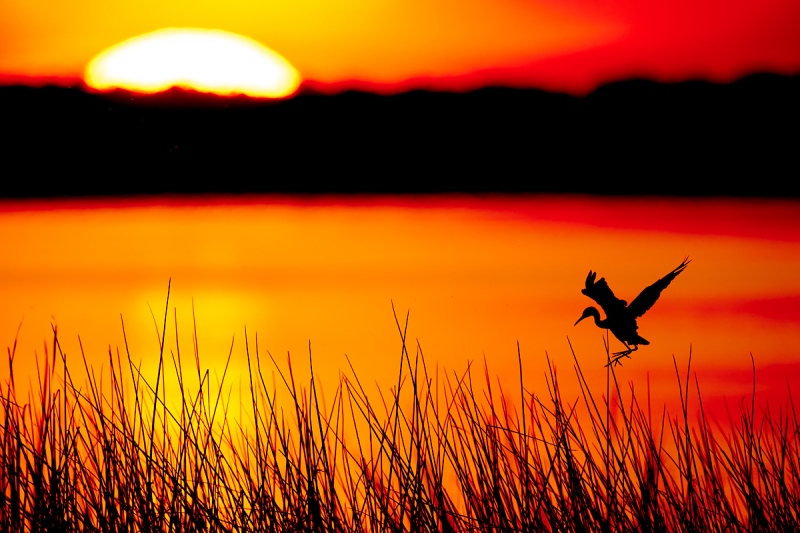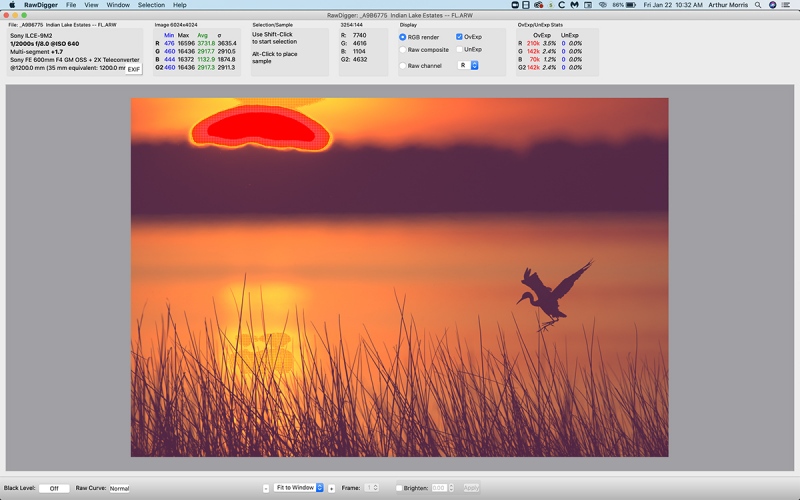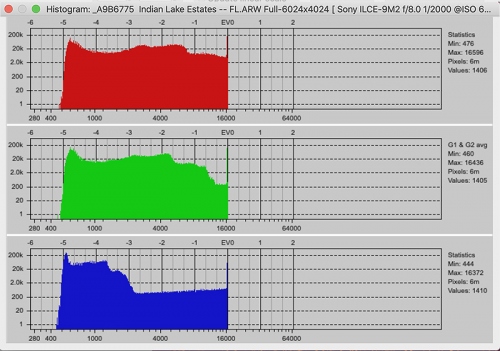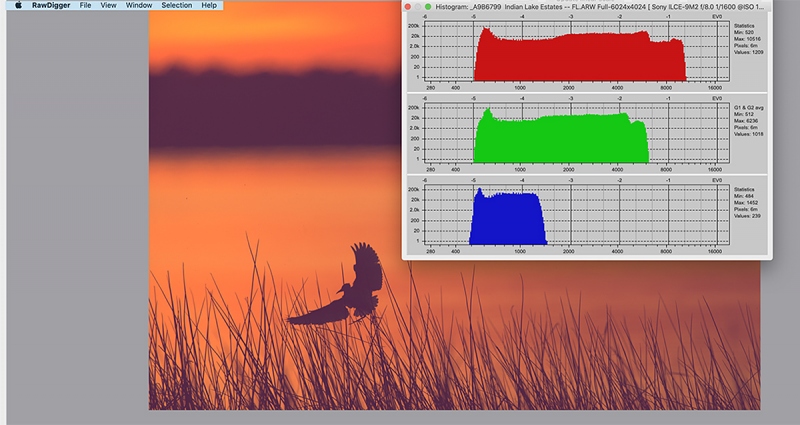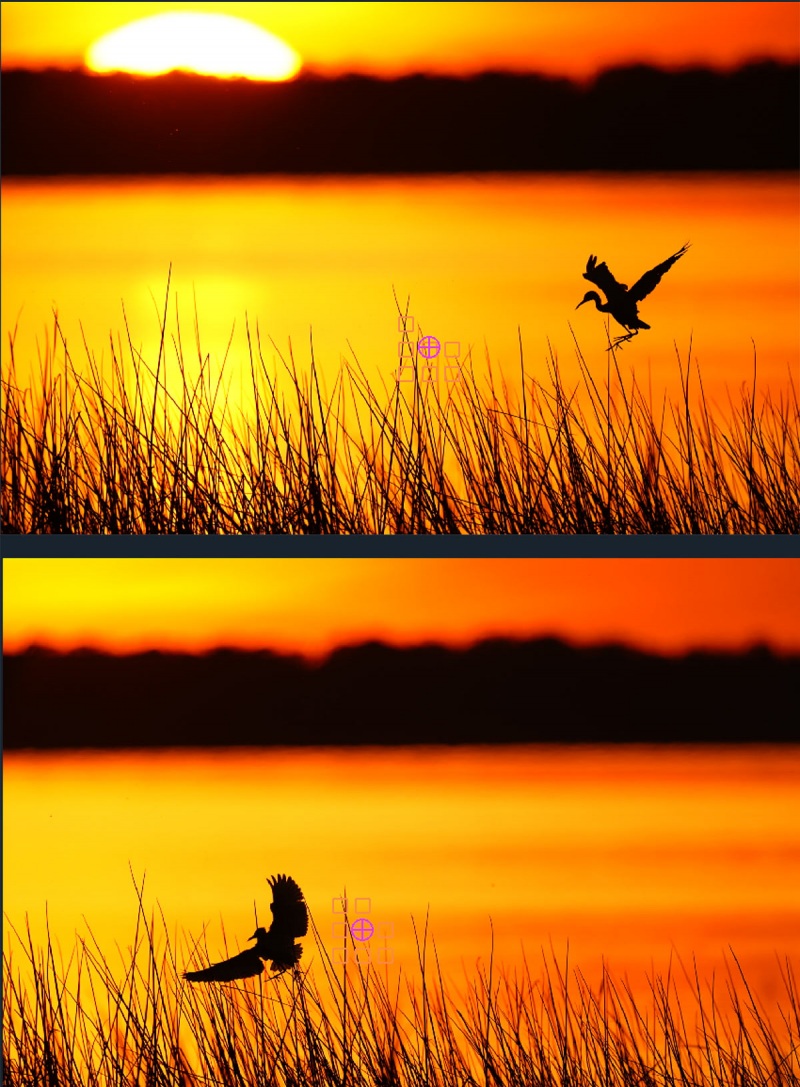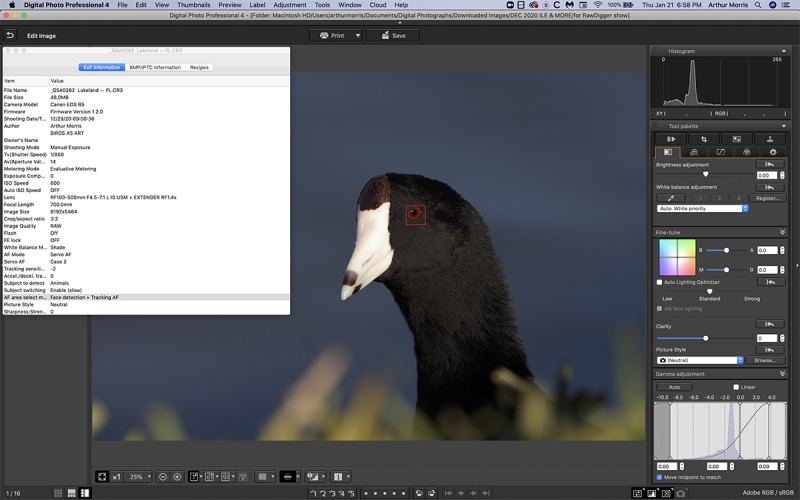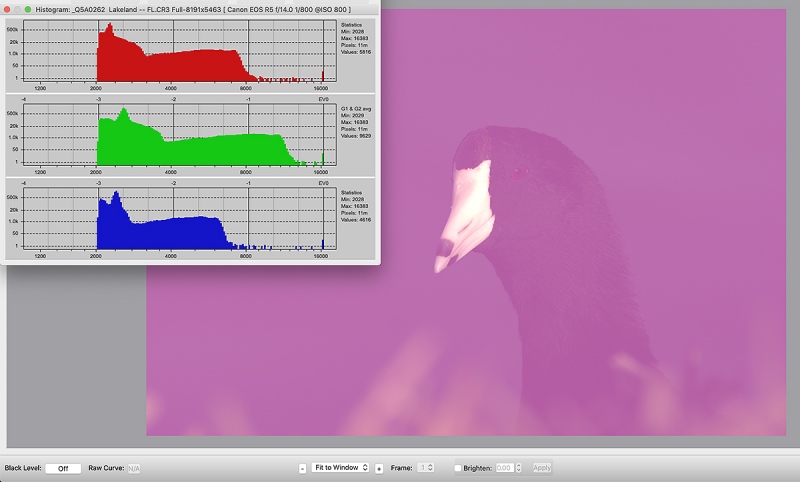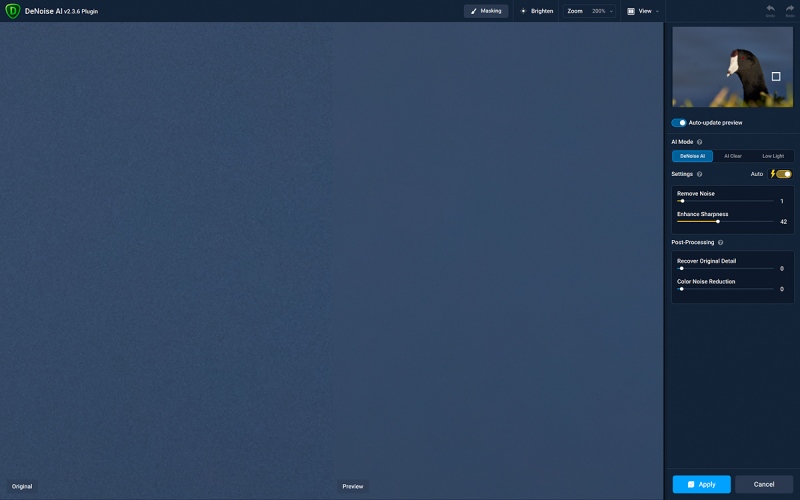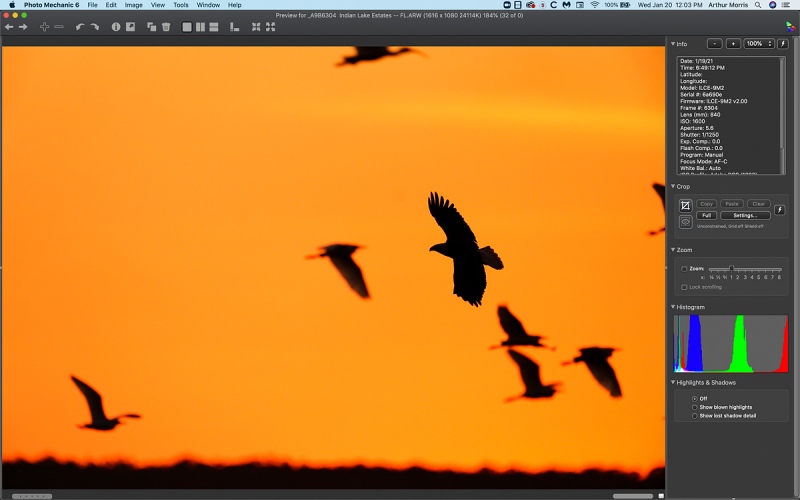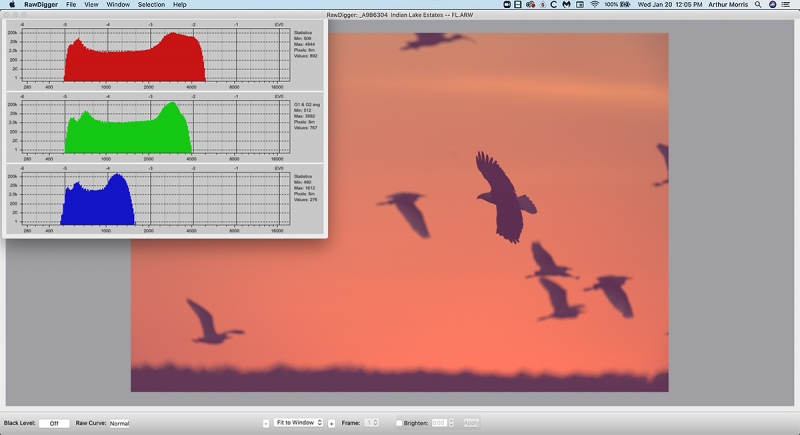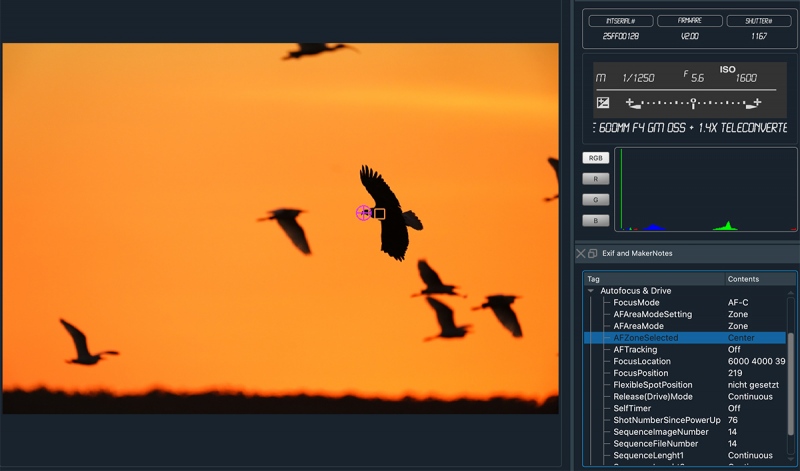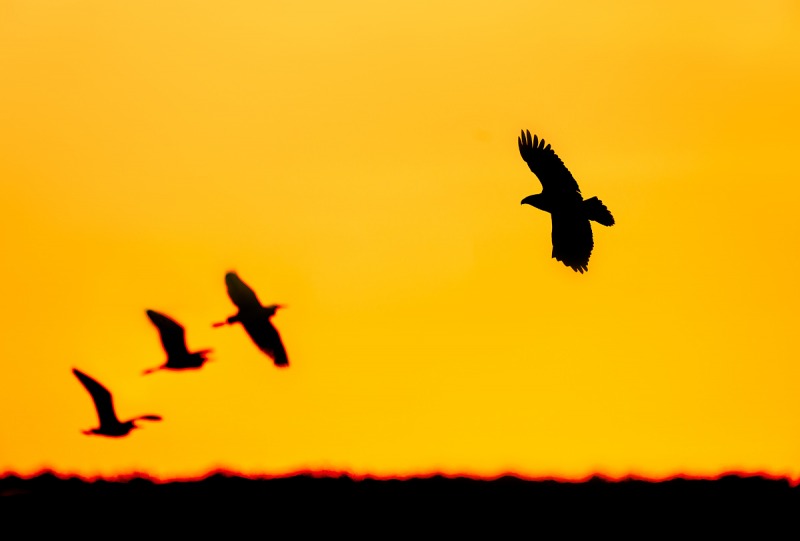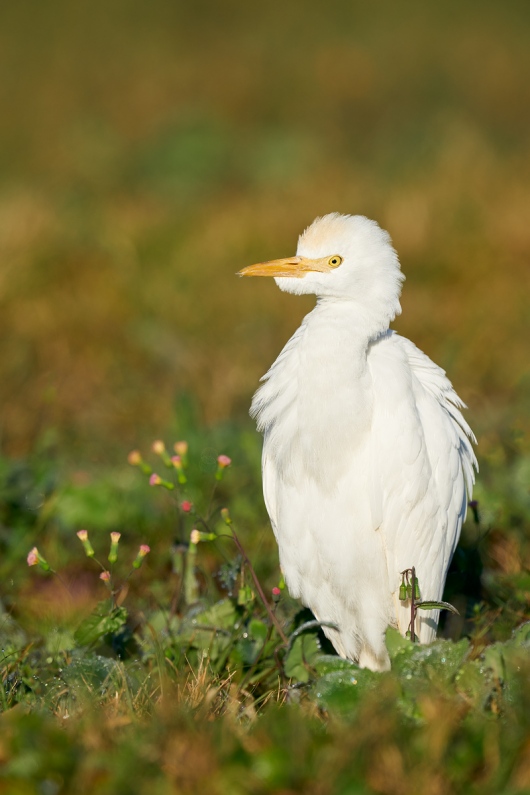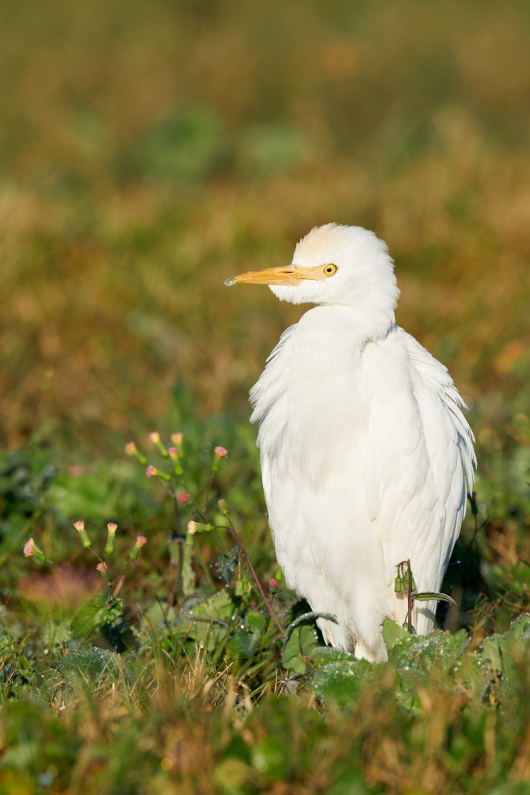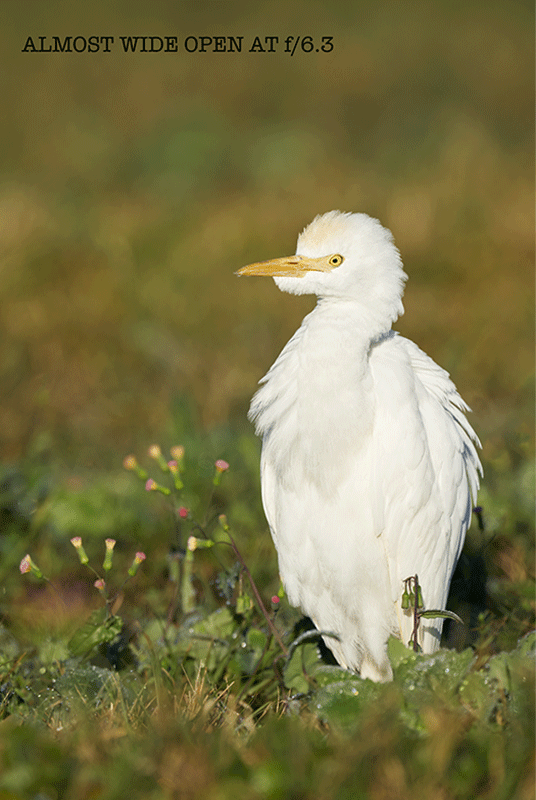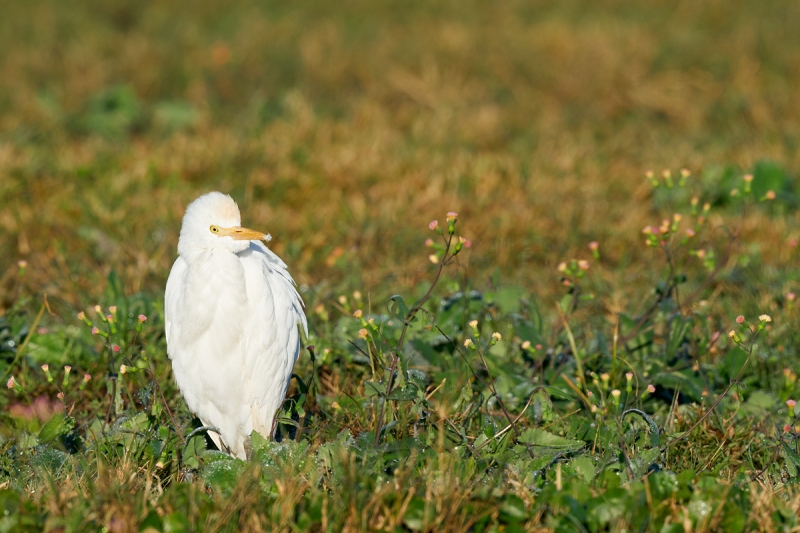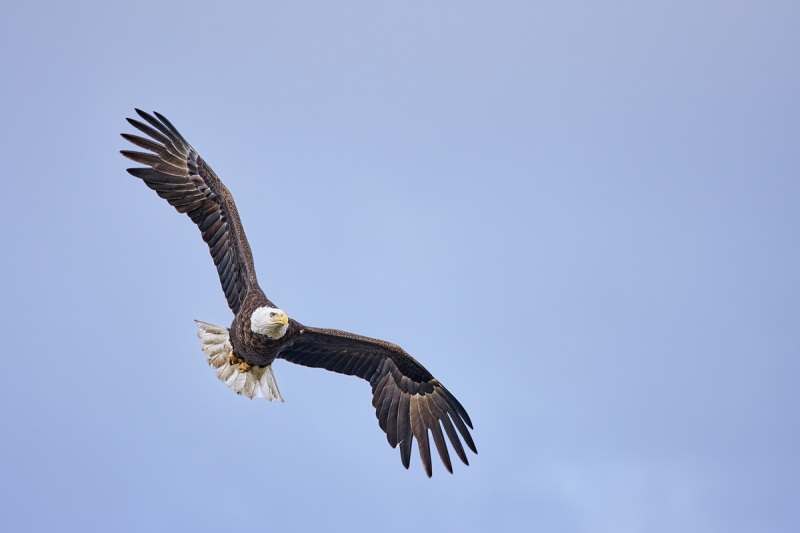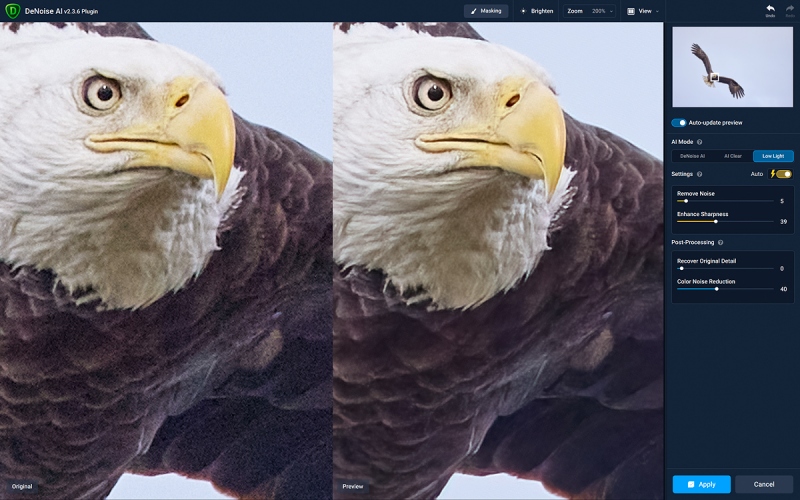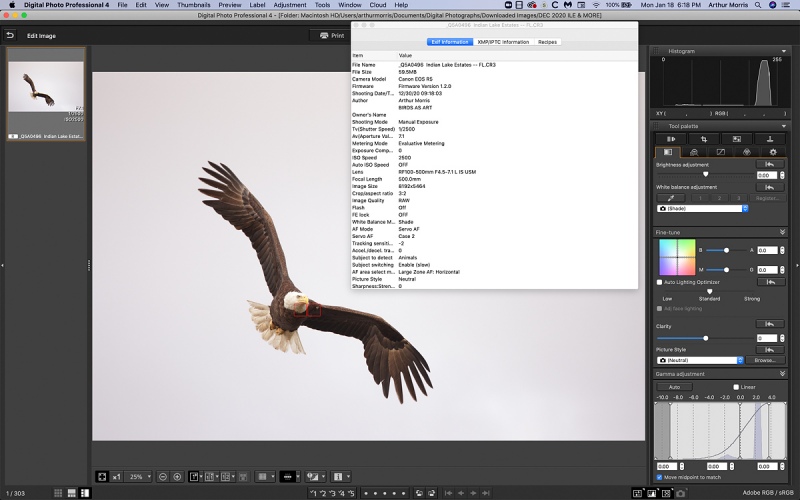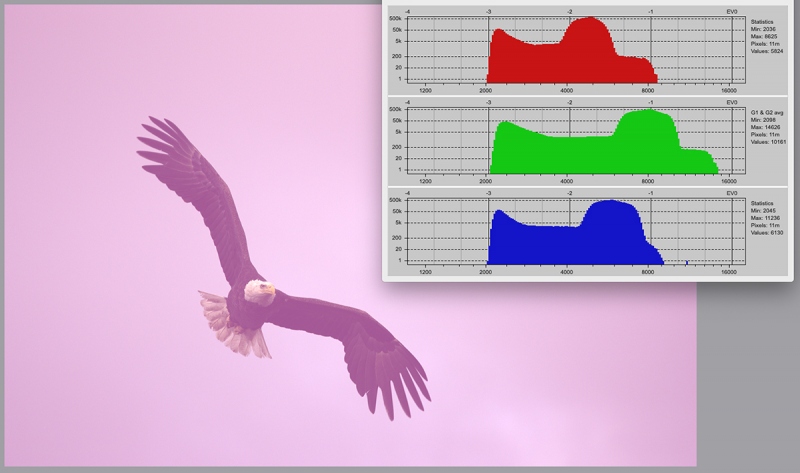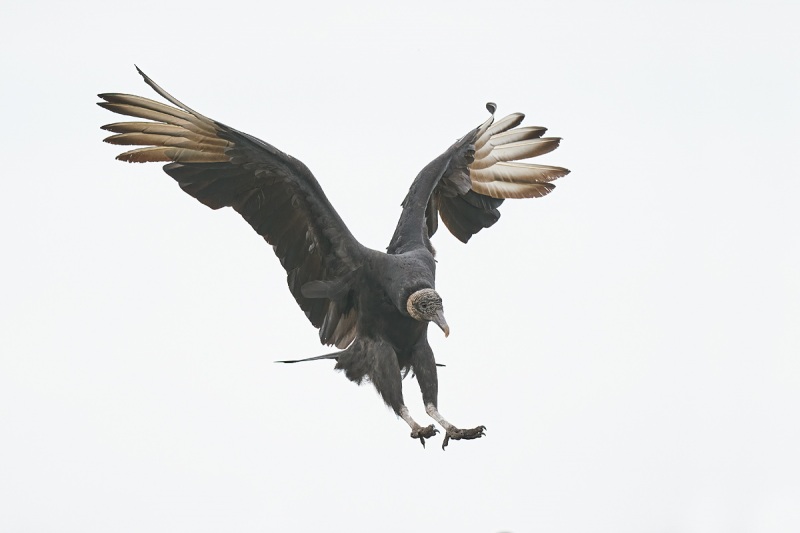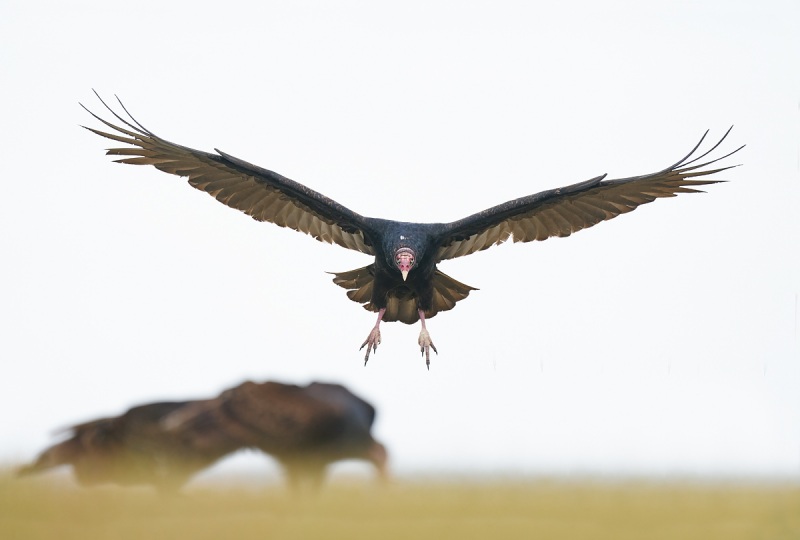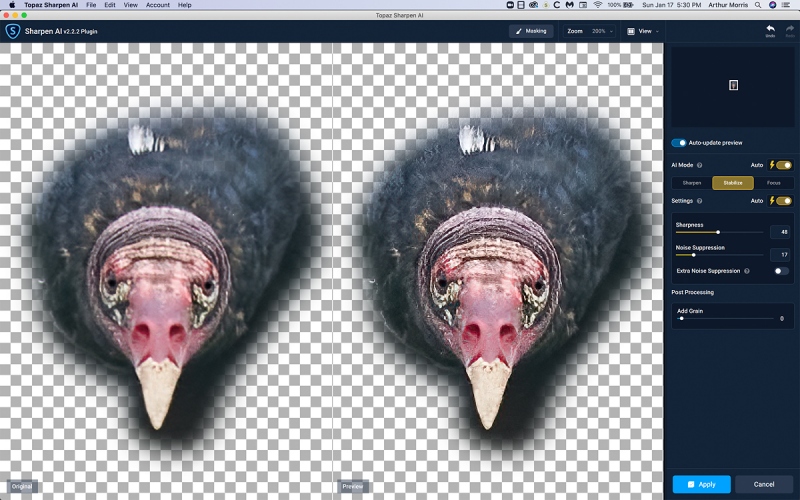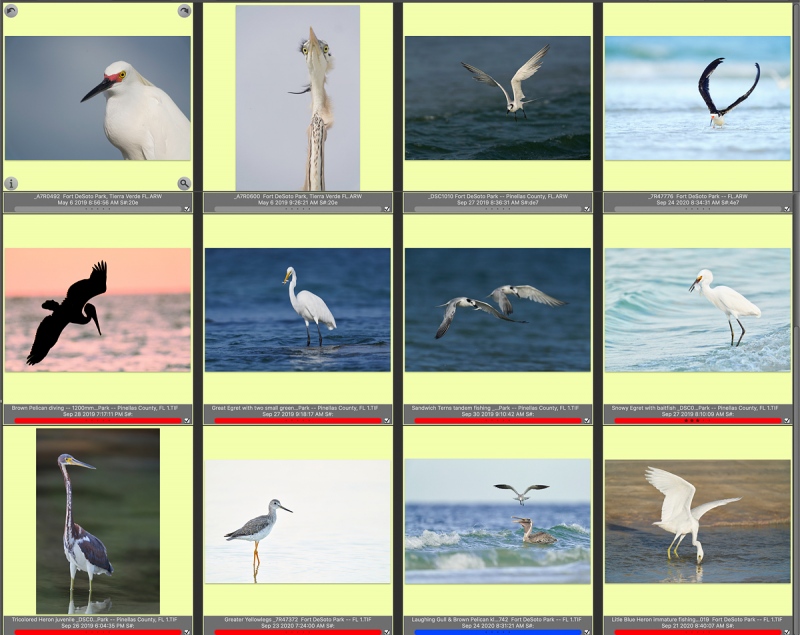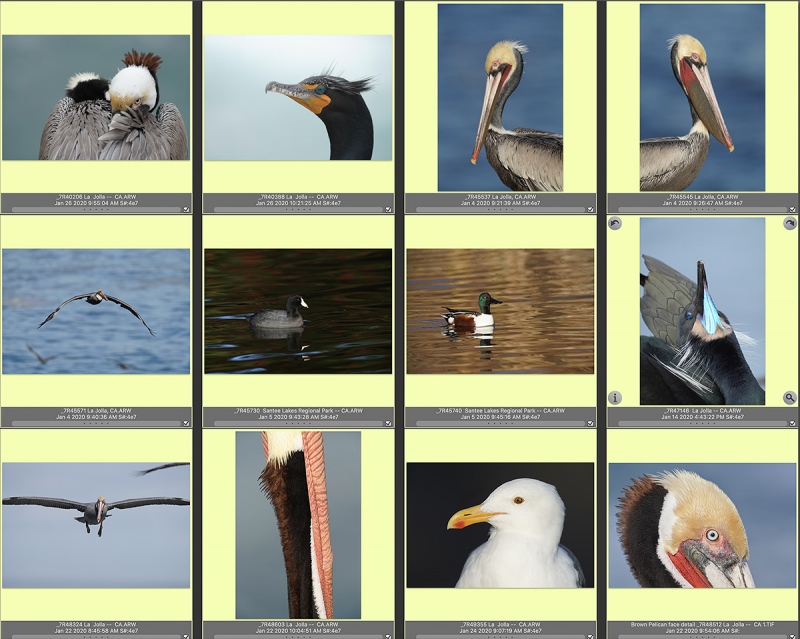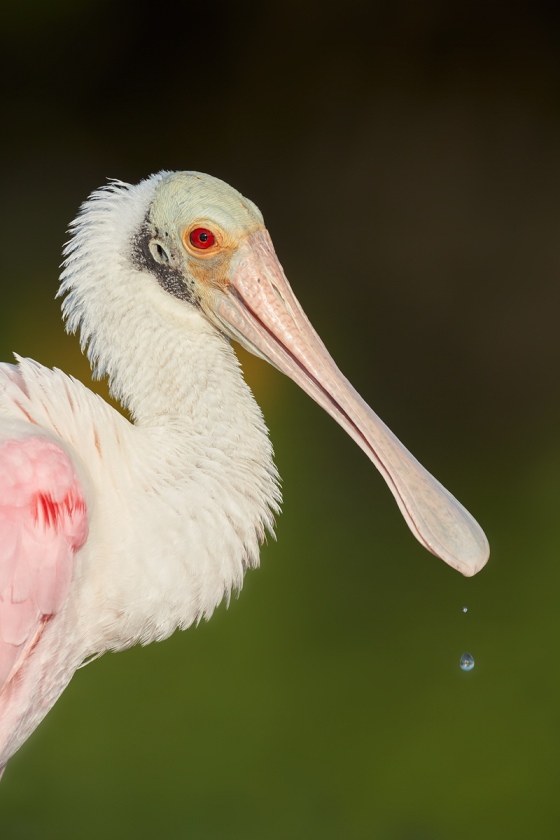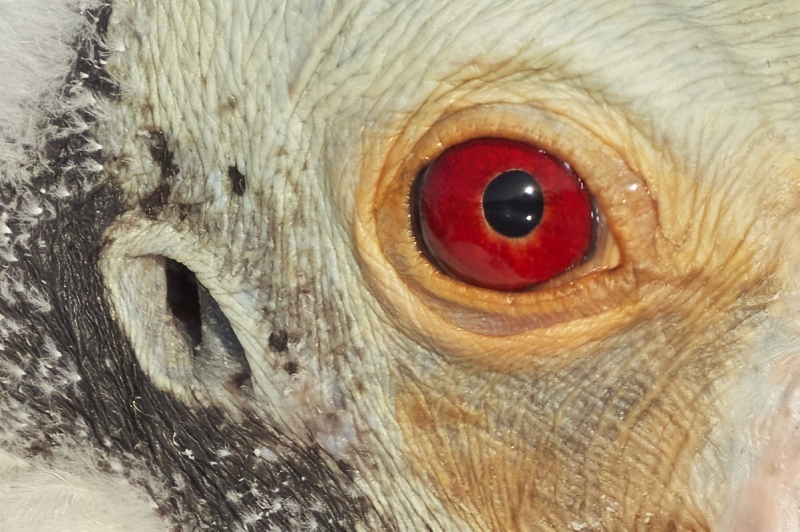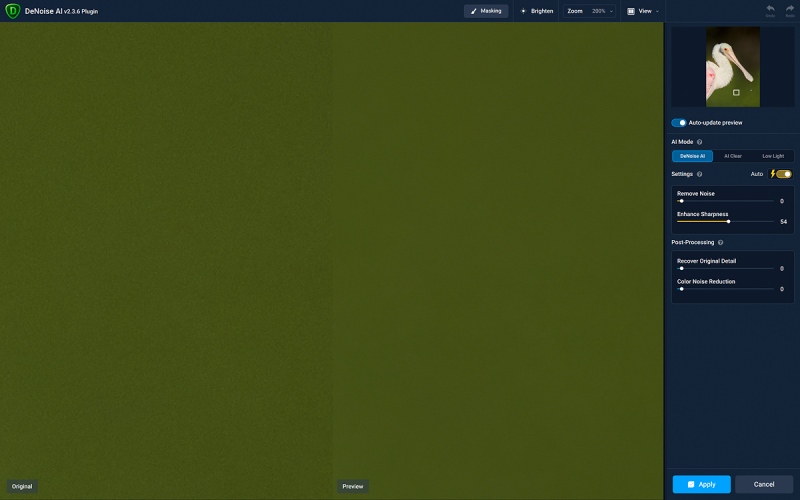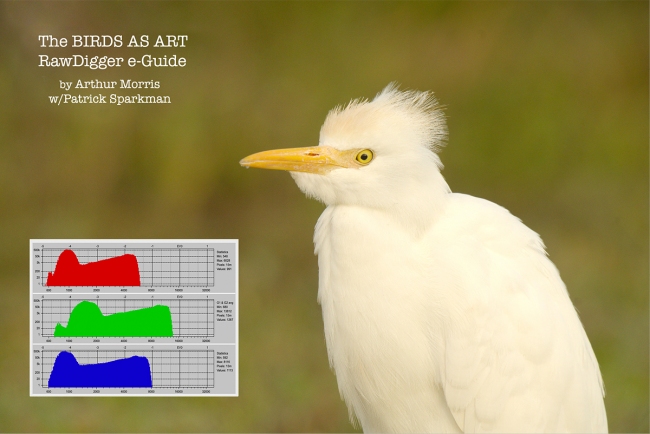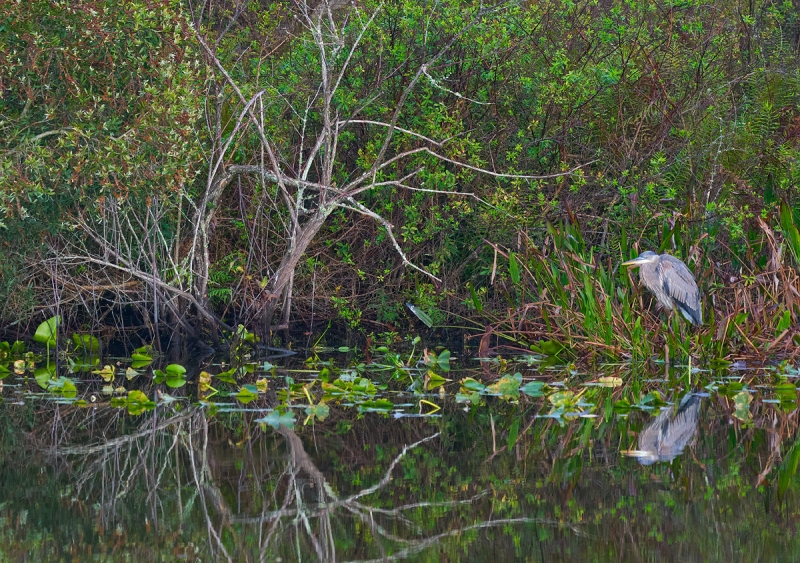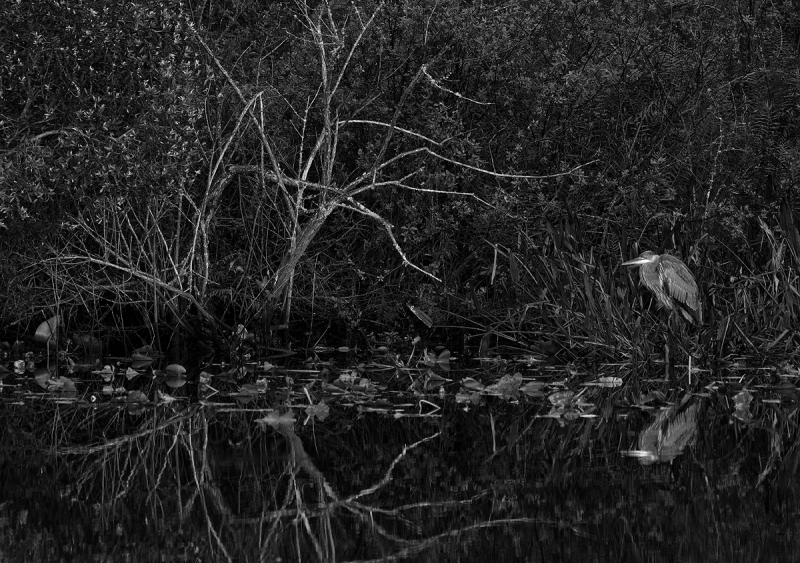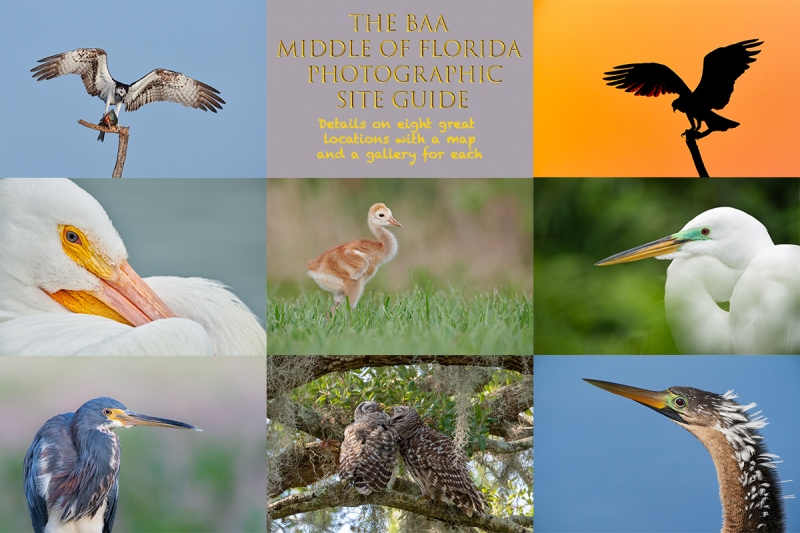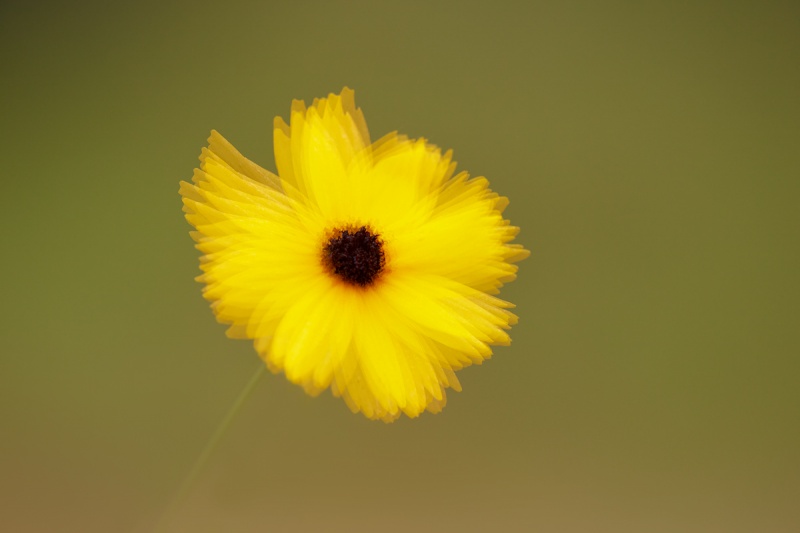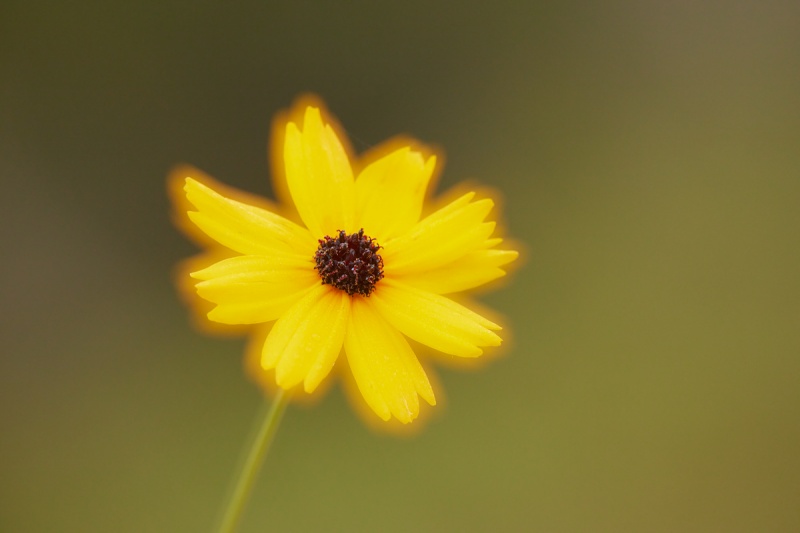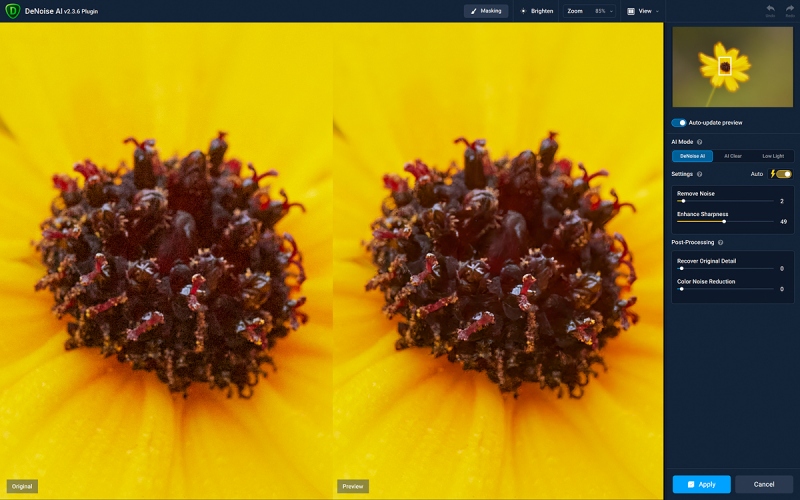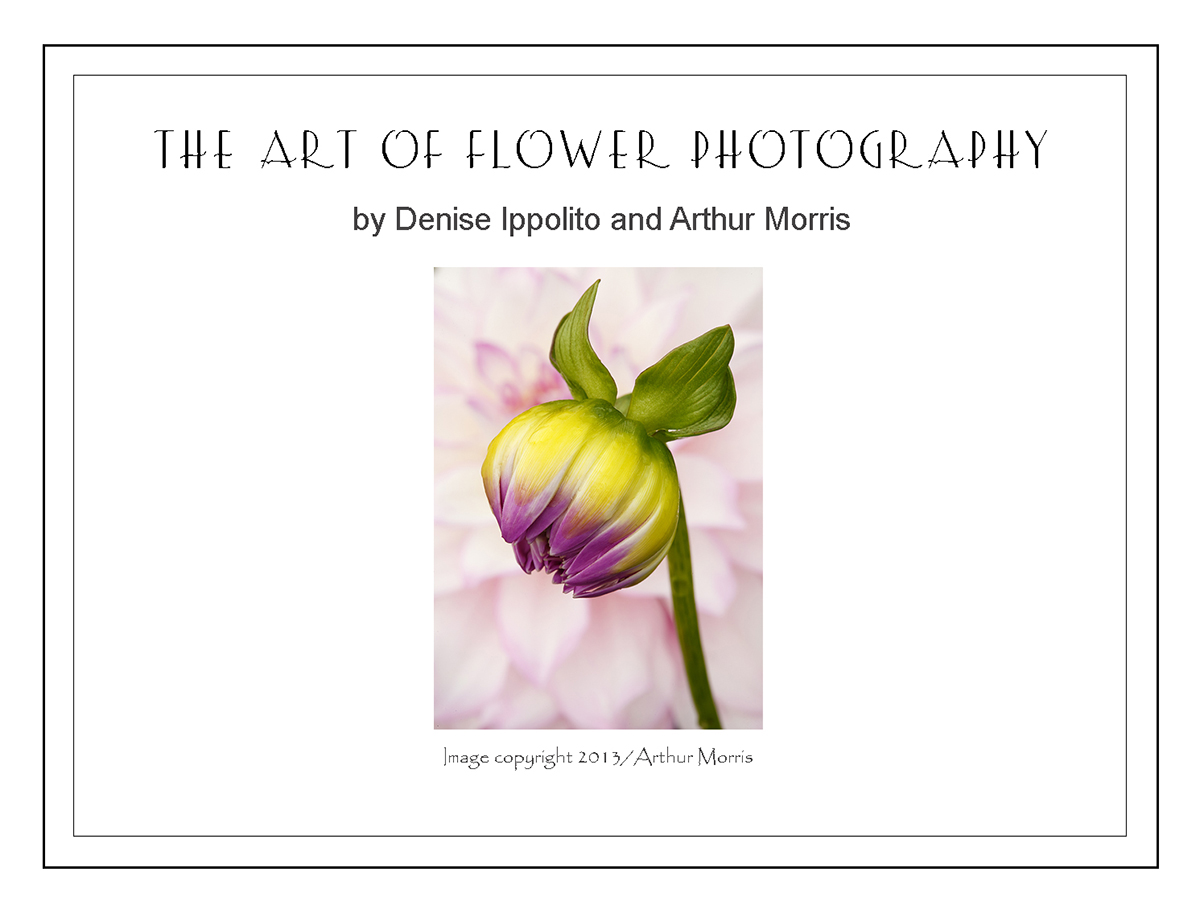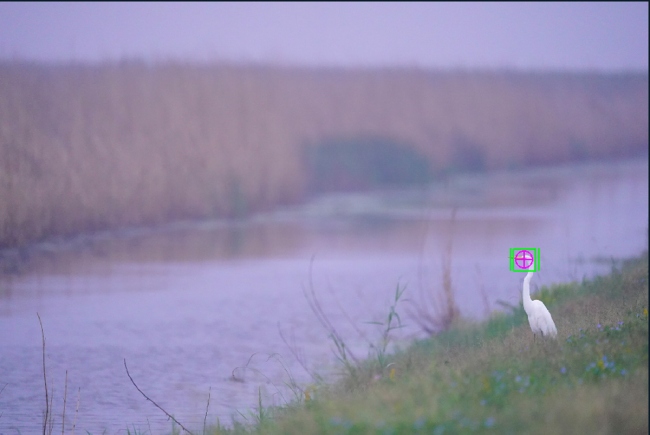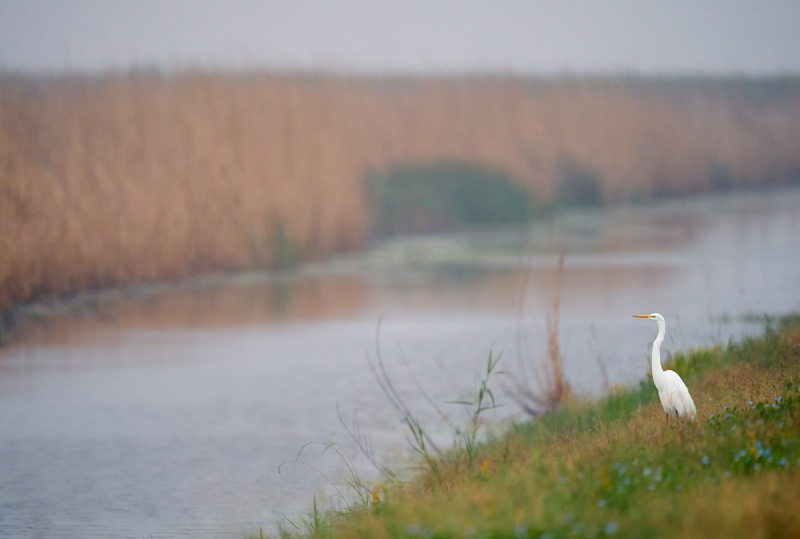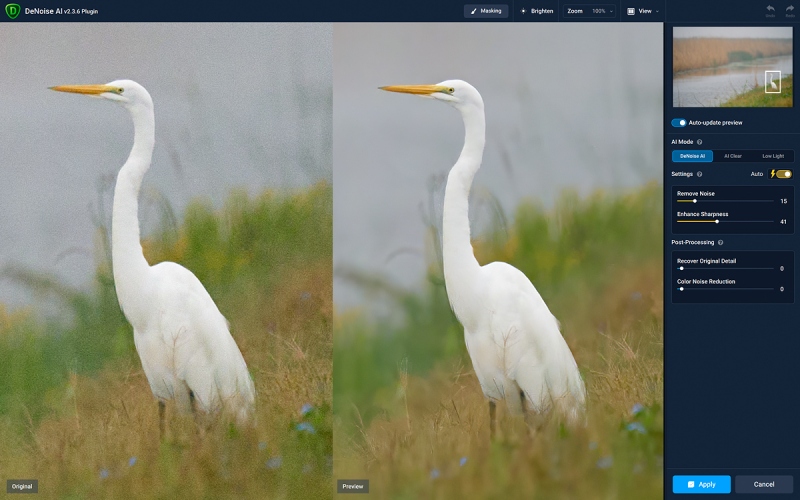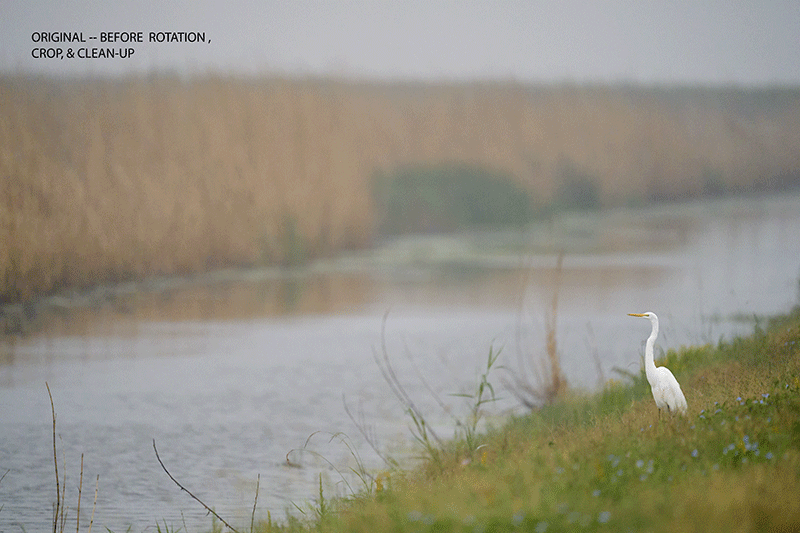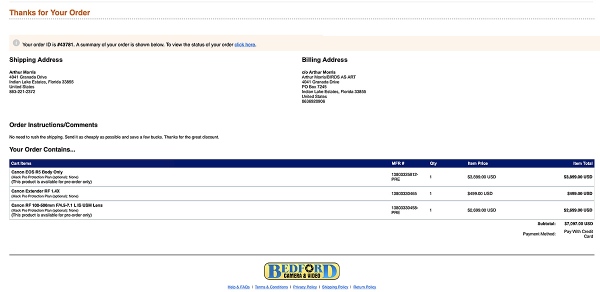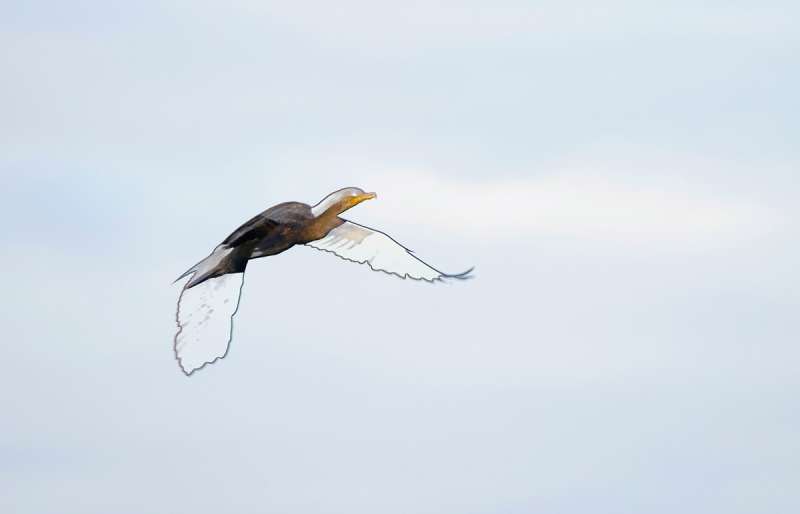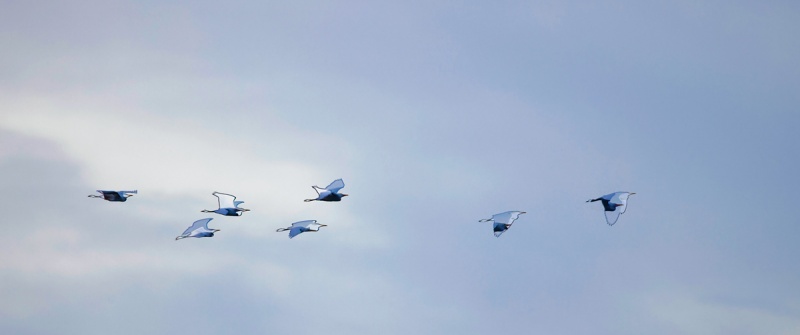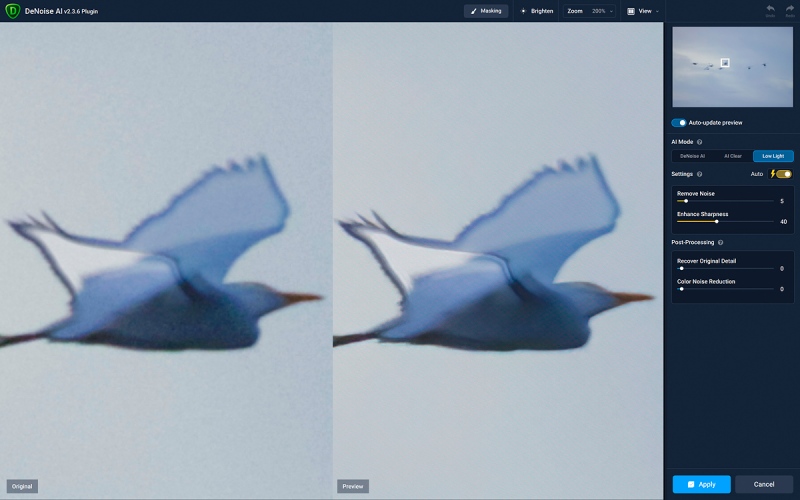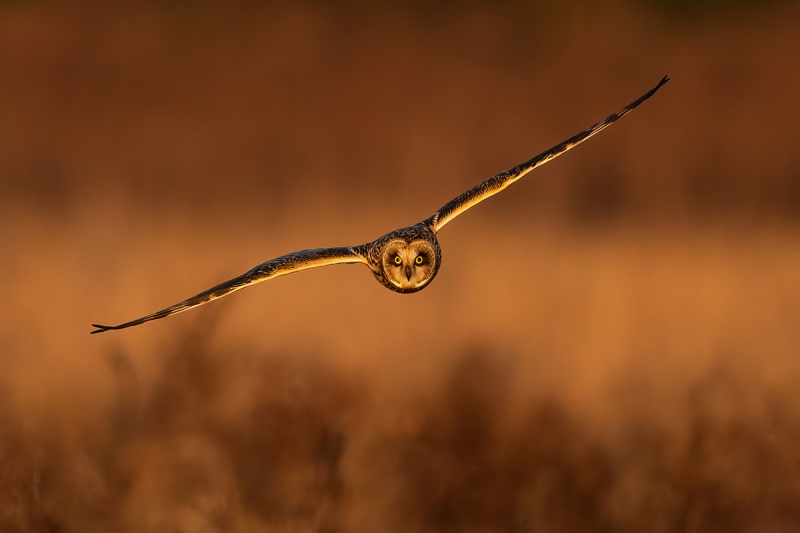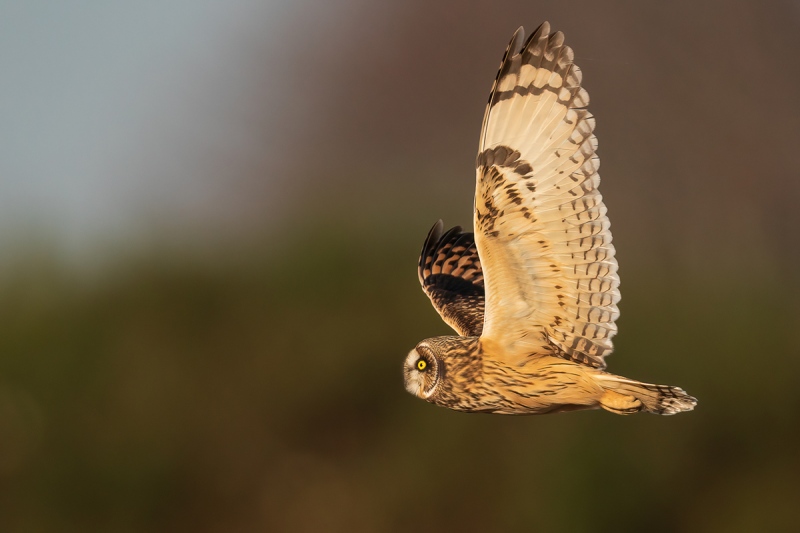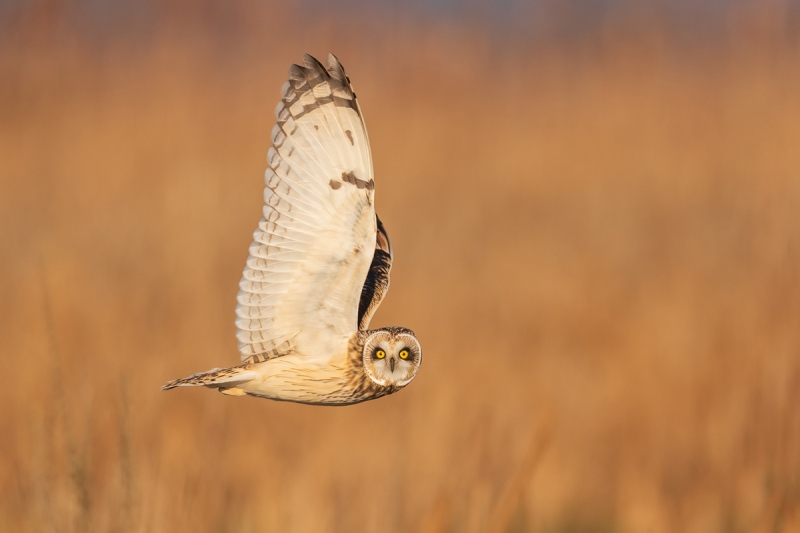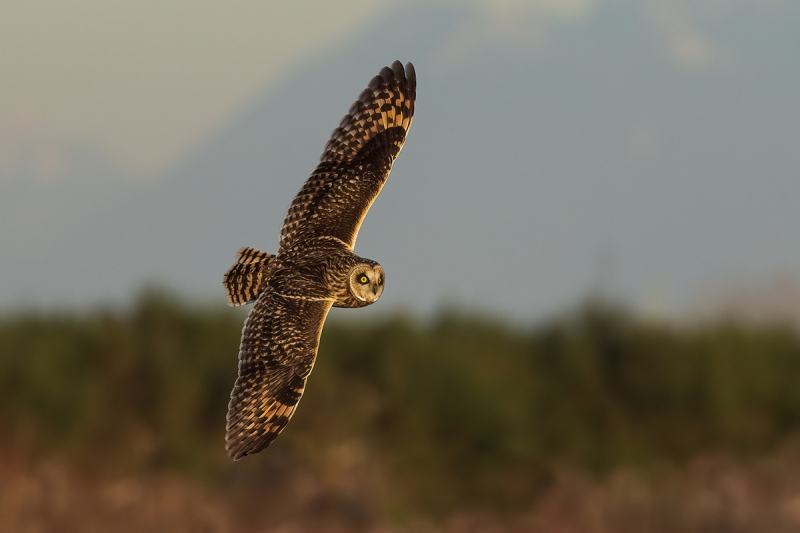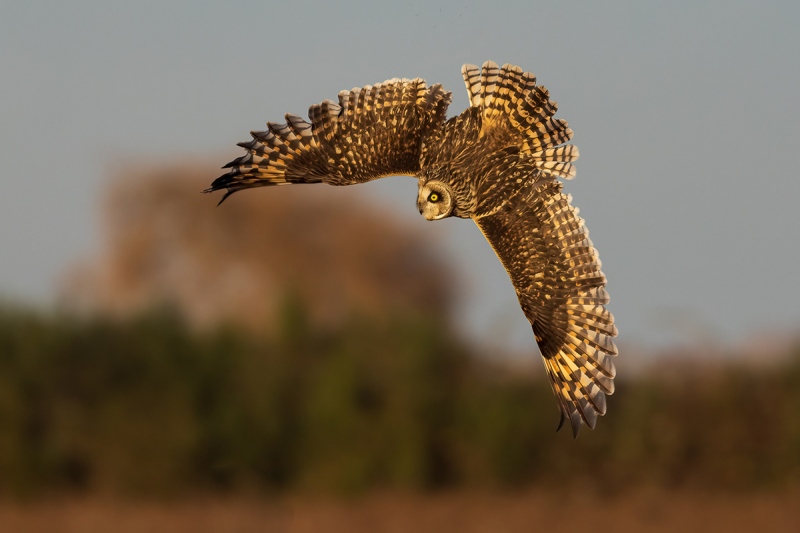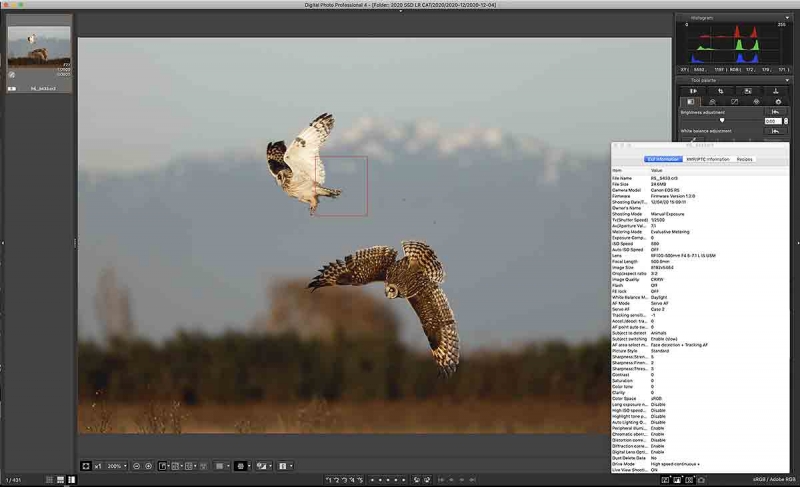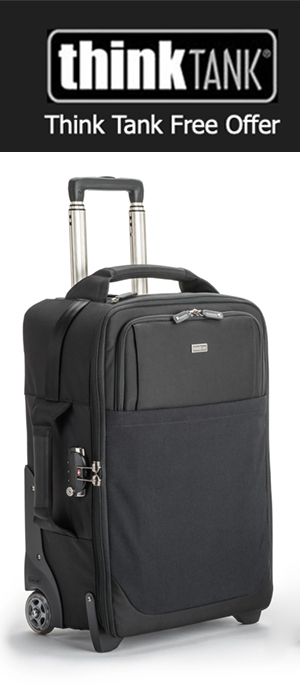January 30th, 2021 What’s Up?
Please do not confuse this short notice with Saturday morning’s Why Auto-Exposure Bracketing with Digital? Announcing the RawDigger e-Guide with Two Videos. When You Can Do This Consistently, You Will Know That You Have Exposure Down Pat! And Billy Joel, Elton John, and the Citrus Bowl blog post here.
Sony Alpha a7r IV Mirrorless Digital Camera Body
BAA Record-Low Price — Reduced $100 28 JAN 2021
BAA Record-Low Price — Reduced $100 30 JAN 2021
Arthur Morris is offering a Sony a7r IV Mirrorless Digital camera body in excellent-plus condition for the BAA record-low price of $2298.00 (was $2498.00). Many might call this one near mint, but I like to be conservative when selling my own gear. The body has only 38,497 shutter actuations on it. The sale includes the original box and everything that came in it and insured UPS ground shipping to lower-48 US addresses. In addition, I will throw in a copy of The Sony Camera User’s e-Guide and One Camera Set-up Video (a $100.00 value). Your new camera will not ship until payment clears unless other arrangements are made. PayPal +4% will guarantee same day shipping.
Please contact artie via e-mail or by phone (or text) at 1-863-221-2372 (Eastern time zone).
For the past two years you have seen the incredible detail in my a7r IV images made with a variety of SONY lenses and both teleconverters. I’ve typically used my 7r IV for about 50% of my bird photography and my a9 II in pure flight situations. As the 7r IV sells new right now for $3498.00, you can save a very cool $1100.00 by grabbing my slightly used a7r iv. Though this 61-MP body is especially attractive to landscape and macro photographers, it is great for birds as well as you can pretty much crop to your heart’s content. artie
Sony Alpha a9 ii Mirrorless Digital Camera Body
BAA Record-Low Price — Reduced $200 on 30 JAN 2021
BAA-friend and multiple IPT veteran William Schneider is offering a Sony a9 ii Mirrorless Digital camera body in like-new condition for the very low price of $3298.00 (was $3498.00). The sale includes the original box and everything that came in it and insured UPS ground shipping to lower-48 US addresses. As a favor to Bill, I will throw in a copy of The Sony Camera User’s e-Guide and One Camera Set-up Video (a $100.00 value). Your new camera will not ship until payment clears unless other arrangements are made.
Please contact Bill via e-mail or by phone (or text) at 1-262-269-8628 (Eastern time zone).
From the moment I tracked that first incoming Brandt’s Cormorant, I knew that SONY a9 series bodies featured the world’ best AF. I upgraded to the a9 ii as soon as it was released for the slightly larger body size. I currently own two of them. A new a9 ii sells for $4,498.00. You can save a very nice $1000 by grabbing Bill’s pretty much new a9 ii. Not to mention that the new Sony A1 sells for $6498.00 … artie
|
|
|
Click on the composite to view a larger version.
The best of Blackpoint Drive from Saturday morning …
|
Saturday Morning at Merritt Island NWR
While I did not have any clients on Saturday morning, and the sunrise was a bit on the bland side, the ground fog was mega and there are a zillion birds at the refuge — ducks, shorebirds, wading birds, and pelicans among others. I created 780 images using two a9 ii bodies and the following SONY lenses:
70-200mm f/2.8 GM
100-400mm f/5.6 GM
200-600 G
600 GM with the 1.4X TC
I kept 60 on the first edit. Those included some of my very favorites above. I am really excited about the rest of my stay. I had forgotten how good Black Point can be when it is great. 🙂
Best of all, I have yet to make an image from inside my vehicle! The dip-feeding Tricolored Herons were spectacular — tomorrow I will use either the 70-200 or the 100-500. Why? 200mm was often too long! I did photograph several young spoonbills right next to the road. In any case, that brings us to this:
Merritt Island NWR In-the-Field Instruction
If you would like to join me on Sunday morning or for the full day, please shoot me an e-mail immediately so that we can discuss the rates (inexpensive) and a schedule. Any telephoto or telephoto zoom lenses will do. The weather for tomorrow morning is looking great. I am open on Monday morning as well.
Your Faves?
Which two images would you like to see optimized for tomorrow’s blog post?
Typos
In all blog posts and Bulletins, feel free to e-mail or to leave a comment regarding any typos or errors.
January 29th, 2021 Merritt Island NWR In-the-Vehicle Instruction
I will be heading over to Merritt Island NWR on Friday and staying the weekend. Black Point Drive has had lots of Roseate Spoonbills and feeding sprees near the road recently. When I lived in Deltona, I visited often so I know the place well. I have a great little-known sunrise location there.
If you would like to meet me for a day or two or three of In-the-Vehicle Instruction, please e-mail immediately so that we can discuss the rates (inexpensive) and a schedule. 500 or 600mm lenses are preferred. Most of our photography will be from my vehicle. The weather for the weekend is looking good. I need to know in advance so that I can set up my car so that you can photograph from the back seat. I can only take one. Shared lodging (with your own bedroom) in my AirBnB home (FRI, SAT, and SUN nights) is available. If a private IPT sounds as if it might be something that you would enjoy, do get in touch quickly. Or call my cell at 863-221-2372. I will sign up the first to get in touch for a single session or two. Mornings will begin very early.
What’s Up?
I ran down to the lake at the last minute and did pretty well. I just looked at the images and did get a few decent ones. I thought that I was shooting at 1200mm, but the 2X TC had been in the fanny pouch of my sweatshirt. I was working at 840mm the whole time. I didn’t realize that until I headed home.
I was glad to learn yesterday that Bill Schneider sold his like-new SONY a7r iv for $2598.00 within an hour of it being listed. There is another nice a7r iv along with Bill’s like-new a9 ii on the The BAA Used Gear Page.
I was thrilled with the response to my plea for PDF help last night. Within two hours of posting, I had two perfect copies of the RawDigger e-Guide with all the links working. Thanks to the many who responded, especially to IPT veterans Bart Deamer and Muhammad Arif. They were, respectively, the first and second to the finish line.
Today is the last day that you will be able to save $10 on this guide. (See below to order by PayPal.)The guide will be in the store later today (at $51.00) and will be featured in tomorrow’s blog post on learning to create perfect, mega-Exposed-to-the-Right raw files on a consistent basis.
Today is Friday 29 January 2021. The forecast for this morning is for clear skies with gentle north winds. I will head down to the lake for a short morning session as I have lots to do getting ready to make the three-hour drive to Titusville this afternoon.
This post took more than 2 1/2 hours to prepare and makes forty days in a row with a new one. Please remember …
Please Remember
With income from IPTs now at zero, please, if you enjoy and learn from the blog, remember to use one of my two affiliate programs when purchasing new gear. Doing so just might make it possible for me to avoid having to try to get a job as a Walmart greeter and will not cost you a single penny more. And if you use Bedfords and remember to enter the BIRDSASART code at checkout, you will save 3% on every order and enjoy free second-day air shipping. In these crazy times — I am out at least forty to sixty thousand dollars so far due to COVID 19 (with lots more to come) — remembering to use my B&H link or to shop at Bedfords will help me out a ton and be greatly appreciated. Overseas folks who cannot order from the US because of import fees, duties, and taxes can always help out by clicking here if they see fit.
The Status of My Canon Gear
I began setting up my very own R5 yesterday using the R5/R6 AF e-Guide and what I have written on the BAA EOS R5 Camera user’s Guide as a — you guessed it — guide. While doing so, I made a few changes to each of those documents. I hope to do some flight photograph. with the R5/RF 100-500 this weekend at Merritt Island. The R5 Camera User’s Guide will be the most-expensive-ever Camera User’s Guide. Except for those who have used my affiliate links to purchase their Canon mirrorless gear.
|
|
RawDigger e-Guide pre-publication version
|
RawDigger e-Guide and Video Advance Copy Still Available — but not for long!
Save $10 Now
The RawDigger e-Guide and Video is almost finished. It will sell for $51.00. If you are anxious to get started with RawDigger, learn to mega-Expose to the Right, and wind up with the highest quality image files, you can save $10.00 and have a chance to review a recently updated pre-publication version of the guide by sending a PayPal for $41.00 to birdsasart@verizon.net with the words RawDigger e-Guide and Video Pre-publication Copy cut and pasted into the Subject line. The recent delay is the result of my recent conversations with Iliah Borg, the brains behind RawDigger. It is very likely that the Shock-your-World section will shock you.
In the new guide, we teach you why the GREEN channel is almost always the first to over-expose. We teach you how to interpret the Max G values. And most recently, we teach you a simple way to evaluate your exposures using an adapted RawDigger histogram. And tons more, of course. I am planning on having the completed RawDigger e-Guide ready for sale by this coming Wednesday. Folks who saved $10.00 by pre-ordering will of course receive a link to the final PDF.
|
|
|
134 sold to rave reviews.
The SONY e-Guide by Patrick Sparkman and Arthur Morris
|
The Sony Camera User’s e-Guide (and Videos)
Click here to purchase the guide with one Camera Set-up Video. Be sure to e-mail us by clicking here to specify your camera body so that we can send you a link for the correct video.
Click here to purchase the guide with two Camera Set-up Videos. Be sure to e-mail us by clicking here to specify your two camera bodies so that we can send you links for the correct videos.
Click here to learn more about the SONY e-Guide.
Folks who have used my B&H affiliate links or purchased their SONY gear are invited to e-mail for discount information.
Great Topaz News!
Folks who use the BAA Topaz link to purchase Sharpen AI, DeNoise AI, or the Utility Bundle (or any other Topaz plugins) will receive a 15% discount by entering the ARTHUR15 code at checkout. To get the discount you must use my link and you must enter the discount code. Be sure to start with this link.
Topaz Stuff
As I said just a while back and have said often many times before, I should have listened sooner. If you, like me, are new to the Topaz party, please use this link to purchase. Right now I can wholeheartedly recommend both Topaz Sharpen AI and Topaz DeNoise AI. Though I have not yet worked with JPEGtoRAW AI or Gigapixel AI, I have installed both of these plug-ins and look forward to trying them on some I-Phone 11 images fairly soon. If you are thinking like me, consider the Utility Bundle that includes all four plug-ins mentioned above at a money-saving price.
Again, those who purchase Sharpen AI or DeNoise AI using my link and then entering the ARTHUR15 code at checkout can e-mail to request a short Getting Started with Topaz e-Guide. Please include a copy of your Topaz receipt that shows the discount. I had a bit of trouble getting the two plug-ins installed and having them appear in the Photoshop Filter Menu. In addition, I will explain how to best learn about the two plug-ins by applying them on a Layer (in Photoshop).
New and Better Bedfords Discount Policy!
You can now save 3% on all of your Bedfords photo gear purchases by entering the BIRDSASART coupon code at checkout. Your discount will be applied to your pre-tax total. In addition, by using the code you will get 2nd day air shipping via Fed Ex.
Grab a Nikon AF-S Teleconverter TC-14E III and save $14.99. Purchase a Canon EOS R5 and your discount will be $116.97. Purchase a Sony FE 600mm f/4 GM OSS lens and save a remarkable $389.94! Your Bedford’s purchase no longer needs to be greater than $1,000.00 for you to receive a discount. The more you spend, the more you save.
Money Saving Reminder
Many have learned that if you need a hot photo item that is out of stock at B&H and would enjoy free overnight shipping, your best bet is to click here, place an order with Bedfords, and enter the coupon code BIRDSASART at checkout. If an item is out of stock, contact Steve Elkins via e-mail or on his cell phone at (479) 381-2592 (Central time). Be sure to mention the BIRDSASART coupon code and use it for your online order to save 3% and enjoy free 2nd-day air shipping. Steve has been great at getting folks the hot items that are out of stock at B&H and everywhere else. The wait lists at the big stores can be a year or longer for the hard to get items. Steve will surely get you your gear long before that. For the past year, he has been helping BAA Blog folks get their hands on items like the SONY a9 ii, the SONY 200-600 G OSS lens, the Canon EOS R5, the Canon RF 100-500mm lens, and the Nikon 500mm PF. Steve is personable, helpful, and eager to please.


Gear Questions and Advice
Too many folks attending BAA IPTs (remember those?) and dozens of photographers whom I see in the field and on BPN, are–out of ignorance–using the wrong gear especially when it comes to tripods and more especially, tripod heads… Please know that I am always glad to answer your gear questions via e-mail. Those questions might deal with systems, camera bodies, accessories, and/or lens choices and decisions.
|
|
|
This image was created at Indian Lake Estates, FL on 26 January 2021. Lying down on the ground, I used the handheld Sony FE 100-400mm f/4.5-5.6 GM OSS lens (at 400mm) and the blazingly fast AF King, the Sony Alpha a9 II Mirrorless Digital camera body. Exposure was determined by Zebras with ISO on the rear dial. ISO 2000: 1/500 sec. at f/7.1 (stopped down 2/3-stop) in Manual mode was shown to be prefect in RawDigger. AWB at 9:39am in the shade (thus the high ISO).
Tracking Flexible Spot M AF-C was active at the moment of exposure an performed perfectly.
Image #1: Peninsular Cooter (Pseudemys peninsular)/head portrait
|
My New Lady Friend
On my second visit of the morning to the vulture tree last Tuesday — the eclectic morning of photography, I noticed a large turtle on the right side of Banyan Drive, a street with views of the lake that runs parallel to the lakeshore. I pulled over onto the grass to investigate, and saw quickly that she was completing the job of covering the eggs she had just laid. Though she seemed very tame, I began with the 600GM lens at 840mm. Those images were terrible. So I went back to my SUV and switched out the big lens for the smaller, lighter, closer-focusing 100-400. First I tried sitting but those images were terrible. So I got doe flat on my belly, supported the rigs with my elbows as a bipod, and went to work. The now-distant BKGR was much, much better.
Big turtles like this are normally very shy. If you approach them closely, they will pull their heads into their shells and not come out for a week. But this large creature — I estimated her to be at least 16 inches long and about five or six pounds. (When she finished, she had started to cross the road to head for the lake. So I picked her up and walked her a ways toward the lake to make sure that she would not become turtle soup …)
After momma turtles lay their eggs, they make their way back to the lake. If any of their offspring survive — predation by raccoons, armadillos, and opossums is very high, especially in populated areas — momma turtle will never see her kids again. And it is pretty likely that I will never see my new lady friend again either. It was great spending an hour with her.
Thanks Matthew!
The breadth of knowledge and skills of the folks who visit the blog regularly no longer amazes me. Nor does their willingness to share so freely. Huge thanks to Matthew Milnes not only for helping me identify the big lady turtle, but for sharing his extensive knowledge of turtle natural history with me. Matt, married with two little one — 3 and 6 years old, lives in Milledgeville, GA where he is a biology professor at Georgia College. He grew up in Clearwater, Florida (not far from Fort DeSoto) and has spent his career studying the physiology of reptiles.
Years ago, he took a few trips to places like Merritt Island NWR and the Outer Banks. From those outings morphed a desire to photograph wading birds, waterfowl, and shorebirds. In a typical year he’d make two or three coastal trips to photograph birds to places somewhat connected to his job. He does, however, have lots of chances to photographing snakes, lizards, frogs, and salamanders.
From Matt I learned that this individual was nesting very early and that the rates of embryonic development in reptiles are temperature-dependent. There is, therefore, usually a broad range of incubation periods. I learned that the range of incubation time for this species is from 60-150 days — about 60 days would be for eggs laid in the summer, and probably close to 150 days for eggs laid in December. And I learned that some hatchlings of this species are known to overwinter in the nest if they hatch in late fall! Based on his prior experience incubating turtle eggs, the time of year, and my location, Matt would guesstimate that the eggs would hatch in 3-4 months.
Quasi-Macro (Handholding) Tips
- 1- First off, handholding gives you much greater freedom in getting into the best position and choosing the perfect perspective than working on a tripod.
- 2- When lying down, making sure that your image is square-to-the-world is a challenge. It is easy to get skewed and wind up as much as five degrees off level. By turning on and paying attention to the in-viewfinder level (if your camera has one), you avoid having to rotate and crop in post-processing.
- 3- It is imperative that you keep your rig perfectly still by whatever means (in this case, the elbow bipod). Be sure also, to set your IS/OSS switch to mode 1.
|
|
|
Click on the image to enjoy a larger version.
Image #1A: An unsharpened 100% crop of the Peninsular Cooter head portrait
|
The Eye of the Turtle
Like the Canon 100-500, the SONY 100-400 is fantastic for close work with tame subjects. As with the Canon 100-400 II, the magnification with the SONY 100-400 (at 400mm) is actually greater than the magnification of the RF 100-500 at 500mm. That is possible because is focuses proportionately closer. In any case, the incredible sharpness of the eye in today’s featured image is due to several factors:
- 1- By getting on the ground and using my elbows as a bipod, I was able to keep the rig completely still.
- 2- I remembered to set the OSS (Optical Stabilization System) switch to Mode 1, best for static subjects.
- 3- The sharpness of the SONY 100-400 optics.
- 4- I stopped down 2/3-stop for just a bit of extra d-o-f (depth-of-field). Doing this when working at point-blank-range is always a good plan.
The Image Optimization and Clean-up
After converting the raw file in Capture One, I brought it into Photoshop and applied a layer of Topaz DeNoise Low Light on Auto. Because I had mega-Exposed-to-the-Right, background noise was minimal. For the image clean-up I used my usual cadre of clean-up techniques and tools: Divide and Conquer– with help from the Clone Stamp Tool, the Patch Tool, Content-Aware Fill, and several small transformed Quick Masks often refined by a Regular Layer Mask.
Note that the bit of posterization in the background is the result of the creation of the Animated GIF. It is not present in the master file or in the JPEG above (Image #1).
Feel free to leave a comment revealing your thoughts on the image clean-up.
|
|
The BIRDS AS ART Current Workflow e-Guide (Digital Basics II).
You can order your copy from the BAA Online Store here, by sending a PayPal for $40 here, or by calling Jim or Jennifer weekdays at 863-692-0906 with your credit card in hand. Be sure to specify Digital Basics II.
|
The BIRDS AS ART Current Workflow e-Guide (Digital Basics II)
The clean-up techniques mentioned above and many dozen additional Photoshop tips and techniques (with the exception of Capture One RAW Conversions) — along with all of my personalized Keyboard Shortcuts — are covered in detail in the BIRDS AS ART Current Workflow e-Guide (Digital Basics II), an instructional PDF that is sent via e-mail. Learn more and check out the free excerpt in the blog post here. While the new e-Guide reflects my MacBook Pro/Photo Mechanic/DPP 4/Photoshop workflow, folks using a PC and/or BreezeBrowser will also benefit greatly by studying the material on DB II. Note: folks working on a PC and/or those who do not want to miss anything Photoshop may wish to purchase the original Digital Basics along with DB II while saving $15 by clicking here to buy the DB Bundle.
Folks who learn well by following along rather than by reading can check out the complete collection of MP 4 Photoshop Tutorial Videos by clicking here. Note: all of the videos are now priced at an amazingly low $5.00 each.
You can learn how and why I used to convert all of my Canon digital RAW files in DPP 4 in the DPP 4 RAW Conversion Guide here. More recently, I became proficient at converting my Nikon RAW (NEF) files in Adobe Camera Raw. About two years ago I began converting my Nikon and Sony RAW files in Capture One Pro 12 and continue to do so today (along with my R5 images).
To purchase Capture One, please use this link. Then you can learn more about Capture One in the Capture One Pro 12 Simplified MP4 Video here. The next step would be to get a copy of Arash Hazeghi’s “The Nikon Photographers’ Guide to Phase One Capture One Pro e-Guide” in the blog post here.
You can learn advanced Quick Masking and Layer Masking techniques in APTATS I & II. You can save $15 by purchasing the pair.
Typos
In all blog posts and Bulletins, feel free to e-mail or to leave a comment regarding any typos or errors.
January 28th, 2021 This Just In!
Several folks offered to help create the PDF. IPT veteran Bart Deamer, who was instrumental in helping us improve various drafts of the RawDigger e-Guide, was Johnny-on-the-spot and sent me a link to his perfect PDF will all links working properly at 6:43pm. Then, IPT veteran Muhammad Arif did the same; his link arrived at 6:57pm. Considering that I did not publish my plea for help until after 5:00pm, the above is quite amazing. And greatly appreciated.
The folks on the blog are routinely generous in sharing their skills and expertise and as you will see in tomorrow’s blog post, the breadth of knowledge of the community as a whole is astounding. And appreciated!
What’s Up?
With clear skies and northwest winds this morning, photography was lousy as expected. I did, however, get a few nice frames of an Osprey on the ground that will make the blog.
PDF Help Needed
I have the RawDigger MS Word (for Mac) document completed. All of the hyper-links were created correctly and show as active links in the Word file. It is 743MB. I finally got it uploaded to Hightail. The problem is that when I create the PDF in MS Word most of the links do not work. This problem has been discussed ad nauseam on the web with zero solutions and Microsoft claiming innocence. When I bring the file into the office and Jim attempts to create the PDF — an approach that has worked for us before, his Word (for Windows) says “this file is too large to open.”
So, I am looking for someone who as Adobe Acrobat Pro (or some other high-end PDF creator), to create the PDF for me with all the hyper-links working. That of course in exchange for a free copy of the RawDigger e-Guide.
If you can help, or at least try to help, please shoot me an a href=”mailto:samandmayasgrandpa@att.net”>e-mail and I will send you a link to the MS Word file.
Merritt Island NWR In-the-Vehicle Instruction
I will be heading over to Merritt Island NWR on Friday and staying the weekend. Black Point Drive has had lots of Roseate Spoonbills and feeding sprees near the road recently. When I lived in Deltona I visited often do I know the place well. I have a great little-known sunrise location there.
If you would like to meet me for a day or two or three of In-the-Vehicle Instruction, please e-mail immediately so that we can discuss the rates (inexpensive) and a schedule. 500 or 600mm lenses are preferred. Most of our photography will be from my vehicle. The weather for the weekend is looking good. I need to know in advance so that I can set up my car so that you can photograph from the back seat. I can only take one. Shared lodging (with your own bedroom) in my AirBnB home (FRI, SAT, and SUN nights) is available. If a private IPT sounds as if it might be something that you would enjoy, do get in touch quickly. Or call my cell at 863-221-2372. I will sign up the first to get in touch for a single session or two. Mornings will begin very early.
January 28th, 2021 Merritt Island NWR In-the-Vehicle Instruction
I will be heading over to Merritt Island NWR on Friday and staying the weekend. Black Point Drive has had lots of Roseate Spoonbills and feeding sprees near the road recently. When I lived in Deltona ,I visited often, so I know the place well. I have a great little-known sunrise location there.
If you would like to meet me for a day or two or three of In-the-Vehicle Instruction, please e-mail immediately so that we can discuss the rates (inexpensive) and a schedule. 500 or 600mm lenses are preferred. Most of our photography will be from my vehicle. The weather for the weekend is looking good. I need to know in advance so that I can set up my car so that you can photograph from the back seat. I can only take one. Shared lodging (with your own bedroom) in my AirBnB home (FRI, SAT, and SUN nights) is available. If a private IPT sounds as if it might be something that you would enjoy, do get in touch quickly. Or call my cell at 863-221-2372. I will sign up the first to get in touch for a single session or two. Mornings will begin very early.
What’s Up?
I have another few hours work on the RawDigger Guide. I should have it complete and in the BAA Online Store by Thursday. I did make it out at sunset on Wednesday and took a few not-too-good images. After seeing yesterday’s exciting blog post, many folks ordered their Sony Alpha a1 bodies from B&H or Bedfords using the BAA affiliate links or discount code. Huge thanks to all of those folks, each of whom who will be enjoying a free copy of the BAA Sony Alpha a1 Camera User’s Guide before we know it.
Today is Thursday 28 January 2021. A cold front is coming through tonight; this morning is supposed to be sunny with NW winds. Knowing that that is a very bad forecast for morning bird photography, I will go down to the lake for a bit. I began setting up my Canon R5 this afternoon so that I can do some flight photography along Black Point Drive this weekend. 🙂
I was pleased to learn of the sale of Tom Mast’s Canon EF 300mm f2.8L IS II USM lens in like-new condition for a very low $3399.00 the first day it was listed earlier this month. If you have been wanting to get into SONY mirrorless but cannot afford the new Alpha a1, there are three great low-priced options for you below.
This blog past makes thirty-nine days in a row with a new blog post. This one took about 2 1/2 hours to prepare. Please remember …
Please Remember
With income from IPTs now at zero, please, if you enjoy and learn from the blog, remember to use one of my two affiliate programs when purchasing new gear. Doing so just might make it possible for me to avoid having to try to get a job as a Walmart greeter and will not cost you a single penny more. And if you use Bedfords and remember to enter the BIRDSASART code at checkout, you will save 3% on every order and enjoy free second-day air shipping. In these crazy times — I am out at least forty to sixty thousand dollars so far due to COVID 19 (with lots more to come) — remembering to use my B&H link or to shop at Bedfords will help me out a ton and be greatly appreciated. Overseas folks who cannot order from the US because of import fees, duties, and taxes can always help out by clicking here if they see fit.
The BAA Used Gear Page
The Used Gear page continues to be very active. The BAA Used Gear Page is the place to sell your used photographic equipment. We will help you to get your gear sold quickly for 20 to 60% or more than what the big guys are offering … Doubt me? Check out the Recent Sales list for the past eleven months at the bottom of the page.
New Listings
Sony Alpha a7r IV Mirrorless Digital Camera Body
Sold in one hour!
BAA-friend and multiple IPT veteran William Schneider is offering a Sony a7r IV Mirrorless Digital camera body in like-new condition for the very low price of $2598.00. The sale includes the original box and everything that came in it and insured UPS ground shipping to lower-48 US addresses. As a favor to Bill, I will throw in a copy of The Sony Camera User’s e-Guide and One Camera Set-up Video (a $100.00 value). Your new camera will not ship until payment clears unless other arrangements are made.
Please contact Bill via e-mail or by phone (or text) at 1-262-269-8628 (Eastern time zone).
For the past two years you have seen the incredible detail in my a7r IV images made with a variety of SONY lenses and both teleconverters. I’ve typically used my 7r IV for about 50% of my bird photography and my a9 II in pure flight situations. As the 7r IV sells new right now for $3498.00, you can save a cool $900.00 by grabbing Bill’s pretty much new a7r iv. Though this 61-MP body is especially attractive to landscape and macro photographers, it is great for birds as well as you can pretty much crop to your heart’s content. artie
Sony Alpha a9 ii Mirrorless Digital Camera Body
BAA-friend and multiple IPT veteran William Schneider is offering a Sony a9 ii Mirrorless Digital camera body in like-new condition for the very low price of $3498.00. The sale includes the original box and everything that came in it and insured UPS ground shipping to lower-48 US addresses. As a favor to Bill, I will throw in a copy of The Sony Camera User’s e-Guide and One Camera Set-up Video (a $100.00 value). Your new camera will not ship until payment clears unless other arrangements are made.
Please contact Bill via e-mail or by phone (or text) at 1-262-269-8628 (Eastern time zone).
From the moment I tracked that first incoming Brandt’s Cormorant, I knew that SONY a9 series bodies featured the world’ best AF. I upgraded to the a9 ii as soon as it was released for the slightly larger body size. I currently own two of them. A new a9 ii sells for $4,498.00. You can save a very nice $1000 by grabbing Bill’s pretty much new a9 ii. Not to mention that the new Sony A1 sells for $6498.00 … artie
Sony Alpha a7r IV Mirrorless Digital Camera Body
BAA Record-Low Price — Reduced $100 28 JAN 2021
Arthur Morris is offering a Sony a7r IV Mirrorless Digital camera body in excellent-plus condition for the BAA record-low price of $2398.00 (was $2498.00). Many might call this one near mint, but I like to be conservative when selling my own gear. The body has only 38,497 shutter actuations on it. The sale includes the original box and everything that came in it and insured UPS ground shipping to lower-48 US addresses. In addition, I will throw in a copy of The Sony Camera User’s e-Guide and One Camera Set-up Video (a $100.00 value). Your new camera will not ship until payment clears unless other arrangements are made. PayPal +4% will guarantee same day shipping.
Please contact artie via e-mail or by phone (or text) at 1-863-221-2372 (Eastern time zone).
For the past two years you have seen the incredible detail in my a7r IV images made with a variety of SONY lenses and both teleconverters. I’ve typically used my 7r IV for about 50% of my bird photography and my a9 II in pure flight situations. As the 7r IV sells new right now for $3498.00, you can save a very cool $1100.00 by grabbing my slightly used a7r iv. Though this 61-MP body is especially attractive to landscape and macro photographers, it is great for birds as well as you can pretty much crop to your heart’s content. artie
The Status of My Canon Gear
With the RawDigger e-Guide nearly complete, I am looking forward to setting up my very own R5 today and getting back to using it with the RF 100-500 (and on occasion, with the RF 1.4X teleconverter). That will enable me to get back to work on the BAA Canon EOS R5 Camera User’s Guide. It will be the most-expensive-ever Camera User’s Guide. Except for those who have used my affiliate links to purchase their Canon mirrorless gear.
Great Topaz News!
Folks who use the BAA Topaz link to purchase Sharpen AI, DeNoise AI, or the Utility Bundle (or any other Topaz plugins) will receive a 15% discount by entering the ARTHUR15 code at checkout. To get the discount you must use my link and you must enter the discount code. Be sure to start with this link.
Topaz Stuff
As I said just a while back and have said often many times before, I should have listened sooner. If you, like me, are new to the Topaz party, please use this link to purchase. Right now I can wholeheartedly recommend both Topaz Sharpen AI and Topaz DeNoise AI. Though I have not yet worked with JPEGtoRAW AI or Gigapixel AI, I have installed both of these plug-ins and look forward to trying them on some I-Phone 11 images fairly soon. If you are thinking like me, consider the Utility Bundle that includes all four plug-ins mentioned above at a money-saving price.
Again, those who purchase Sharpen AI or DeNoise AI using my link and then entering the ARTHUR15 code at checkout can e-mail to request a short Getting Started with Topaz e-Guide. Please include a copy of your Topaz receipt that shows the discount. I had a bit of trouble getting the two plug-ins installed and having them appear in the Photoshop Filter Menu. In addition, I will explain how to best learn about the two plug-ins by applying them on a Layer (in Photoshop).
New and Better Bedfords Discount Policy!
You can now save 3% on all of your Bedfords photo gear purchases by entering the BIRDSASART coupon code at checkout. Your discount will be applied to your pre-tax total. In addition, by using the code you will get 2nd day air shipping via Fed Ex.
Grab a Nikon AF-S Teleconverter TC-14E III and save $14.99. Purchase a Canon EOS R5 and your discount will be $116.97. Purchase a Sony FE 600mm f/4 GM OSS lens and save a remarkable $389.94! Your Bedford’s purchase no longer needs to be greater than $1,000.00 for you to receive a discount. The more you spend, the more you save.
Money Saving Reminder
Many have learned that if you need a hot photo item that is out of stock at B&H and would enjoy free overnight shipping, your best bet is to click here, place an order with Bedfords, and enter the coupon code BIRDSASART at checkout. If an item is out of stock, contact Steve Elkins via e-mail or on his cell phone at (479) 381-2592 (Central time). Be sure to mention the BIRDSASART coupon code and use it for your online order to save 3% and enjoy free 2nd-day air shipping. Steve has been great at getting folks the hot items that are out of stock at B&H and everywhere else. The wait lists at the big stores can be a year or longer for the hard to get items. Steve will surely get you your gear long before that. For the past year, he has been helping BAA Blog folks get their hands on items like the SONY a9 ii, the SONY 200-600 G OSS lens, the Canon EOS R5, the Canon RF 100-500mm lens, and the Nikon 500mm PF. Steve is personable, helpful, and eager to please.


Gear Questions and Advice
Too many folks attending BAA IPTs (remember those?) and dozens of photographers whom I see in the field and on BPN, are–out of ignorance–using the wrong gear especially when it comes to tripods and more especially, tripod heads… Please know that I am always glad to answer your gear questions via e-mail. Those questions might deal with systems, camera bodies, accessories, and/or lens choices and decisions.
In the Two Sunset Family Jewels. Was Luck the Residue of Design? blog post here, I love both images equally. If I had to enter one of the two in a contest it would be a hard choice only if expanding canvas was permitted …
Like me, BAA-friend Bryan Holliday had good things to say about the image with the bird on the “wrong side” of the frame:
Hey Artie! I like the bird on the wrong side in the second image. I think it works because the open space behind the bird shows where it came from and we see it is flying down into the lower left reeds. It tells a story.
The reason I like the image above is that the bird on the left (“wrong”) side of the frame is that the composition is balanced nicely by the red streaks in the water on the right side of the frame.
Nobody Took a Stab at This One
In the same blog post, I wrote:
AF Question
Why did I go to One-Shot AF here???
As noted here recently, when you are pointing your lens at super-bright highlights, most AF systems are blinded by the contrast. I tried my own advice by trying to focus manually and rely on Focus Peaking. But there were so many Zebras that I could not see a thing. So I turned the Zebras off but the sun behind the Osprey was so bright that I still could not see the Focus Peaking. Thinking fast, I reached up and switched from AF-C to One-Shot. Then I focused on the spot where the perch intersected the bottom of the sun. Bingo!
I love the problem solving that is often required in bird, wildlife, and nature photography. If you do not know everything, it almost feels better to work out a solution right on the spot in the field.
Another Unanswered Question
In another recent blog post, I wrote:
Wind Direction Question
Why would a southeast wind have been better for this image than the south wind?
Answer: if the wind had been from the southeast (rather than from the south), the bird would have been angling more toward me. There would have been a good chance that the shadow on the far wing would have been eliminated.
The Optical Collusion …
In a recent blog post, I wrote:
A Coming-or-Going? Optical Illusion
I stayed on the Osprey after the sun set and upped my EC to +2 stops. (See more on that below …) IAC, this is the question of the day: is the Osprey flying away from us or toward us? Be careful as these can be very tricky.
The comments were very interesting. The folks who thought that the bird was flying toward us, gave all sorts of definitive reasons. Those in the other camp just said, “The bird is flying away.” The results were about 4 to 4.
|
|
Image #4A: The lighted TIF for Osprey flying away
|
Whaddaya Think Now?
I’d say that the bird was flying away. And I was there. The wind was from the west. Optical illusions like this are fairly common when you are creating silhouettes. I posted a similar one of a crane a few years back. It too was headed away, but it looked as if it were flying right at us.
January 27th, 2021 What’s Up?
The blog post planned for today has been postponed until tomorrow so that I can share the news of the beyond-amazing SONY mirrorless digital camera body that was announced yesterday. You will have to wait a day to find out if the Osprey was flying away or toward us. The short story is that I ordered two Sony Alpha a1 bodies yesterday from Steve Elkins at Bedfords. Many have known of the rumors of a new SONY body. The specs, however, far exceed what folks might have been dreaming of. I will share much of the manufacturer’s promotional hype with you below. The bold italics are mine and are intended to emphasize the features that will likely be of greatest importance to bird, wildlife, and nature photographers. While the new camera is surely an incredible camera for video, I have excised all info on creating movies below.
The new body has an updated menu structure that is supposed to be more intuitive than that of previous SONY mirrorless bodies and enable users to save different workflows and groups of settings selections. Patrick and I will be doing a BAA Camera User’s e-Guide for the Alpha a1. The guide will be free to those who purchase their a1 using the BAA B&H affiliate link and those who save 3% by ordering with Bedfords and using the BIRDSASART code at check-out. It will be priced punitively for those who did not use a BAA affiliate.
Yes. I have lots of questions about the new body… I am already working hard to get to get answers and will of course share them with you here. One thing is for sure, it will be very difficult to get your hands on an Alpha a1.
I enjoyed a wonderfully eclectic morning of photograph on Tuesday. On that note, if you can help me identify the turtle I photographed yesterday morning, please get in touch via e-mail. I finished the textual portion of the RawDigger e-guide and will add the promotional materials and links today. I hope. Sunset last night was promising but turned into a dud. 🙂
Today is Wednesday 27 January 2021. It is foggy/very-bright and promising here at ILE, but I have decided to stay in and finish working on this blog post. The sun broke through at 8:18am and the world is glowing, but I stayed in anyway!
Ordering a Sony Alpha a1
10am Eastern or 9am Central or ASAP
If you — like Patrick and me — want to get your Alpha a1 before the next Ice Age begins, it would be best to order it today at exactly 10am Eastern time (or ASAP after that). Best to do that right now as the queues for this amazing new body will surely be very long. The first ship date is 4 March 2021.
To order from B&H, please click here and you will be good to go. Folks living in Arkansas, Oklahoma, Missouri, California, and Pennsylvania will want to use their B&H Payboo Card to save the sales tax. You can do that when you use the link above and are asked to pay.
To pre-order your SONY a1 from Bedford Camera, click here at 9am Central time (or ASAP after that). To save 3% and enjoy free second-day air shipping, be sure to use the BIRDSASART discount code at checkout. SONY Pro Support (SPS) members should place their orders and then send Steve an e-mail with their SPS membership number. In addition to getting on Bedford’s priority list, you will also be placed on SONY’s priority list. In addition, doing so will help Steve get more cameras faster.
Learn More About the Alpha a1
Learn lots more about the new camera in the B&H Explora blog post here. Scroll down to view the promotional video. And there is lots in the post on a1 video capabilities.
There will be a live panel discussion today, Wednesday 27 January 2021 here on the B&H site at noon.
|
|
The Sony Alpha a1 Mirrorless Digital Camera
|
Relevant Info/Hype on the Sony Alpha a1 Mirrorless Digital Camera
Everybody always wants to find the one. For imaging professionals, “the one” is the one camera that can do it all. The Sony Alpha 1, or a1, is that camera. An unbelievable array of high-end specs makes this mirrorless flagship the one to beat. A quick look reveals a brand-new full-frame 50.1MP Exmor RS stacked CMOS sensor capable of 30 frames per second full-resolution shooting (only when using the Electronic Shutter with a CFexpress Type A card). When working with the Mechanical Shutter, you will get 10 frames per second. The camera has dual memory card slots, both of which support working with CFexpress Type A or SD UHS-II memory cards for flexible and high-speed file storage.
The large buffer memory permits recording up to 155 compressed raw frames in a single single burst at 30 fps. Note: the a1 offers a compressed lossless raw format to save space on your cards and drives. (Important note: If you are shooting uncompressed RAW or lossless compressed RAW, the maximum frame rate is 20 fps… As always, you gotta read the fine print.) To pull off these speeds, the a1 relies on an advanced electronic shutter capable of speeds of up to 1/32,000 second. And the anti-distortion shutter claims rolling shutter has been improved by 1.5x from the a9 ii (that was already the rolling shutter champ).
The newly-developed 50.1MP Exmor RS full-frame sensor features a stacked back-illuminated design with integrated memory that maintains high image clarity, expandable sensitivity up to ISO 102400, and a 15-stop dynamic range while also enabling fast 30 fps shooting and and phase-detection AF. A revised BIONZ XR engine greatly benefits image processing capabilities throughout the camera system, including up to 8x faster processing, greatly reduced rolling shutter, and more fluent interface and file management handling speeds.
The Alpha 1 offers a range of selectable continuous shooting speeds: 20, 15, 10, or 5 fps assignable to the Hi, Mid, and Lo drive modes. Continuous shooting is fixed at 30 fps in the Hi+ mode. This makes it easier to set a continuous shooting speed that best suits the subject and shooting environment, while an expanded range of speed and compression combinations offers new flexibility.
The a1 features a fast hybrid AF system that covers 92% of the image area. It incorporates 759 phase-detection points along with 425 contrast-detection areas for quick and precise focusing in a variety of lighting conditions with sensitivity down to -6 EV. It will lock onto subjects quickly using Real-time Tracking for AI-based tracking on moving subjects. Real-time Eye AF, suitable for both humans and animals, also ensures critical sharpness when shooting portraits. Dedicated Real-time Eye AF Bird Mode lets you select the bird to be tracked and the camera will automatically detect the bird’s eye and track it, whether the bird is in flight or just sitting there. It works even when a sitting bird takes flight. . (I am of course anxious to see how true this is …) Helping to fine-tune how the focusing system performs, seven-step AF transition speed and five-step AF subject shift sensitivity controls let you refine how quickly focus shifts from point to point and how smoothly focusing shifts occur.
The Alpha a1 has an enhanced 5.5-stop effective 5-axis SteadyShot INSIDE image stabilization system that compensates for five different types of camera shake encountered during handheld shooting. It allows users to confidently use any lens, even adapted lenses, for critical shooting without encountering blur from camera shake. For long focal lengths, the system will correct for pitch and yaw adjustments. Macro and high-magnification imagery, on the other hand, will benefit from the inclusion of horizontal and vertical shift compensation. All shooting styles will get usage out of the roll compensation. All 5 axes of stabilization will function at all times, even when used with third-party lenses and adapters or lenses with built-in optical stabilization.
The a1 weighs 1.6 lbs (737 grams). That is only 1.76 ounces more than the a9 ii (1.49 lbs or 678 grams). But, once again, we need to read the fine print. The weight for the a1 says “body only.” The weight for the a9 ii says “body and battery.” As the battery weighs a shade under 3 ounces, the a1 is actually a shade under 5 ounces heavier than an a9 ii (each with a battery). While that might seem like a ton, the a1 is 21% heavier than the a9 ii.
Speaking of batteries, the a1 takes an NP-FZ100 Rechargeable Lithium-Ion battery (7.2 VDC, 2280 mAh). The battery is rated for “approximately 430 shots” as compared to “500 shots” with the a9 ii.
For those who like the feel of a larger body, the a1 works with the same Sony VG-C4EM Vertical Grip that fit the a9 ii and the a7r iv (among others). Kudos to SONY for not changing the design to force folks to buy a new one.
A final note: The a1 will work with all SONY e-mount lenses. All features work with the SONY GM (Grand Master) lenses like the 600mm f/4 OSS GM. That means that some will not work with the G series lenses like the SONY 200-600mm.
If you have any questions or comments, please leave them below.
Typos
In all blog posts and Bulletins, feel free to e-mail or to leave a comment regarding any typos or errors.
January 26th, 2021 What’s Up?
Monday morning began with the discovery of an eagle pair re-building — and copulating in — an old Osprey nest in a pine tree down by the lake. When it cleared, I enjoyed another great vulture flight session with the SONY 600 GM and the a9ii (on a tripod, of course). It has been so warm here for the past few days that the pool was up to 86 degrees yesterday! Swimming has been a pleasure. I am now doing 52 slow lengths a day (with 88 to a mile).
I am almost finished going through the copy edits/proofreads of the RawDigger e-guide. Special thanks to BPN-friend Paul Burdett (from Down-Under), IPT veteran Bart Deamer, and long-time blog-friend Dane Johnson for their efforts. The amazing thing that happens when several folks proofread the same document is that for the most part, everyone finds different errors. Overlaps — where two or more folks point out the same problem, are rare. Today I have one more edit to do. After that, I need to add some promotional information and links. Then I will be done. I expect to have the final version in the BIRDS AS ART Online Store available for purchase by Thursday the latest.
Sunset last night was decent but not spectacular as the wind was from the southwest. I tried an alternate location and learned a bit. For years I thought that mornings were always best here at ILE and recently learned that I was wrong. And the best thing about the sunset session is that I head down to the lake at 5:30pm and get home just after six.
Opinions on the optical illusion Osprey question were widely divided with most folks feeling that the bird is absolutely 100% taking off toward us … Others explain why it is obviously flying away. Answer on Thursday.
The forecast for today, Tuesday 26 January 2021, is for partly-cloudy skies early becoming sunny with a gentle southwest breeze. I will be headed down to the lake early to see what I can do.
This blog past makes thirty-seven days in a row with a new blog post. This one took about two hours to prepare. Please remember …
The Status of My Canon Gear
With the RawDigger e-Guide nearly complete, I am looking forward to setting up my very own R5 and getting back to using it with the RF 100-500 (and on occasion, with the RF 1.4X teleconverter). That will enable me to get back to work on the BAA Canon EOS R5 Camera User’s Guide. It will be the most-expensive-ever Camera User’s Guide. Except for those who have used my affiliate links to purchase their Canon mirrorless gear …
Well, at least the battery is already charged. 🙂
Please Remember
With income from IPTs now at zero, please, if you enjoy and learn from the blog, remember to use one of my two affiliate programs when purchasing new gear. Doing so just might make it possible for me to avoid having to try to get a job as a Walmart greeter and will not cost you a single penny more. And if you use Bedfords and remember to enter the BIRDSASART code at checkout, you will save 3% on every order and enjoy free second-day air shipping. In these crazy times — I am out at least forty to sixty thousand dollars so far due to COVID 19 (with lots more to come) — remembering to use my B&H link or to shop at Bedfords will help me out a ton and be greatly appreciated. Overseas folks who cannot order from the US because of import fees, duties, and taxes can always help out by clicking here if they see fit.
The BAA Used Gear Page
The Used Gear page continues to be very active. The BAA Used Gear Page is the place to sell your used photographic equipment. We will help you to get your gear sold quickly for 20 to 60% or more than what the big guys are offering … Doubt me? Check out the Recent Sales list for the past eleven months at the bottom of the page.
Levered-Clamp & FlexShooter Pro News
We have zero Levered-Clamp FlexShooter Pro heads in stock. Two dozen are being shipped from Hungary tomorrow. Best to place your order now to be assured of getting one from our next shipment.
We do have FlexShooter Pro heads in stock; B&H does not … The ballhead that acts like (but is much lighter than) a gimbal-head, and that serves all purposes, has — as I predicted when I first used a FlexShooter head — taken the world of nature photography by storm. And it’s all on the level too!
|
|
RawDigger e-Guide pre-publication version
|
RawDigger e-Guide and Video Advance Copy Still Available — but not for long!
Save $10 Now
The RawDigger e-Guide and Video is almost finished. It will sell for $51.00. If you are anxious to get started with RawDigger, learn to mega-Expose to the Right, and wind up with the highest quality image files, you can save $10.00 and have a chance to review a recently updated pre-publication version of the guide by sending a PayPal for $41.00 to birdsasart@verizon.net with the words RawDigger e-Guide and Video Pre-publication Copy cut and pasted into the Subject line. The recent delay is the result of my recent conversations with Iliah Borg, the brains behind RawDigger. It is very likely that the Shock-your-World section will shock you.
In the new guide, we teach you why the GREEN channel is almost always the first to over-expose. We teach you how to interpret the Max G values. And most recently, we teach you a simple way to evaluate your exposures using an adapted RawDigger histogram. And tons more, of course. I am planning on having the completed RawDigger e-Guide ready for sale by this coming Wednesday. Folks who saved $10.00 by pre-ordering will of course receive a link to the final PDF.
Canon R5/R6 AF e-Guide Info
So far, 85 folks have sent PayPals for their copy of the Canon R5/R6 AF e-Guide. And 30 who used my affiliate links to purchase their R5 have e-mailed for and received their free copy of the guide. If you e-mailed or sent a PayPal and did not receive your guide, please LMK immediately via e-mail.
Feedback has been overwhelmingly positive so far. Three folks wrote stating that they had a better way of setting up AF on their R5s. When I wrote back explaining why they were in error, two of them back-tracked. One stubborn guy is still doing it his way — less efficiently. Be sure to scroll down to read about my plans for a Canon R5/R6 User’s e-Guide. Understand that the info in the BAA Canon R5/R6 Autofocus e-Guide is so important that I opted to publish the AF guide immediately as the R5/R6 User’s Guide will take at least a month to finish.
|
|
BAA Canon R5/R6 Autofocus e-Guide
|
BAA Canon R5/R6 Autofocus e-Guide
Twenty-one pages. 3,452 words. 28-DPP4 screen captures showing the R5’s vaunted AF system in action. Note: the AF system of the R5 is identical to the AF system of the R6.
You will learn:
1- The two most useful AF Methods for general bird photography and for birds in flight.
2- How to set up your R5/R6 AF Menus.
3- What boxes to check (and un-check) under Limit AF Methods.
4- How to change the AF Method quickly, easily, and efficiently. Note: the default way of doing this is clunky, cumbersome, and inefficient at best. One person replied that this tip alone was worth the price of admission.
5- The only setting that should be used for Initial Servo AF pt for Face Detection + Tracking.
I you are currently using multiple back buttons either for general bird photography or for birds in flight, what you learn in this guide will change your life. For the better.
Here are the first three paragraphs of this e-Guide:
From the moment I learned about the new Canon mirrorless bodies, I read about using two or three back-buttons to focus using different AF methods. The word on the street said that the way to go for birds in flight was to use one button to acquire focus with Zone AF or with Large Zone: Horizontal AF and then switch to another button to activate Face Detection + Tracking AF and then use the shutter button to make an image. My immediate thought was, “This is insanity! There has got to be a better way.” In short, there is a far superior way to set up AF on your R5 or R6.
Remember that I got away from any form of back-button or rear focusing many years ago after finally realizing that it is always easier to do one thing (press the shutter button), than it is to do two things (press a back button and then press the shutter button).
The default method of switching AF Methods with the R5/R6 bodies is cumbersome at best. It involves first pressing the grid button (my name) on the upper right back of the camera and then pressing the hard-to-access M-Fn button to toggle through the AF Methods. This method is so bad that it will not be mentioned again in this guide.
The guide is free to all who have ordered an R5 or an R6 using my B&H affiliate link or from Steve Elkins/Bedfords using the BIRDSASART coupon code at checkout. Please send your receipt to me via e-mail. It will take me a few days to a week to verify the B&H purchases. Bedfords folks should expect their free e-Guides fairly quickly.
To purchase your copy of the e-Guide, please click here or send a PayPal for $25.00 to birdsasart@verizon.net and be sure to include the words R5/R6 AF Guide in your PayPal e-mail.
Everyone who gets the guide will receive a free update no later than the first week in February.
Canon EOS R5 Camera User’s e-Guide
As regular readers know, I am working on a complete Canon R5 Camera User’s e-Guide. This will require a lot of research, a lot of time, and a lot of effort. I am hoping to have it complete by late February. As always, folks who use the BAA affiliate links to purchase their Canon gear will receive a substantial discount.
Understand that the info in the BAA Canon R5/R6 Autofocus e-Guide is so important that I opted to publish the AF guide right off the bat to help folks get started with their new camera bodies. I may soon offer a pre-publication version of the User’s e-Guide … With a small discount, of course.
Great Topaz News!
Folks who use the BAA Topaz link to purchase Sharpen AI, DeNoise AI, or the Utility Bundle (or any other Topaz plugins) will receive a 15% discount by entering the ARTHUR15 code at checkout. To get the discount you must use my link and you must enter the discount code. Be sure to start with this link.
Topaz Stuff
As I said just a while back and have said often many times before, I should have listened sooner. If you, like me, are new to the Topaz party, please use this link to purchase. Right now I can wholeheartedly recommend both Topaz Sharpen AI and Topaz DeNoise AI. Though I have not yet worked with JPEGtoRAW AI or Gigapixel AI, I have installed both of these plug-ins and look forward to trying them on some I-Phone 11 images fairly soon. If you are thinking like me, consider the Utility Bundle that includes all four plug-ins mentioned above at a money-saving price.
Again, those who purchase Sharpen AI or DeNoise AI using my link, can e-mail to request a short Getting Started with Topaz e-Guide. I had a bit of trouble getting the two plug-ins installed and having them appear in the Photoshop Filter Menu. In addition, I will explain how to best learn about the two plug-ins by applying them on a Layer (in Photoshop).
New and Better Bedfords Discount Policy!
You can now save 3% on all of your Bedfords photo gear purchases by entering the BIRDSASART coupon code at checkout. Your discount will be applied to your pre-tax total. In addition, by using the code you will get 2nd day air shipping via Fed Ex.
Grab a Nikon AF-S Teleconverter TC-14E III and save $14.99. Purchase a Canon EOS R5 and your discount will be $116.97. Purchase a Sony FE 600mm f/4 GM OSS lens and save a remarkable $389.94! Your Bedford’s purchase no longer needs to be greater than $1,000.00 for you to receive a discount. The more you spend, the more you save.
Money Saving Reminder
Many have learned that if you need a hot photo item that is out of stock at B&H and would enjoy free overnight shipping, your best bet is to click here, place an order with Bedfords, and enter the coupon code BIRDSASART at checkout. If an item is out of stock, contact Steve Elkins via e-mail or on his cell phone at (479) 381-2592 (Central time). Be sure to mention the BIRDSASART coupon code and use it for your online order to save 3% and enjoy free 2nd-day air shipping. Steve has been great at getting folks the hot items that are out of stock at B&H and everywhere else. The wait lists at the big stores can be a year or longer for the hard to get items. Steve will surely get you your gear long before that. For the past year, he has been helping BAA Blog folks get their hands on items like the SONY a9 ii, the SONY 200-600 G OSS lens, the Canon EOS R5, the Canon RF 100-500mm lens, and the Nikon 500mm PF. Steve is personable, helpful, and eager to please.


Gear Questions and Advice
Too many folks attending BAA IPTs (remember those?) and dozens of photographers whom I see in the field and on BPN, are–out of ignorance–using the wrong gear especially when it comes to tripods and more especially, tripod heads… Please know that I am always glad to answer your gear questions via e-mail. Those questions might deal with systems, camera bodies, accessories, and/or lens choices and decisions.
|
|
|
This image was created on 1 January 2021 at down by the Vulture Tree at Indian Lake Estates. I used the handheld Canon RF 100-500mm f/4.5-7.1L IS USM lens (at 500mm) and the highly touted 45MP Canon EOS R5 Mirrorless Digital camera body. ISO 1250. Exposure determined by experience and luck and confirmed as perfect by RawDigger: 1/2500 sec. at f/7.1 (wide open) in Manual mode. AWB at 9:25am on a cloudy bright sunny morning.
Face Detection + Tracking/AI Servo AF was active at the moment of exposure and performed well; see the DPP 4 screen capture below.
Click on the image to see a larger version.
Image #1: Turkey Vulture in rocking flight
|
R5 Crops
At 45MP, sharp R5 raw (CR.3) files hold up nicely to significant crops. When I mentioned cropping in an online chat with BPN-friend/R5 user Brian Sump, he eventually responded, At the end of the day, though, I guess that all I care about is, “Does the image look great?”
I would have to agree.
Here is an important point: if you crop to 50% of the width and the height of an image, you have cropped away 75% (not half) of the original pixels.
|
|
Image #1A: DPP 4 screen capture for Turkey Vulture in rocking flight
|
DPP 4 Screen Capture
Lots of top Canon mirrorless bird photographers like to use Face Detection plus Tracking as their go-to AF method for birds in flight. As I did here. As detailed in the R5/R6 AF guide, this AF method reverts to an AF box when it cannot track the bird’s eye. In other cases it reverts to a Zone-type AF with many AF points activated. And it often tracks all over the place. We will be exploring this latter occurrence with both systems in a blog post soon.
Please remember that I have not done a ton of flight photography with the R5/RF 100-500 in part because I have been unwilling — and in some cases — unable to travel. Can you say Bosque? Can you say San Diego? As things stand for me right now, for flight photography I do not have confidence in Face Detection plus Tracking, and I do not have confidence in Large Zone: Horizontal either. The next chance that I get, I will try Zone AF, the one large box in the center with the dancing AF points …
|
|
Image #1B: Topaz Sharpen AI on the vulture’s head
|
The Topaz AI One-Two Punch!
After converting the raw file in Capture One, I ran Topaz DeNoise AI on the entire image. It cleaned up the noise in the sky and in the dark tones of the vulture beautifully. Then I selected the bird’s head with the Quick Selection Tool (W), put that on a layer, and brought the layer only into Topaz Sharpen AI. In the Comparison View, I clicked on Auto and saw the Stabilize was best. I ran it at full strength. Once it was back in Photoshop, however, I zoomed in to 100% and clicked the eyeball for the Sharpen AI layer on and off. The sharpening was obviously much too strong. I reduced the Opacity of that layer to 50% and the sharpened head looked a whole lot better.
With almost all of my SONY and Canon mirrorless flight images, I do some Eye Doctor work by darkening the pupil using Tim Grey Dodge and Burn (as detailed in ABP II). Darkening the pupil gives images an added jolt of apparent sharpness.
|
|
Image #1C: the RawDigger Adapted Histogram for the Osprey taking flight just after sunset image
|
The RawDigger Adapted Histogram
Click on the image to enlarge it and note the rosy-red Ov-Exp warnings on some of the feather vanes and the bill tip. Note also the 1742 OvExp G pixels along with the 14 OvExp R pixels and the 9 OvExp B pixels. The OvExp R and B pixels are insignificant. In the RawDigger e-guide we teach you how to deal with images like this. We explain why the raw file brightness in this image is pretty much perfect and how to deal with the small areas of over-exposure. Remember that 1742 pixels out of 45,000,000 works out to 0.00% ever-exposed …
In the guide, you will — of course — learn how to set up the Adapted Histogram and use it to evaluate the exposures and raw file brightness for files from pretty much every dSLR and Mirrorless camera body in use today. It performs perfectly with my Canon CR.2 image files from 2001 and with all of my Nikon NEF files as well. Like me, you will probably find that you were severely under-exposing everything, especially overall light-toned images that were created in low light. And as we have seen recently, with silhouettes created against richly-colored skies. Like the Topaz AI stuff RawDigger has been a game-changer for me.
Typos
In all blog posts and Bulletins, feel free to e-mail or to leave a comment regarding any typos or errors.
January 25th, 2021 What’s Up?
Photographically speaking, Sunday morning was an interesting one. I worked at the Vulture Tree for a while when the sun broke through, got some nice tight stuff on a sweet Anhinga with a distant, killer-green background working from the car at 1200mm, and had a Red-shouldered Hawk atop the new, tall perch. With the latter situations, I auto-bracketed (gasp!) the exposures. (Working with RawDigger will do that to you!)
When I got home, I had my brunch and created the RawDigger Adapted Histogram video. Several folks did serious reviews and copy edits of the last pre-publication version that was sent out last week. This coming week I will make corrections, put the finishing touches on the e-guide, and — with Jim’s help — get the RawDigger e-Guide by Arthur Morris with Patrick Sparkman into the BIRDS AS ART Online Store.
There was a nice sunset on Sunday evening and the wind from the east was perfect. I did not, however, do very well as the sun went down without the benefit of any light clouds or haze low in the western sky.
All are invited to leave a comment letting us know which of today’s two featured images they feel is the more dramatic. And why.
Kudos to old man Tom Brady and the Tampa Bay Buccaneers for sending the Green Bay Packers home and advancing to the Super Bowl in two weeks. As a lifelong NY Giants fan, I had long hated pretty boy Brady for being too good and too good-looking. But I dislike the surly Aaron Rodgers even more, and was rooting hard for Brady and the Bucs. It will be Tom Brady’s tenth Super Bowl. John Elway is second with five appearances. Long-retired Buffalo QB Jim Kelly started in four Super Bowls and lost them all. 🙁
Concussion-healed quarterback Patrick Mahomes masterfully led his Kansas City Chiefs in their destruction of the still-hapless Buffalo Bills. Tight-end Travis Kelce and receiver Tyreek Hill performed in their usual spectacular fashion. Hill had nine receptions for 172 yards, including a 71-yard slashing catch-and-run play deep in Kansas City’s own territory that set up a touchdown. And Kelce caught 13 passes for 118 yards including a short, KC-patented inside-shovel-pass for a touchdown in the third quarter. The Chiefs meet Brady and the Bucs in Super Bowl LV in Tampa on February 7. If Brady wins that match-up all discussion of the GOAT (greatest of all time) quarterback will be ended. Unless the young Mahomes keeps it up. 🙂
The forecast for today, Monday 25 January 2021, is for cloudy skies with south/southeast winds. I will surely be headed down to the lake early with relatively high hopes.
This blog past makes thirty-six days in a row with a new blog post. It took about three hours to prepare. Please remember …
Please Remember
With income from IPTs now at zero, please, if you enjoy and learn from the blog, remember to use one of my two affiliate programs when purchasing new gear. Doing so just might make it possible for me to avoid having to try to get a job as a Walmart greeter and will not cost you a single penny more. And if you use Bedfords and remember to enter the BIRDSASART code at checkout, you will save 3% on every order and enjoy free second-day air shipping. In these crazy times — I am out at least forty to sixty thousand dollars so far due to COVID 19 (with lots more to come) — remembering to use my B&H link or to shop at Bedfords will help me out a ton and be greatly appreciated. Overseas folks who cannot order from the US because of import fees, duties, and taxes can always help out by clicking here if they see fit.
The BAA Used Gear Page
The Used Gear page continues to be very active. The BAA Used Gear Page is the place to sell your used photographic equipment. We will help you to get your gear sold quickly for 20 to 60% or more than what the big guys are offering … Doubt me? Check out the Recent Sales list for the past eleven months at the bottom of the page.
Levered-Clamp & FlexShooter Pro News
We have just zero Induro GIT 404L/Levered-Clamp FlexShooter Pro heads in stock. Two dozen are being shipped from Hungary tomorrow. Best to place your order now to be assured of getting one from our next shipment.
We do have FlexShooter Pro heads in stock; B&H does not … The ballhead that acts like a (but is much lighter than) a gimbal-head, and that serves all purposes, has — as I predicted when I first used a FlexShooter head — taken the world of nature photography by storm. And it’s all on the level too!
|
|
RawDigger e-Guide pre-publication version
|
RawDigger e-Guide and Video Advance Copy Still Available — but not for long!
Save $10 Now
The RawDigger e-Guide and Video is almost finished. It will sell for $51.00. If you are anxious to get started with RawDigger, learn to mega-Expose to the Right, and wind up with the highest quality image files, you can save $10.00 and have a chance to review a recently updated pre-publication version of the guide by sending a PayPal for $41.00 to birdsasart@verizon.net with the words RawDigger e-Guide and Video Pre-publication Copy cut and pasted into the Subject line. The recent delay is the result of my recent conversations with Iliah Borg, the brains behind RawDigger. It is very likely that the Shock-your-World section will shock you.
In the new guide, we teach you why the GREEN channel is almost always the first to over-expose. We teach you how to interpret the Max G values. And most recently, we teach you a simple way to evaluate your exposures using an adapted RawDigger histogram. And tons more, of course. I am planning on having the completed RawDigger e-Guide ready for sale by this coming Wednesday. Folks who saved $10.00 by pre-ordering will of course receive a link to the final PDF.
|
|
|
134 sold to rave reviews.
The SONY e-Guide by Patrick Sparkman and Arthur Morris
|
The Sony Camera User’s e-Guide (and Videos)
Click here to purchase the guide with one Camera Set-up Video. Be sure to e-mail us by clicking here to specify your camera body so that we can send you a link for the correct video.
Click here to purchase the guide with two Camera Set-up Videos. Be sure to e-mail us by clicking here to specify your two camera bodies so that we can send you links for the correct videos.
Click here to learn more about the SONY e-Guide.
Folks who have used my B&H affiliate links or purchased their SONY gear are invited to e-mail for discount information.
Great Topaz News!
Folks who use the BAA Topaz link to purchase Sharpen AI, DeNoise AI, or the Utility Bundle (or any other Topaz plugins) will receive a 15% discount by entering the ARTHUR15 code at checkout. To get the discount you must use my link and you must enter the discount code. Be sure to start with this link.
Topaz Stuff
As I said just a while back and have said often many times before, I should have listened sooner. If you, like me, are new to the Topaz party, please use this link to purchase. Right now I can wholeheartedly recommend both Topaz Sharpen AI and Topaz DeNoise AI. Though I have not yet worked with JPEGtoRAW AI or Gigapixel AI, I have installed both of these plug-ins and look forward to trying them on some I-Phone 11 images fairly soon. If you are thinking like me, consider the Utility Bundle that includes all four plug-ins mentioned above at a money-saving price.
Again, those who purchase Sharpen AI or DeNoise AI using my link, can e-mail to request a short Getting Started with Topaz e-Guide. I had a bit of trouble getting the two plug-ins installed and having them appear in the Photoshop Filter Menu. In addition, I will explain how to best learn about the two plug-ins by applying them on a Layer (in Photoshop).
New and Better Bedfords Discount Policy!
You can now save 3% on all of your Bedfords photo gear purchases by entering the BIRDSASART coupon code at checkout. Your discount will be applied to your pre-tax total. In addition, by using the code you will get 2nd day air shipping via Fed Ex.
Grab a Nikon AF-S Teleconverter TC-14E III and save $14.99. Purchase a Canon EOS R5 and your discount will be $116.97. Purchase a Sony FE 600mm f/4 GM OSS lens and save a remarkable $389.94! Your Bedford’s purchase no longer needs to be greater than $1,000.00 for you to receive a discount. The more you spend, the more you save.
Money Saving Reminder
Many have learned that if you need a hot photo item that is out of stock at B&H and would enjoy free overnight shipping, your best bet is to click here, place an order with Bedfords, and enter the coupon code BIRDSASART at checkout. If an item is out of stock, contact Steve Elkins via e-mail or on his cell phone at (479) 381-2592 (Central time). Be sure to mention the BIRDSASART coupon code and use it for your online order to save 3% and enjoy free 2nd-day air shipping. Steve has been great at getting folks the hot items that are out of stock at B&H and everywhere else. The wait lists at the big stores can be a year or longer for the hard to get items. Steve will surely get you your gear long before that. For the past year, he has been helping BAA Blog folks get their hands on items like the SONY a9 ii, the SONY 200-600 G OSS lens, the Canon EOS R5, the Canon RF 100-500mm lens, and the Nikon 500mm PF. Steve is personable, helpful, and eager to please.


Gear Questions and Advice
Too many folks attending BAA IPTs (remember those?) and dozens of photographers whom I see in the field and on BPN, are–out of ignorance–using the wrong gear especially when it comes to tripods and more especially, tripod heads… Please know that I am always glad to answer your gear questions via e-mail. Those questions might deal with systems, camera bodies, accessories, and/or lens choices and decisions.
Sun-ball Silhouettes
I have been playing with this type of image for several decades. The first successful one was created at Anhinga Trail at sunrise. On film. I used a Canon 600mm f/4 lens with stacked teleconverters. The image — of a screaming Belted Kingfisher — graced the cover of Outdoor Photographer magazine. I am not sure why it took me more than 30 years to come up with Sun-ball Silhouettes, but I like it! I coined it at 6:42am today while searching my brain for a title for this blog item. 🙂
In any case, as I have mentioned here before, as the earth is spinning quite rapidly you need to move your tripod every thirty seconds or so to keep the subject properly framed by the sun. That is always an exciting venture. RawDigger showed significant over-exposure of the slightly-muted sun, but I could have done better. Working with Auto ISO limited me to a low of ISO 100. Had I been in Manual mode, I could have gained one full stop by setting ISO 50 and another one-third stop by upping the shutter speed to 1/8000 second.
Diffraction?
Working at f/22 is supposed to cause diffraction. I am not quite sure what that is supposed to look like, but I see no problems at all with the sharpness and/or image quality with today’s first featured image …
AF Question
Why did I go to One-Shot AF here???
A Coming-or-Going? Optical Illusion
I stayed on the Osprey after the sun set and upped my EC to +2 stops. (See more on that below …) IAC, this is the question of the day: is the Osprey flying away from us or toward us? Be careful as these can be very tricky.
BTW, how do you like them talons?
|
|
Image #2A: the RawDigger Adapted Histogram for the Osprey taking flight just after sunset image
|
The RawDigger Adapted Histogram
With the RED channel just inside the 8000-line, this image is right at one stop too dark. It is rare for an image to have a Max-R value that is higher than the Max-G value. In the RawDigger e-guide, we show that everybody under-exposes when creating silhouettes (without the sun in the frame). That in part to the fact that the RGB histograms on our cameras always show the RED channel as over-exposed with richly colored skies (whether it is or not). Also in this great guide, we explain when it fine to under expose at one ISO but not at another.
In the guide, you will — of course — learn how to set up the Adapted Histogram and use it to evaluate the exposures and raw file brightness for files from pretty much every dSLR and Mirrorless camera body in use today. It performs perfectly with my Canon CR.2 files from 2001, and with all of my Nikon NEF files as well. Like me, you will probably find that you were severely under-exposing everything, especially overall light-toned images that were created in low light. RawDigger has been a game-changer for me.
Typos
In all blog posts and Bulletins, feel free to e-mail or to leave a comment regarding any typos or errors.
January 24th, 2021 What’s Up?
Saturday was a foggy, hazy, lazy, rather warm grey day in Central Florida. I went out briefly in the morning and then relaxed for the rest of the day. No bursts. No walks. No swim.
For the first time in recent memory, I finished this blog post the day before it was posted. The weather forecast for what is now Sunday 23 January 2021 is for mostly cloudy with a chances of sprinkles and light northeast winds.
The plan is that I will create the RawDigger Adapted Histogram video on Sunday morning.
This blog past makes thirty-five days in a row with a new blog post. It took more than two hours to prepare. Please remember …
Please Remember
With income from IPTs now at zero, please, if you enjoy and learn from the blog, remember to use one of my two affiliate programs when purchasing new gear. Doing so just might make it possible for me to avoid having to try to get a job as a Walmart greeter and will not cost you a single penny more. And if you use Bedfords and remember to enter the BIRDSASART code at checkout, you will save 3% on every order and enjoy free second-day air shipping. In these crazy times — I am out at least forty to sixty thousand dollars so far due to COVID 19 (with lots more to come) — remembering to use my B&H link or to shop at Bedfords will help me out a ton and be greatly appreciated. Overseas folks who cannot order from the US because of import fees, duties, and taxes can always help out by clicking here if they see fit.
The BAA Used Gear Page
The Used Gear page continues to be very active. The BAA Used Gear Page is the place to sell your used photographic equipment. We will help you to get your gear sold quickly for 20 to 60% or more than what the big guys are offering … Doubt me? Check out the Recent Sales list for the past eleven months at the bottom of the page.
Canon EOS-1DX Mark III professional digital camera body
Used Gear Page regular Don Busby is offering a Canon EOS-1DX Mark III dSLR in like-new condition with less than 10,000 shutter actuations for a very low $5499.00. The sale includes the original box and everything that came in it including the 64gb CF Express Card, the CFexpress reader, and an extra battery. Also included is insured ground shipping via major courier to lower-48 US addresses only. Your item will not ship until your check clears unless other arrangements are made.
Please contact Don via e-mail
The Canon 1Dx bodies have been solid performers under challenging conditions for many years. The autofocus performance of the 1Dx and 1Dx MkII had been lacking as compared to Nikon or lately Sony (A9) especially when it comes down to dynamic focusing using the whole sensor array or specific zones. on the 1DX Mark II, the Automatic AF area selection never did a great job of acquiring and tracking the subject; thus, that mode was pretty much useless for photographing birds in flight. Single-point AF or AF Expand (4 or 9 points) with the tracking sensitivity set at -2 often produced good results for me with flying birds, but the fact that you were limited as far as image design always bothered me. Nikon’s dynamic focusing and Sony’s tracking capabilities provided extra compositional flexibility. As a result, many bird photographers decided to leave Canon and switch to Nikon or a Sony a9 series body. I decided to stay the course with Canon for two reasons: my collection of great Canon lenses, and the fact that the development of sensor and AF technology is like an arms race: one day Nikon is ahead, the next day Canon is ahead. I was lucky enough to get the new Canon 1Dx MkIII camera body from Steve Elkins just in time for my trip to Alaska to photograph the bald eagles. It was the perfect place to test the improved AF capabilities of the new Canon flagship body, the EOS-1D X Mark III DSLR with CFexpress Card and Reader.
The 1Dx MkIII is a hybrid camera with an Optical Viewfinder (OVF) and Live-View shooting making it a mirrorless camera at the same time that it is a rugged dSLR. There are a ton of other great new features, but I focused primarily on testing the new enhanced AF system. I was especially interested to see if the new dynamic 191-point Automatic AF selection and the AF zones would perform better than the previous versions of the 1Dx. The conclusion is that even under difficult circumstances — the first two days with heavy winds and heavy snow) — the camera had no issue focusing on the subject and keep tracking it with the Automatic AF selection mode. I used the center point to acquire focus and as soon as it locked the focus on the bird, it did a great job keeping multiple AF points on the subject and tracking it through the frame and through the snowflakes. The same applied for the Zones — smaller AF areas with multiple AF points active. Even with busy backgrounds, the AF stayed locked on the subject. The AF modes have been reduced to 4 compared to 5 in the previous 1Dx models. I primarily used Mode 2 (Continue to Track Subjects, Ignoring Possible Obstacles) and Mode 4 (For Subjects That Accelerate or Decelerate Quickly) but was not able to see a significant difference between the modes. Even with trying the “Deep Learning” Automatic setting (Tracking Automatically Adapts to Subject Movement) I did not notice a significant difference. They all performed really well. The conclusion is that Canon has produced a camera that is now on-par or even better than its competitors with respect to AF performance. Although I did not test the mirrorless capabilities yet, other tests show that this function is also equal to or better than the Sony A9 performance, the only difference is that you can not use the OVF in mirrorless-mode with the 1DX III and have to use the display on the back of the camera (the rear monitor) instead. Due to the fact you have to keep the camera away from your eye, this is somewhat awkward for photographing birds in flight. I am very happy with the AF performance as compared to the previous Canon models and am looking forward to testing it further on Florida birds this coming spring. Clemens van der Werf
The 1DX III sells new right now for $6,499.00. Grab Don’s almost new body, save a $1000.00, and get an extra battery to boot! I remember how thrilled Clemens was with his then brand-new 1DX III in Homer. You can see some of his eagle images made with the 1DX iii in the Field-testing the New Canon EOS-1DX Mark III at Homer: World-Class Nature Photographer Clemens Van der Werf Shares the Skinny on Canon’s New Flagship Camera Body post here. artie
Levered-Clamp FlexShooter Pro
We have just one Induro GIT 404L/Levered-Clamp FlexShooter Pro in stock. Two dozen are being shipped from Hungary this coming Tuesday. The ballhead that acts like a (but is much lighter than) a gimbal-head, and serves all purposes, is — as I predicted when I first used a FlexShooter — indeed taking the world of nature photography over by storm. And it’s all on the level too!
|
|
RawDigger e-Guide pre-publication version
|
RawDigger e-Guide and Video Advance Copy Still Available — but not for long …
Save $10 Now
The RawDigger e-Guide and Video is almost finished. It will sell for $51.00. If you are anxious to get started with RawDigger, learn to mega-Expose to the Right, and wind up with the highest quality image files, you can save $10.00 and have a chance to review a recently updated pre-publication version of the guide by sending a PayPal for $41.00 to birdsasart@verizon.net with the words RawDigger e-Guide and Video Pre-publication Copy cut and pasted into the Subject line. The recent delay is the result of my recent conversations with Iliah Borg, the brains behind RawDigger. It is very likely that the Shock-your-World section will shock you.
In the new guide, we teach you why the GREEN channel is almost always the first to over-expose. We teach you how to interpret the Max G values. And most recently, we teach you a simple way to evaluate your exposures using an adapted RawDigger histogram. And tons more, of course. I am planning on having the completed RawDigger e-Guide ready for sale by this coming Wednesday. Folks who saved $10.00 by pre-ordering will of course receive a link to the final PDF.
|
|
|
134 sold to rave reviews.
The SONY e-Guide by Patrick Sparkman and Arthur Morris
|
The Sony Camera User’s e-Guide (and Videos)
Click here to purchase the guide with one Camera Set-up Video. Be sure to e-mail us by clicking here to specify your camera body so that we can send you a link for the correct video.
Click here to purchase the guide with two Camera Set-up Videos. Be sure to e-mail us by clicking here to specify your two camera bodies so that we can send you links for the correct videos.
Click here to learn more about the SONY e-Guide.
Folks who have used my B&H affiliate links or purchased their SONY gear are invited to e-mail for discount information.
Great Topaz News!
Folks who use the BAA Topaz link to purchase Sharpen AI, DeNoise AI, or the Utility Bundle (or any other Topaz plugins) will receive a 15% discount by entering the ARTHUR15 code at checkout. To get the discount you must use my link and you must enter the discount code. Be sure to start with this link.
Topaz Stuff
As I said just a while back and have said often many times before, I should have listened sooner. If you, like me, are new to the Topaz party, please use this link to purchase. Right now I can wholeheartedly recommend both Topaz Sharpen AI and Topaz DeNoise AI. Though I have not yet worked with JPEGtoRAW AI or Gigapixel AI, I have installed both of these plug-ins and look forward to trying them on some I-Phone 11 images fairly soon. If you are thinking like me, consider the Utility Bundle that includes all four plug-ins mentioned above at a money-saving price.
Again, those who purchase Sharpen AI or DeNoise AI using my link, can e-mail to request a short Getting Started with Topaz e-Guide. I had a bit of trouble getting the two plug-ins installed and having them appear in the Photoshop Filter Menu. In addition, I will explain how to best learn about the two plug-ins by applying them on a Layer (in Photoshop).
New and Better Bedfords Discount Policy!
You can now save 3% on all of your Bedfords photo gear purchases by entering the BIRDSASART coupon code at checkout. Your discount will be applied to your pre-tax total. In addition, by using the code you will get 2nd day air shipping via Fed Ex.
Grab a Nikon AF-S Teleconverter TC-14E III and save $14.99. Purchase a Canon EOS R5 and your discount will be $116.97. Purchase a Sony FE 600mm f/4 GM OSS lens and save a remarkable $389.94! Your Bedford’s purchase no longer needs to be greater than $1,000.00 for you to receive a discount. The more you spend, the more you save.
Money Saving Reminder
Many have learned that if you need a hot photo item that is out of stock at B&H and would enjoy free overnight shipping, your best bet is to click here, place an order with Bedfords, and enter the coupon code BIRDSASART at checkout. If an item is out of stock, contact Steve Elkins via e-mail or on his cell phone at (479) 381-2592 (Central time). Be sure to mention the BIRDSASART coupon code and use it for your online order to save 3% and enjoy free 2nd-day air shipping. Steve has been great at getting folks the hot items that are out of stock at B&H and everywhere else. The wait lists at the big stores can be a year or longer for the hard to get items. Steve will surely get you your gear long before that. For the past year, he has been helping BAA Blog folks get their hands on items like the SONY a9 ii, the SONY 200-600 G OSS lens, the Canon EOS R5, the Canon RF 100-500mm lens, and the Nikon 500mm PF. Steve is personable, helpful, and eager to please.


Give Me Eight Good Minutes
The first of 37 flight keeper images was created at 9:14am. The last, today’s featured image above, was created just eight minutes later. The wind was from the south at first, but switched to southwest about halfway through the session or I would have had a lot more good ones. I was a bit too close and a bit too old with slow reflexes and not the greatest hand-eye coordination or fine motor skills, so I clipped a lot of wings and heads. But I sure had fun.
And as I have been saying here repeatedly, If my life depended on making one sharp flight image, I would want a SONY a9 ii in my hands …
Wind Direction Question
Why would a southeast wind have been better for this image than the south wind?
|
|
Image #1A: Topaz Sharpen AI on the vulture’s head
|
The Topaz AI One-Two Punch!
Before adding canvas above, right, and below using the Crop Tool/Content-Aware Fill method, I ran the whole image through Topaz DeNoise AI. It cleaned up the noise in the sky and in the dark tones of the vulture beautifully. Then I selected the bird’s head with the Quick Selection Tool (W), put that on a layer, and brought the layer only into Topaz Sharpen AI. In the Comparison View, I clicked on Auto and saw the Stabilize was best. I reduced the Sharpness setting by one-third from 48 to 32.
Despite the fact that I am trying to use faster shutter speeds for flight, the fact that Stabilize is almost always the best mode chosen by Auto in Topaz Sharpen AI shows two things:
- 1- My panning skills even on a tripod are less than ideal.
- 2- I need to strive for Shutter speeds even faster than 1/3200 second.
|
|
|
Click on the image to view a larger version and to be able to read the fine print.
Image #1B: RawDigger Screen Capture Composite
|
RawDigger Screen Capture Composite
First note the 191 OvExp G (GREEN) pixels. Next check out the 800% view in the upper right corner. All of the over-exposed pixels can be seen as rosy-red OvExp warnings in the specular highlight in the vulture’s eye. The GREEN channel histogram pegged against the 16000 line indicates that same degree of over-exposure. In the RawDigger e-Guide we teach you that this is a perfect exposure. By mega-Exposing-to-the-Right we are opening up the dark tones of the bird as much as possible and attaining the highest possible level of shadow detail in every situation.
|
|
|
Click on the image to view a larger version and to be able to read the fine print.
Image #1C: Black Vulture Liquified
|
Creative (?) Fun With the Liquify Tool
Amazingly, I dreamed of creatively messing around with this image last night. First I tried Twirl (Filter > Distort> Twirl), but that was totally unsuccessful. Next I tried the Liquify Tool (Filter > Liquify). I played around a bit — often taking a step back (Command + Z) when I didn’t like what I had done — and wound up saving two different versions. Image #1C was my favorite. Like I or hate it, I’d love to hear from you.
If you are a high-end Photoshop user, you will find a great Adobe Liquify Tool tutorial here.
Typos
In all blog posts and Bulletins, feel free to e-mail or to leave a comment regarding any typos or errors.
January 23rd, 2021 What’s Up?
Friday morning down by the lake began clear and still. With no birds. No vultures. No cranes. No Cattle Egrets. No Red-shouldered Hawks. I scouted around a bit without any luck. Using the SONY 600 GM/1.4X TC/a9 ii set up on the tripod in the car with the Levered-clamp FlexShooter Pro of course, I took some bracketed images of a palm tree and another bracketed series of the top of the new perch. Just to learn more about fine-tuning my SONY exposures. What degree of Zebras will yield a perfect exposure in this light or that?
Just before quitting I decided to take one last peek at the Vulture Tree at the end of the South Field. A bird or two had flown in since my first visit, so I got out of the car and set up the Induro 404L with the SONY 600 GM as above at 840mm. I enjoyed virtually non-stop flight action — mostly with Black Vultures — as the wind picked up first from the south (good), before switching to west/southwest (bad). So I headed home for brunch.
With the warmer days this week, the pool was up to a very pleasant 82 degrees today. I love swimming without my wet suit top.
On Friday evening there was a clear sunset with the wind from the west; that is not good at all for the birds flying in to roost in the reeds. So I hung out by the three perches and had a ton of fun. After three weeks of zilch, an Osprey has fallen in love with the repaired perch. And the new large tall perch has some singing Boat-tailed Grackles. All in all it was not bad despite the less than ideal wind direction.
When I first found the new sunset location (since have named the Reed Roost), I knew that the possibility of making some really good images existed. I was right! 🙂 If you feel that one of today’s featured images is stronger than the other, please leave a comment letting us know which one and why you made your choice. You can also comment on any problems that you have with either image.
Today is Saturday 23 January 2021. The forecast is for partly cloudy and still with west/northwest winds developing as the day goes on. With a high of 77 degrees. 🙂 If it is not too foggy, I will be heading out early this morning.
This blog past makes thirty-four days in a row with a new blog post. This one took more than 3 hours to prepare. Please remember …
Please Remember
With income from IPTs now at zero, please, if you enjoy and learn from the blog, remember to use one of my two affiliate programs when purchasing new gear. Doing so just might make it possible for me to avoid having to try to get a job as a Walmart greeter and will not cost you a single penny more. And if you use Bedfords and remember to enter the BIRDSASART code at checkout, you will save 3% on every order and enjoy free second-day air shipping. In these crazy times — I am out at least forty to sixty thousand dollars so far due to COVID 19 (with lots more to come) — remembering to use my B&H link or to shop at Bedfords will help me out a ton and be greatly appreciated. Overseas folks who cannot order from the US because of import fees, duties, and taxes can always help out by clicking here if they see fit.
Levered-Clamp FlexShooter Pro
We have just one Induro GIT 404L/Levered-Clamp FlexShooter Pro in stock. Two dozen are being shipped from Hungary this coming Tuesday. The ballhead that acts like a (but is much lighter than) a gimbal-head, and serves all purposes, is — as I predicted when I first used a FlexShooter — indeed taking the world of nature photography over by storm. And it’s all on the level too!
|
|
RawDigger e-Guide pre-publication version
|
RawDigger e-Guide and Video Advance Copy Still Available — but not for long …
Save $10 Now
The RawDigger e-Guide and Video is almost finished. It will sell for $51.00. If you are anxious to get started with RawDigger, learn to mega-Expose to the Right, and wind up with the highest quality image files, you can save $10.00 and have a chance to review a recently updated pre-publication version of the guide by sending a PayPal for $41.00 to birdsasart@verizon.net with the words RawDigger e-Guide and Video Pre-publication Copy cut and pasted into the Subject line. The recent delay is the result of my recent conversations with Iliah Borg, the brains behind RawDigger. It is very likely that the Shock-your-World section will shock you.
In the new guide, we teach you why the GREEN channel is almost always the first to over-expose. We teach you how to interpret the Max G values. And most recently, we teach you a simple way to evaluate your exposures using an adapted RawDigger histogram. And tons more, of course. I am planning on having the completed RawDigger e-Guide ready for sale by this coming Wednesday. Folks who saved $10.00 by pre-ordering will of course receive a link to the final PDF.
|
|
|
134 sold to rave reviews.
The SONY e-Guide by Patrick Sparkman and Arthur Morris
|
The Sony Camera User’s e-Guide (and Videos)
Click here to purchase the guide with one Camera Set-up Video. Be sure to e-mail us by clicking here to specify your camera body so that we can send you a link for the correct video.
Click here to purchase the guide with two Camera Set-up Videos. Be sure to e-mail us by clicking here to specify your two camera bodies so that we can send you links for the correct videos.
Click here to learn more about the SONY e-Guide.
Folks who have used my B&H affiliate links or purchased their SONY gear are invited to e-mail for discount information.
Great Topaz News!
Folks who use the BAA Topaz link to purchase Sharpen AI, DeNoise AI, or the Utility Bundle (or any other Topaz plugins) will receive a 15% discount by entering the ARTHUR15 code at checkout. To get the discount you must use my link and you must enter the discount code. Be sure to start with this link.
Topaz Stuff
As I said just a while back and have said often many times before, I should have listened sooner. If you, like me, are new to the Topaz party, please use this link to purchase. Right now I can wholeheartedly recommend both Topaz Sharpen AI and Topaz DeNoise AI. Though I have not yet worked with JPEGtoRAW AI or Gigapixel AI, I have installed both of these plug-ins and look forward to trying them on some I-Phone 11 images fairly soon. If you are thinking like me, consider the Utility Bundle that includes all four plug-ins mentioned above at a money-saving price.
Again, those who purchase Sharpen AI or DeNoise AI using my link, can e-mail to request a short Getting Started with Topaz e-Guide. I had a bit of trouble getting the two plug-ins installed and having them appear in the Photoshop Filter Menu. In addition, I will explain how to best learn about the two plug-ins by applying them on a Layer (in Photoshop).
New and Better Bedfords Discount Policy!
You can now save 3% on all of your Bedfords photo gear purchases by entering the BIRDSASART coupon code at checkout. Your discount will be applied to your pre-tax total. In addition, by using the code you will get 2nd day air shipping via Fed Ex.
Grab a Nikon AF-S Teleconverter TC-14E III and save $14.99. Purchase a Canon EOS R5 and your discount will be $116.97. Purchase a Sony FE 600mm f/4 GM OSS lens and save a remarkable $389.94! Your Bedford’s purchase no longer needs to be greater than $1,000.00 for you to receive a discount. The more you spend, the more you save.
Money Saving Reminder
Many have learned that if you need a hot photo item that is out of stock at B&H and would enjoy free overnight shipping, your best bet is to click here, place an order with Bedfords, and enter the coupon code BIRDSASART at checkout. If an item is out of stock, contact Steve Elkins via e-mail or on his cell phone at (479) 381-2592 (Central time). Be sure to mention the BIRDSASART coupon code and use it for your online order to save 3% and enjoy free 2nd-day air shipping. Steve has been great at getting folks the hot items that are out of stock at B&H and everywhere else. The wait lists at the big stores can be a year or longer for the hard to get items. Steve will surely get you your gear long before that. For the past year, he has been helping BAA Blog folks get their hands on items like the SONY a9 ii, the SONY 200-600 G OSS lens, the Canon EOS R5, the Canon RF 100-500mm lens, and the Nikon 500mm PF. Steve is personable, helpful, and eager to please.


The BAA Used Gear Page
The Used Gear page continues to be very active. The BAA Used Gear Page is the place to sell your used photographic equipment. We will help you to get your gear sold quickly for 20 to 60% or more than what the big guys are offering … Doubt me? Check out the Recent Sales list for the past eleven months at the bottom of the page.
A New Approach to Sunrise/Sunset Exposures
As explained previously, if you are shooting sunrise or sunset silhouettes in Manual mode your exposure will be perfect only for a small section of the sky. Usually, that is the brightest part of the sky next to the muted sun but without the sun in the frame. As you point the lens away from the sun, your images will become more and more under-exposed. So I have switched from Manual mode to Shutter Priority (Tv or S) mode with Auto ISO and the Exposure Compensation (EC) set to +1.7. That approach turned out to be a very nice compromise. Keep reading to learn what I mean by a “very nice compromise.” I may experiment with +2 EC.
The camera set-up for working seamlessly in Shutter Priority mode is covered in detail in the SONY e-Guide and will also be detailed in the BAA EOS R5 Camera User’s e-Guide (currently in production).
|
|
|
Click on the image to see a larger version.
Image #1A: the RawDigger screen capture for the Little Blue Heron landing above reeds at evening roost image
|
The RawDigger Screen Capture
There is a lot to learn here. With 564,000 over-exposed pixels, you might ask, What kind of good exposure is this? Actually, this is a perfect exposure. With the sun barely muted by thin clouds, the highlights in this type of image must be over-exposed. If you were able to expose for the highlights in the disk of the sun, the rest of the image would be black. You would not even seen a hint of the flying bird. So we give up the highlights in order to create a very pleasing image. Compare Image #1A with Image #1 and you will see that I added some canvas above the sun. I did that easily with the Crop Tool/Content-Aware Fill method that is detailed in ABP II (along with many dozens more great Photoshop tips).
|
|
|
Click on the image to see a larger version.
Image #1B: the RawDigger histogram for the Little Blue Heron landing above reeds at evening roost image
|
The RawDigger Histogram
That all three channels are pegged against the 16000 line indicates the complete over-exposure (“toasting”) of the highlights in the disk of the sun as well as some lesser degree of over-exposure in the most brightly lit water.
Another Good One at 1200mm
Working the Reed Roost at 1200mm does not leave much room for error. The trick is to include a decent amount of reeds in the foreground and a decent amount of sky above the far shoreline to balance the composition. In addition, it is quite difficult to silhouette the incoming birds against a water-only background. If the bird or birds merge with the black of the far shoreline the image is simply not gonna work … And the same is true if the bird or birds get well down into the reeds!
So that I would have a better chance to include a decent-sized strip of sky above the far shoreline, I selected Bottom Center Zone rather than Center Zone. You can see how that worked out immediately below. You will see exactly how that worked out in item last below.
Do You Like the Subject on the Wrong Side of the Frame?
Why or why not?
|
|
|
Click on the image to see a larger version.
Image #2A: the RawDigger screen capture for the Cattle Egret landing above reeds at evening roost image
|
The RawDigger Screen Capture
Serious folks who have read this far should look at the thirds lines in the last box, the 8000 to 16000 (one full stop) box, you can see that the data in the RED channel made it to the first thirds line. The ideal target is the second thirds line or beyond (without going over the actual retail value …) So this image is about 1/3 stop too dark. Such images will process beautifully with very low levels of noise. Note that I ran Topaz DeNoise AI on both of today’s featured images. In the RawDigger e-Guide you will likely learn that you have been under-exposing all of your sunrise/sunset silhouettes (without the sun in the frame) by from one to two stops.
While preparing this blog post I just realized why that occurs: the RED channel on the camera histograms is way too sensitive to the rich reds in a richly-colored sky.
From where I sit, the compromise of going to Shutter Priority +1 2/3 stops with Auto ISO worked out quite well. Note that in the image with the setting sun in the frame the ISO dropped to 640. In Image #2– much darker overall — it rose to 1000. Had I set the EC to +2 Image #2 would have been perfect and Image #1 would have been more than satisfactory.
Was Luck the Residue of Design?
In a perfect world, the AF system would grab and track the incoming bird as it is set against a water-only background. And that is what I was trying to do. It is obvious by looking at both screen captures above that I failed: the system grabbed the reeds. I did have lots of images where that happened where the bird was not on the same plane as the reeds and thus was not sharp. But with many of the images, the birds were on the exact same plane as the reeds and were rendered sharp. I had considered that possibility during the session. So while a bit of luck was involved in getting two great poses sharp with no merges, my thinking had been spot on.
Typos
In all blog posts and Bulletins, feel free to e-mail or to leave a comment regarding any typos or errors.
January 22nd, 2021 What’s Up?
I had my teeth cleaned at 7am yesterday and was done by 7:22am. Jim drove me to Lakeland where my first morning stop had zero American White Pelicans. In previous years there had always been dozens of the huge, beautiful, easy-to-approach pelicans resting on the bulkheads around the lake … Things were better at my back-up morning lake with lots of Lesser Scaup and a few Ring-necked drakes as well. I used my SONY 200-600 with the a9 ii while my brand new Canon rig remains in the product boxes on the dining room table …
We stopped at Mickey D’s for breakfast and headed back to Lake Wales for my appointment with TJ. I arrived about 15 minutes early only to learn that I was 24 hours and 15 minutes early. My appointment was for the next day, Friday 🙁
Jim and I headed down to the lake at about 1pm and we erected the largest, tallest-ever perch. It has a rather pointed top and I am wondering if the birds will take to it …
There was some nice sunset color on Thursday evening but with the wind from the west the birds coming to roost were landing away from me so I never even set up my lens. I did get some great sunset stuff on Wednesday evening and will share two of those along with my new sunrise/sunset exposure methodology with you there.
After posting this:
The exposures are very tough when you work in manual mode as you need to avoid over-exposure when the bird or birds are set against the brightest areas of the sky, those right next to the setting sun. But as the birds get away from those brightly colored skies, away from the sun or the spot where it just set, you will wind up with too-dark raw files.
If you can think of a solution to this problem, please, please pretty please leave a comment. And please be specific. What exposure mode? What Exposure Compensation?
in yesterday’s blog post here, I was surprised that nobody took a crack at a better way to work exposure-wise when dealing with richly-colored skies at sunrise or sunset.
This blog past makes thirty-three days in a row with a new blog post. This one took about 2 hours to prepare. Please remember …
Levered-Clamp FlexShooter Pro
We have just one Induro GIT 404L/Levered-Clamp FlexShooter Pro in stock. Two dozen are being shipped from Hungary on Tuesday. The ballhead that acts like a gimbal and serves all purposes, is indeed taking the world of nature photography over by storm. And it’s all on the level too!
Please Remember
With income from IPTs approaching zero, please, if you enjoy and learn from the blog, remember to use one of my two affiliate programs when purchasing new gear. Doing so just might make it possible for me to avoid having to try to get a job as a Walmart greeter and will not cost you a single penny more. And if you use Bedfords and remember to enter the BIRDSASART code at checkout, you will save 3% on every order and enjoy free second-day air shipping. In these crazy times — I am out at least forty to sixty thousand dollars so far due to COVID 19 (with lots more to come) — remembering to use my B&H link or to shop at Bedfords will help me out a ton and be greatly appreciated. Overseas folks who cannot order from the US because of import fees, duties, and taxes can always help out by clicking here if they see fit.
|
|
RawDigger e-Guide pre-publication version
|
RawDigger e-Guide and Video Advance Copy Still Available — but not for long …
Save $10 Now
The RawDigger e-Guide and Video is almost finished. It will sell for $51.00. If you are anxious to get started with RawDigger, learn to mega-Expose to the Right, and wind up with the highest quality image files, you can save $10.00 and have a chance to review a recently updated pre-publication version of the guide by sending a PayPal for $41.00 to birdsasart@verizon.net with the words RawDigger e-Guide and Video Pre-publication Copy cut and pasted into the Subject line. The recent delay is the result of my recent conversations with Iliah Borg, the brains behind RawDigger. It is very likely that the Shock-your-World section will shock you.
In the new guide, we teach you why the GREEN channel is almost always the first to over-expose. We teach you how to interpret the Max G values. And most recently, we teach you a simple way to evaluate your exposures using an adapted RawDigger histogram. And tons more, of course. I am planning on having the completed RawDigger e-Guide ready for sale by this coming Wednesday. Folks who saved $10.00 by pre-ordering will of course receive a link to the final PDF.
The BAA Used Gear Page
The Used Gear page continues to be very active. The BAA Used Gear Page is the place to sell your used photographic equipment. We will help you to get your gear sold quickly for 20 to 60% or more than what the big guys are offering … Doubt me? Check out the Recent Sales list for the past eleven months at the bottom of the page.
Canon R5/R6 AF e-Guide Info
So far, 70 folks have sent PayPals for their copy of the Canon R5/R6 AF e-Guide. And 28 who used my affiliate links to purchase their R5 have e-mailed for and received their free copy of the guide. If you e-mailed or sent a PayPal and did not receive your guide, please LMK immediately via e-mail.
Feedback has been overwhelmingly positive so far. Three folks wrote stating that they had a better way of setting up AF on their R5s. When I wrote back explaining why they were in error, two of them back-tracked. One stubborn guy is still doing it his way — less efficiently. Be sure to scroll down to read about my plans for a Canon R5/R6 User’s e-Guide. Understand that the info in the BAA Canon R5/R6 Autofocus e-Guide is so important that I opted to publish the AF guide immediately as the R5/R6 User’s Guide will take at least a month to finish.
|
|
BAA Canon R5/R6 Autofocus e-Guide
|
BAA Canon R5/R6 Autofocus e-Guide
Twenty-one pages. 3,452 words. 28-DPP4 screen captures showing the R5’s vaunted AF system in action. Note: the AF system of the R5 is identical to the AF system of the R6.
You will learn:
1- The two most useful AF Methods for general bird photography and for birds in flight.
2- How to set up your R5/R6 AF Menus.
3- What boxes to check (and un-check) under Limit AF Methods.
4- How to change the AF Method quickly, easily, and efficiently. Note: the default way of doing this is clunky, cumbersome, and inefficient at best. One person replied that this tip alone was worth the price of admission.
5- The only setting that should be used for Initial Servo AF pt for Face Detection + Tracking.
I you are currently using multiple back buttons either for general bird photography or for birds in flight, what you learn in this guide will change your life. For the better.
Here are the first three paragraphs of this e-Guide:
From the moment I learned about the new Canon mirrorless bodies, I read about using two or three back-buttons to focus using different AF methods. The word on the street said that the way to go for birds in flight was to use one button to acquire focus with Zone AF or with Large Zone: Horizontal AF and then switch to another button to activate Face Detection + Tracking AF and then use the shutter button to make an image. My immediate thought was, “This is insanity! There has got to be a better way.” In short, there is a far superior way to set up AF on your R5 or R6.
Remember that I got away from any form of back-button or rear focusing many years ago after finally realizing that it is always easier to do one thing (press the shutter button), than it is to do two things (press a back button and then press the shutter button).
The default method of switching AF Methods with the R5/R6 bodies is cumbersome at best. It involves first pressing the grid button (my name) on the upper right back of the camera and then pressing the hard-to-access M-Fn button to toggle through the AF Methods. This method is so bad that it will not be mentioned again in this guide.
The guide is free to all who have ordered an R5 or an R6 using my B&H affiliate link or from Steve Elkins/Bedfords using the BIRDSASART coupon code at checkout. Please send your receipt to me via e-mail. It will take me a few days to a week to verify the B&H purchases. Bedfords folks should expect their free e-Guides fairly quickly.
To purchase your copy of the e-Guide, please click here or send a PayPal for $25.00 to birdsasart@verizon.net and be sure to include the words R5/R6 AF Guide in your PayPal e-mail.
Everyone who gets the guide will receive a free update no later than the first week in February.
Canon R5/R6 User’s e-Guide
As regular readers know, I am working on a complete Canon R5/R6 User’s e-Guide. This will require a lot of research, a lot of time, and a lot of effort. I am hoping to have it complete by mid- to late February. As always, folks who use the BAA affiliate links to purchase their Canon gear will receive a substantial discount.
Understand that the info in the BAA Canon R5/R6 Autofocus e-Guide is so important that I opted to publish the AF guide right off the bat to help folks get started with their new camera bodies. I may soon offer a pre-publication version of the User’s e-Guide … At a discount, of course.
Great Topaz News!
Folks who use the BAA Topaz link to purchase Sharpen AI, DeNoise AI, or the Utility Bundle (or any other Topaz plugins) will receive a 15% discount by entering the ARTHUR15 code at checkout. To get the discount you must use my link and you must enter the discount code. Be sure to start with this link.
Topaz Stuff
As I said just a while back and have said often many times before, I should have listened sooner. If you, like me, are new to the Topaz party, please use this link to purchase. Right now I can wholeheartedly recommend both Topaz Sharpen AI and Topaz DeNoise AI. Though I have not yet worked with JPEGtoRAW AI or Gigapixel AI, I have installed both of these plug-ins and look forward to trying them on some I-Phone 11 images fairly soon. If you are thinking like me, consider the Utility Bundle that includes all four plug-ins mentioned above at a money-saving price.
Again, those who purchase Sharpen AI or DeNoise AI using my link, can e-mail to request a short Getting Started with Topaz e-Guide. I had a bit of trouble getting the two plug-ins installed and having them appear in the Photoshop Filter Menu. In addition, I will explain how to best learn about the two plug-ins by applying them on a Layer (in Photoshop).
New and Better Bedfords Discount Policy!
You can now save 3% on all of your Bedfords photo gear purchases by entering the BIRDSASART coupon code at checkout. Your discount will be applied to your pre-tax total. In addition, by using the code you will get 2nd day air shipping via Fed Ex.
Grab a Nikon AF-S Teleconverter TC-14E III and save $14.99. Purchase a Canon EOS R5 and your discount will be $116.97. Purchase a Sony FE 600mm f/4 GM OSS lens and save a remarkable $389.94! Your Bedford’s purchase no longer needs to be greater than $1,000.00 for you to receive a discount. The more you spend, the more you save.
Money Saving Reminder
Many have learned that if you need a hot photo item that is out of stock at B&H and would enjoy free overnight shipping, your best bet is to click here, place an order with Bedfords, and enter the coupon code BIRDSASART at checkout. If an item is out of stock, contact Steve Elkins via e-mail or on his cell phone at (479) 381-2592 (Central time). Be sure to mention the BIRDSASART coupon code and use it for your online order to save 3% and enjoy free 2nd-day air shipping. Steve has been great at getting folks the hot items that are out of stock at B&H and everywhere else. The wait lists at the big stores can be a year or longer for the hard to get items. Steve will surely get you your gear long before that. For the past year, he has been helping BAA Blog folks get their hands on items like the SONY a9 ii, the SONY 200-600 G OSS lens, the Canon EOS R5, the Canon RF 100-500mm lens, and the Nikon 500mm PF. Steve is personable, helpful, and eager to please.


Gear Questions and Advice
Too many folks attending BAA IPTs (remember those?) and dozens of photographers whom I see in the field and on BPN, are–out of ignorance–using the wrong gear especially when it comes to tripods and more especially, tripod heads… Please know that I am always glad to answer your gear questions via e-mail. Those questions might deal with systems, camera bodies, accessories, and/or lens choices and decisions.
|
|
|
This image was created on 29 December 2020 at Lakeland, FL. I used the handheld Canon RF 100-500mm f/4.5-7.1L IS USM lens with the Canon Extender RF 1.4x (at 700mm) and the highly touted 45MP Canon EOS R5 Mirrorless Digital camera body. ISO 800. Exposure determined by experience and luck and confirmed as perfect by RawDigger: 1/800 sec. at f/14 (stopped down one full stop from f/10 which is wide open at 500mm) in Manual mode. AWB at 7:51am on sunny morning.
Face detection + Tracking/AI Servo AF was active at the moment of exposure and performed perfectly as seen below. Click the image to see a larger version.
Image #1: American Coot head portrait
|
Canon EOS R5 Crop-ability
It goes without saying that sharp R5 images can stand up to healthy crops. I have not done the math with today’s featured image, Image #1 above, but would estimate that about 50% of the original pixels were cropped away. I did that in part to eliminate the yellow, out-of-focus grasses in the lower right corner. While the image quality and sharpness held up well to the large crop, I improved that by running the image through Topaz Gigapixel AI at 2X. Image quality improved as the file size doubled.
How to use Topaz Gigapixel AI
I convert both my SONY and Canon images in Capture One and bring the TIFs into Photoshop. First I crop with Delete Cropped Pixels. Next, I run Topaz DeNoise AI (as I did with today’s featured image as seen below). Then I do my clean-up work and make any other Photoshop adjustments. Then I save the image with the prefix “For Giga.” Finally, I open Gigapixel and drag the saved image into the GP window, select 2X, and hit “Save Image.” After rendering — it takes a few minutes — the image is saved to the folder from which it was opened. Then I return to Photo Mechanic and delete the converted TIF and the “For Giga” file to save space. I open the Gigapixeled image in Photoshop, rename it, and create a 1200px JPEG for the blog via an action in Photoshop.
I have had great success in up-rezzing large crops and with cell phone images as well. The up-rezzed images are not only larger, but they are sharper as well.
Why f/14?
It is important to stop down when working close to the minimum focusing distances of a lens where depth-of-field is razor-thin at best.
|
|
Image #1A: DPP 4 screen capture for American Coot head portrait
|
The DPP 4 Screen Capture
“Edit Image” mode in DPP 4 shows the active AF point or points as long as you have the AF Points box under Preview checked. You can toggle AF points on and off using the Command + J keyboard shortcut. I always leave the box checked. Command I toggles the EXIF information box on an off. Note here that Face detection + Tracking/AI Servo AF worked perfectly with this image. Note also that the DPP 4 histogram pales in comparison to the RawDigger adapted histogram (as seen below for this image), especially at the highlight end.
|
|
Image #1B: RawDigger screen capture for American Coot head portrait
|
The RawDigger Adapted Histogram for Today’s Featured Image
In the nearly completed RawDigger e-Guide, you will learn what causes the tiny over-exposed tiny spikes at the highlight end of the histogram in all three color channels. You will — of course — learn how to set up the Adapted Histogram and use it to evaluate the exposures and raw file brightness for files from pretty much every dSLR and Mirrorless camera body in use today. It performs perfectly with my Canon CR.2 files from 2001, and with all of my Nikon NEF files as well. Like me, you will probably find that you were severely under-exposing everything, especially overall light-toned images that were created in low light. RawDigger has been a game-changer for me.
|
|
Image #1C: Topaz DeNoise AI screen capture for American Coot head portrait
|
Topaz DeNoise AI Continues to Amaze
As WHITEs require one stop less light to be properly exposed than middle-tones do, the blue water background is one stop under-exposed despite the perfect exposure for the image overall. Why is that? Because we always need to expose as far to the right as possible while maintaining highlight detail.
Note that a clean coot’s bill is about as white as white can be. Having exposed perfectly to the right, as noted above, the blue water background is at least one full stop under-exposed. Thus the noise. Of note for R5 user’s is the hint of color noise visible in the before image on the left. I have yet to see any color noise in a SONY image no matter the exposure. IAC, Topaz DeNoise cleaned it up beautifully and thus would seem to be a mandatory part of the workflow for all Canon R5 user’s.
Oh, BTW, this is an absolutely dead-solid perfect exposure.
|
|
Image #1D: American Coot head portrait fine detail
|
You Want Detail?
It is a given that sharp R5 files are incredibly detailed. With the large crop of the original image followed by Gigapixel AI at 2X, the fine detail here should please just about anyone. Note also that whenever you add a teleconverter sharpness is decreased by about 14% …
Typos
In all blog posts and Bulletins, feel free to e-mail or to leave a comment regarding any typos or errors.
January 21st, 2021 What’s Up?
I did half-way decent with Cattle Egrets and vultures on a very still Wednesday morning. And yesterday evening was quite good. I spent most of the day selecting images for the second RawDigger video, this one on the Adapted Histogram that Patrick Sparkman came up with to make everyone’s life easier, no matter what camera body or system they are using.
I am headed into town in the dark to have my teeth cleaned. After that I am headed to Lakeland to check out the White Pelicans and friends. On the way home, I will stop in Lake Wales for an Active Release Therapy (ART) session with chiropractor and good friend, TJ McKeon.
I will be creating the Adapted Histogram video very soon. Today is Thursday 21 January 2021. The forecast for Lakeland this morning is for clear skies early with no wind. Not bad.
This blog past makes thirty-two days in a row with a new blog post. This one took about 2 hours to prepare. Please remember …
Please Remember
With income from IPTs approaching zero, please, if you enjoy and learn from the blog, remember to use one of my two affiliate programs when purchasing new gear. Doing so just might make it possible for me to avoid having to try to get a job as a Walmart greeter and will not cost you a single penny more. And if you use Bedfords and remember to enter the BIRDSASART code at checkout, you will save 3% on every order and enjoy free second-day air shipping. In these crazy times — I am out at least forty to sixty thousand dollars so far due to COVID 19 (with lots more to come) — remembering to use my B&H link or to shop at Bedfords will help me out a ton and be greatly appreciated. Overseas folks who cannot order from the US because of import fees, duties, and taxes can always help out by clicking here if they see fit.
|
|
RawDigger e-Guide pre-publication version
|
RawDigger e-Guide and Video Advance Copy Still Available — but not for long …
Save $10 Now
The RawDigger e-Guide and Video is almost finished. It will sell for $51.00. If you are anxious to get started with RawDigger, learn to mega-Expose to the Right, and wind up with the highest quality image files, you can save $10.00 and have a chance to review a recently updated pre-publication version of the guide by sending a PayPal for $41.00 to birdsasart@verizon.net with the words RawDigger e-Guide and Video Pre-publication Copy cut and pasted into the Subject line. The recent delay is the result of my recent conversations with Iliah Borg, the brains behind RawDigger. It is very likely that the Shock-your-World section will shock you.
In the new guide, we teach you why the GREEN channel is almost always the first to over-expose. We teach you how to interpret the Max G values. And most recently, we teach you a simple way to evaluate your exposures using an adapted RawDigger histogram. And tons more, of course. I am planning on having the completed RawDigger e-Guide ready for sale by this coming Wednesday. Folks who saved $10.00 by pre-ordering will of course receive a link to the final PDF.
The BAA Used Gear Page
The Used Gear page continues to be very active. The BAA Used Gear Page is the place to sell your used photographic equipment. We will help you to get your gear sold quickly for 20 to 60% or more than what the big guys are offering … Doubt me? Check out the Recent Sales list for the past eleven months at the bottom of the page.
|
|
|
134 sold to rave reviews.
The SONY e-Guide by Patrick Sparkman and Arthur Morris
|
The Sony Camera User’s e-Guide (and Videos)
Click here to purchase the guide with one Camera Set-up Video. Be sure to e-mail us by clicking here to specify your camera body so that we can send you a link for the correct video.
Click here to purchase the guide with two Camera Set-up Videos. Be sure to e-mail us by clicking here to specify your two camera bodies so that we can send you links for the correct videos.
Click here to learn more about the SONY e-Guide.
Folks who have used my B&H affiliate links or purchased their SONY gear are invited to e-mail for discount information.
Great Topaz News!
Folks who use the BAA Topaz link to purchase Sharpen AI, DeNoise AI, or the Utility Bundle (or any other Topaz plugins) will receive a 15% discount by entering the ARTHUR15 code at checkout. To get the discount you must use my link and you must enter the discount code. Be sure to start with this link.
Topaz Stuff
As I said just a while back and have said often many times before, I should have listened sooner. If you, like me, are new to the Topaz party, please use this link to purchase. Right now I can wholeheartedly recommend both Topaz Sharpen AI and Topaz DeNoise AI. Though I have not yet worked with JPEGtoRAW AI or Gigapixel AI, I have installed both of these plug-ins and look forward to trying them on some I-Phone 11 images fairly soon. If you are thinking like me, consider the Utility Bundle that includes all four plug-ins mentioned above at a money-saving price.
Again, those who purchase Sharpen AI or DeNoise AI using my link, can e-mail to request a short Getting Started with Topaz e-Guide. I had a bit of trouble getting the two plug-ins installed and having them appear in the Photoshop Filter Menu. In addition, I will explain how to best learn about the two plug-ins by applying them on a Layer (in Photoshop).
New and Better Bedfords Discount Policy!
You can now save 3% on all of your Bedfords photo gear purchases by entering the BIRDSASART coupon code at checkout. Your discount will be applied to your pre-tax total. In addition, by using the code you will get 2nd day air shipping via Fed Ex.
Grab a Nikon AF-S Teleconverter TC-14E III and save $14.99. Purchase a Canon EOS R5 and your discount will be $116.97. Purchase a Sony FE 600mm f/4 GM OSS lens and save a remarkable $389.94! Your Bedford’s purchase no longer needs to be greater than $1,000.00 for you to receive a discount. The more you spend, the more you save.
Money Saving Reminder
Many have learned that if you need a hot photo item that is out of stock at B&H and would enjoy free overnight shipping, your best bet is to click here, place an order with Bedfords, and enter the coupon code BIRDSASART at checkout. If an item is out of stock, contact Steve Elkins via e-mail or on his cell phone at (479) 381-2592 (Central time). Be sure to mention the BIRDSASART coupon code and use it for your online order to save 3% and enjoy free 2nd-day air shipping. Steve has been great at getting folks the hot items that are out of stock at B&H and everywhere else. The wait lists at the big stores can be a year or longer for the hard to get items. Steve will surely get you your gear long before that. For the past year, he has been helping BAA Blog folks get their hands on items like the SONY a9 ii, the SONY 200-600 G OSS lens, the Canon EOS R5, the Canon RF 100-500mm lens, and the Nikon 500mm PF. Steve is personable, helpful, and eager to please.


Gear Questions and Advice
Too many folks attending BAA IPTs (remember those?) and dozens of photographers whom I see in the field and on BPN, are–out of ignorance–using the wrong gear especially when it comes to tripods and more especially, tripod heads… Please know that I am always glad to answer your gear questions via e-mail. Those questions might deal with systems, camera bodies, accessories, and/or lens choices and decisions.
But Sometimes …
In yesterday’s blog post, I wrote, I headed back down to the lake at 5:40pm, right before sunset and was very glad that I did. I had some light clouds on the western horizon and the wind was from the northeast. Since I was shooting silhouettes, the wind against sun conditions were perfect. I worked some single birds and small groups coming in just over the reeds. Just as the sun disappeared below the horizon, all hell broke lose: about 80 roosting birds took flight at once, flushed by one of the local Bald Eagles they swirled around frantically in front of the still-richly-colored sky. Though I have not edited those images yet, I glanced at them and I did get a few very good frames. Some with the silhouetted eagle in the frame.
But sometimes in really exciting situations when you think that you did really well, it turns out that you did not … Such was the case when I took a closer look at Tuesday evening’s images. I kept 21 silhouetted images after the first edit. I will likely have less than five left after the second edit. The exposures are very tough when you work in manual mode as you need to avoid over-exposure when the bird or birds are set against the brightest areas of the sky, those right next to the setting sun. But as the birds get away from those brightly colored skies, away from the sun or the spot where it just set, you will wind up with too-dark raw files.
If you can think of a solution to this problem, please, please pretty please leave a comment. And please be specific. What exposure mode? What Exposure Compensation ?
Last night, I did get one family jewel at 1200mm using my newly-thought-out exposure methodology. For sure. I will share the solution and the image with you here soon.
The second problem even with the best images, was that there was no flow to the image design. The patterns made by the birds as they blasted off at the eagle’s approach had no flow to them, no balance; they were hodgepodge at best. As with Image #1 above. With the groups, there were too many merges. And many were too tight at 840mm. So I re-thought my approach. There was a decent sunset on Wednesday evening so I set up the 600 GM with the 2X TC and an a9 ii on the Induro 404L, and the 200-600 on my shoulder with the other a9 ii via a Black Rapid Curve Breathe Strap.As it turned out there were no heron/egret blast-offs and no big flocks of Boat-tailed Grackles in flight last night. But at least I was ready. As I set up in one spot I might try the TwinShooter so that I will not have to be concerned about keeping the horizon level with either the big lens or the zoom lens. Another thought is that I might drop down from the 200-600 to the 100-400 …
|
|
Image #1A: the RawDigger Adapted Histogram
|
The RawDigger Adapted Histogram
Note that the histogram in Image #1, the Photo Mechanic screen capture showing the original, indicates that the RED channel is totally over-exposed. Looking carefully at the RawDigger Adapted Histogram on the other hand, we see that the RED channel is actually very close to 1 2/3 stops too dark. In the guide we teach you how to set up the adapted histogram, and how to interpret the data. Here is a hint: from the 8000 line to the 16000 line is one full stop …
As noted yesterday, the illustrated text portion of the RawDigger e-Guide is pretty much complete. On Wednesday, I e-mailed the link to the last pre-publication copy of the RawDigger e-Guide for review. If you purchased an advance copy and did not receive your new link, please let me know via e-mail.
|
|
Image #1B: SONY AF Points
|
SONY AF Points!
As noted recently I learned of an amazing new program that shows the SONY AF points. Patrick and I have pretty much figured it out but we still have some work to do. I plan on e-mailing the creator of the program today and ask for help. The SONY EXIF does not make things easy … We will soon be sharing the link at no cost while offering an inexpensive e-guide.
As you can see above, Center Zone AF performed absolutely perfectly with today’s featured image.
The Final Image: a Photo Illustration
In the original (under-exposed) image, there was too much empty space on the left side of the frame, no compositional balance at all, and no flow to the image. Two birds were cut off by the frame-edges. And the strip of vegetation at the bottom of the frame was too small. First I expanded canvas quickly and easily using the Crop-Tool method and Content-Aware Fill. (My bad: I had been too lazy to level the FlexShooter head.) Then, I leveled the image and cropped it to 3X2 while deleting the unwanted pixels. Topaz DeNoise AI on Auto took care of the noise.
Next, I eliminated the two clipped birds and the bird directly in front of the eagle using the Patch Tool, and at times, Content-Aware Fill. Then, using a single Quick Mask, I moved the group of three birds from the right side of the frame to the left side of the frame and then eliminated the upper bird in that group. I needed to do some fancy stepping to even out the tonality in the sky. Last, because I did not like the wing position of the front bird in the now-group of three, I grabbed the wing of another bird with a Quick Mask, transformed and re-shaped it so that it would not be recognizable, and then moved it into place on that front bird.
Yes. Dirty bumper pool. But I am pleased with the results; sometimes it is necessary to create a Photo Illustration in order to create something decent. As always, I left folks know what has been done to an image. Here is the caption: Bald Eagle silhouette w/wading birds PHOTO ILLUSTRATION _A9B6304 Indian Lake Estates — FL 1. I find that honesty is always the best policy.
Feel free to leave a comment revealing your thoughts on the image clean-up.
|
|
The BIRDS AS ART Current Workflow e-Guide (Digital Basics II).
You can order your copy from the BAA Online Store here, by sending a PayPal for $40 here, or by calling Jim or Jennifer weekdays at 863-692-0906 with your credit card in hand. Be sure to specify Digital Basics II.
|
The BIRDS AS ART Current Workflow e-Guide (Digital Basics II)
The clean-up techniques mentioned above and tons more great Photoshop tips and techniques (with the exception of Capture One RAW Conversions) — along with all of my personalized Keyboard Shortcuts — are covered in detail in the BIRDS AS ART Current Workflow e-Guide (Digital Basics II), an instructional PDF that is sent via e-mail. Learn more and check out the free excerpt in the blog post here. While the new e-Guide reflects my MacBook Pro/Photo Mechanic/DPP 4/Photoshop workflow, folks using a PC and/or BreezeBrowser will also benefit greatly by studying the material on DB II. Note: folks working on a PC and/or those who do not want to miss anything Photoshop may wish to purchase the original Digital Basics along with DB II while saving $15 by clicking here to buy the DB Bundle.
Folks who learn well by following along rather than by reading can check out the complete collection of MP 4 Photoshop Tutorial Videos by clicking here. Note: all of the videos are now priced at an amazingly low $5.00 each.
You can learn how and why I used to convert all of my Canon digital RAW files in DPP 4 in the DPP 4 RAW Conversion Guide here. More recently, I became proficient at converting my Nikon RAW (NEF) files in Adobe Camera Raw. About two years ago I began converting my Nikon and Sony RAW files in Capture One Pro 12 and continue to do so today (along with my R5 images).
To purchase Capture One, please use this link. Then you can learn more about Capture One in the Capture One Pro 12 Simplified MP4 Video here. The next step would be to get a copy of Arash Hazeghi’s “The Nikon Photographers’ Guide to Phase One Capture One Pro e-Guide” in the blog post here.
You can learn advanced Quick Masking and advanced Layer Masking techniques in APTATS I & II. You can save $15 by purchasing the pair. Folks can learn sophisticated sharpening and (NeatImage) Noise Reduction techniques in The Professional Post Processing Guide by Arash Hazeghi and edited by yours truly. Please use this link to purchase NeatImage.
Typos
In all blog posts and Bulletins, feel free to e-mail or to leave a comment regarding any typos or errors.
January 20th, 2021 What’s Up?
Yesterday morning turned out to be pretty good. In addition to a nice series of a very cooperative Cattle Egret posing in blooming tasselflowers, I go a few nice frames of a Red-Shouldered Hawk taking flight. As I was not quite ready (I should have been), the keepers are in need of some TLC with Topaz Sharpen AI …
I headed back down to the lake at 5:40pm, right before sunset and was very glad that I did. I had some light clouds on the western horizon and the wind was from the northeast. Since I was shooting silhouettes, the wind against sun conditions were perfect. I worked some single birds and small groups coming in just over the reeds. Just as the sun disappeared below the horizon, all hell broke lose: about 80 roosting birds took flight at once. Flushed by one of the local Bald Eagles the swirled around frantically in front of the still-richly-colored sky. Though I have not edited those images yet, I glanced at them and I did get a few very good frames. Some with the silhouetted eagle in the frame.
I just finished sending out the last pre-publication copy of the RawDigger e-Guide for review. If you purchased an advanced copy and did not receive the link, please let me know via e-mail.
I will be working on the Adapted Histogram video very soon. Today is Wednesday 20 January 2021. The forecast for this morning is for more clear skies with gentle winds from the north. I will be heading down to the lake early to see what I see.
Thanks to on-line friend and wildflower expert John Bradford for identifying today’s flowers.
This blog past makes thirty-one days in a row with a new blog post. This one took about 2 1/2 hours to prepare. Please remember …
Please Remember
With income from IPTs approaching zero, please, if you enjoy and learn from the blog, remember to use one of my two affiliate programs when purchasing new gear. Doing so just might make it possible for me to avoid having to try to get a job as a Walmart greeter and will not cost you a single penny more. And if you use Bedfords and remember to enter the BIRDSASART code at checkout, you will save 3% on every order and enjoy free second-day air shipping. In these crazy times — I am out at least forty to sixty thousand dollars so far due to COVID 19 (with lots more to come) — remembering to use my B&H link or to shop at Bedfords will help me out a ton and be greatly appreciated. Overseas folks who cannot order from the US because of import fees, duties, and taxes can always help out by clicking here if they see fit.
|
|
RawDigger e-Guide pre-publication version
|
RawDigger e-Guide and Video Advance Copy Still Available — but not for long …
Save $10 Now
The RawDigger e-Guide and Video is almost finished. It will sell for $51.00. If you are anxious to get started with RawDigger, learn to mega-Expose to the Right, and wind up with the highest quality image files, you can save $10.00 and have a chance to review a recently updated pre-publication version of the guide by sending a PayPal for $41.00 to birdsasart@verizon.net with the words RawDigger e-Guide and Video Pre-publication Copy cut and pasted into the Subject line. The recent delay is the result of my recent conversations with Iliah Borg, the brains behind RawDigger. It is very likely that the Shock-your-World section will shock you.
In the new guide, we teach you why the GREEN channel is almost always the first to over-expose. We teach you how to interpret the Max G values. And most recently, we teach you a simple way to evaluate your exposures using an adapted RawDigger histogram. And tons more, of course. I am planning on having the completed RawDigger e-Guide ready for sale by this coming Wednesday. Folks who saved $10.00 by pre-ordering will of course receive a link to the final PDF.
The BAA Used Gear Page
The Used Gear page continues to be very active. The BAA Used Gear Page is the place to sell your used photographic equipment. We will help you to get your gear sold quickly for 20 to 60% or more than what the big guys are offering … Doubt me? Check out the Recent Sales list for the past eleven months at the bottom of the page.
Canon EF 300mm f/2.8L IS II USM Lens
Tom Mast is offering a Canon EF 300mm f2.8L IS II USM lens in like-new condition (used only three times in the past 2 years) for a very low $3399.00. The sale includes the original shipping box, the lens trunk, the front lens cover, the rear lens cap, and insured ground shipping via major courier to lower-48 US addresses only. Your item will not ship until your check clears unless other arrangements are made.
Please contact Tom via e-mail or by phone at 1-260-348-9004 (from 8am to 8pm Eastern time zone.
The 300mm f/2.8 autofocus lenses have long been the first choice of the world’s best hawks-in-flight photographers with and without a 1.4X TC. When teamed up with either the 1.4X or 2X TC, they make a great hand-holdable walk-around lens. For folks with an EOS R5, the 300 II would make a great workhorse lens for bird photography and an incredible flight lens Grabbing Tom’s lens will save you an incredible $2,700.00 as new ones are going for $6099.00 from B&H. I owned and used several versions of the 300 f/2.8 lens for many years until finally replacing my 300 f/2.8 II with the 400 DO II several years ago. That said, the 300 f/2.8 II represents a great value as the 400 DO II now sells new for $6,899.00. artie
|
|
|
134 sold to rave reviews.
The SONY e-Guide by Patrick Sparkman and Arthur Morris
|
The Sony Camera User’s e-Guide (and Videos)
Click here to purchase the guide with one Camera Set-up Video. Be sure to e-mail us by clicking here to specify your camera body so that we can send you a link for the correct video.
Click here to purchase the guide with two Camera Set-up Videos. Be sure to e-mail us by clicking here to specify your two camera bodies so that we can send you links for the correct videos.
Click here to learn more about the SONY e-Guide.
Folks who have used my B&H affiliate links or purchased their SONY gear are invited to e-mail for discount information.
New and Better Bedfords Discount Policy!
You can now save 3% on all of your Bedfords photo gear purchases by entering the BIRDSASART coupon code at checkout. Your discount will be applied to your pre-tax total. In addition, by using the code you will get 2nd day air shipping via Fed Ex.
Grab a Nikon AF-S Teleconverter TC-14E III and save $14.99. Purchase a Canon EOS R5 and your discount will be $116.97. Purchase a Sony FE 600mm f/4 GM OSS lens and save a remarkable $389.94! Your Bedford’s purchase no longer needs to be greater than $1,000.00 for you to receive a discount. The more you spend, the more you save.
Money Saving Reminder
Many have learned that if you need a hot photo item that is out of stock at B&H and would enjoy free overnight shipping, your best bet is to click here, place an order with Bedfords, and enter the coupon code BIRDSASART at checkout. If an item is out of stock, contact Steve Elkins via e-mail or on his cell phone at (479) 381-2592 (Central time). Be sure to mention the BIRDSASART coupon code and use it for your online order to save 3% and enjoy free 2nd-day air shipping. Steve has been great at getting folks the hot items that are out of stock at B&H and everywhere else. The wait lists at the big stores can be a year or longer for the hard to get items. Steve will surely get you your gear long before that. For the past year, he has been helping BAA Blog folks get their hands on items like the SONY a9 ii, the SONY 200-600 G OSS lens, the Canon EOS R5, the Canon RF 100-500mm lens, and the Nikon 500mm PF. Steve is personable, helpful, and eager to please.


Gear Questions and Advice
Too many folks attending BAA IPTs (remember those?) and dozens of photographers whom I see in the field and on BPN, are–out of ignorance–using the wrong gear especially when it comes to tripods and more especially, tripod heads… Please know that I am always glad to answer your gear questions via e-mail. Those questions might deal with systems, camera bodies, accessories, and/or lens choices and decisions.
Stopping Down 1/3 Stop
In general, when working with long lenses, I will stop down 1/3 stop with or without a TC. With the 600 f/4 lenses alone, I will normally work at f/4.5. With the 1.4X TC (as here), I will usually work at f/6.3. And when working at 1200mm with the 2X, f/9 is my go-to aperture. I do that mostly out of habit; with the telephoto lenses of more than a decade older, stopping down a bit from wide open was advised to create slightly sharper images. Note that in identical situations, Patrick Sparkman works at the wide open aperture …
While it is proper technique to stop down one stop or more –even two stops on occasion — for additional depth-of-field when working at or near the minimum focusing distance of a lens, that is not necessary at all when working with relatively distant subjects like the Cattle Egret in all three of today’s featured images. In those cases the depth-of-field provided by the distance to the subject will be more than enough to cover the entire subject.
Note the relatively creamy texture of the background.
The Setting up a Tripod in your Vehicle Video
Learn how here. While using a BLUBB is a very convenient way to shoot from your car window, setting up a tripod in your vehicle is a huge pain in the butt. But lens handling is unparalleled if you take the time to do it right and with a FlexShooter head, you can easily shoot flight from the driver’s seat. On a related note, we are almost sold out of the Levered-clamp FlexShooter Pro heads.
The Same Image Stopped Down 1 2/3 Stops …
My reason for stopping down here was to sharpen up the tasselflowers. While the very closest bunch of flowers did sharpen up a bit, the main result of working at f/10 instead of at f/6.3, was the I brought up unwanted, ugly background detail. I have been preaching that lesson here for about two decades, mainly to those who routinely like to shoot at f/8 or smaller when working at 840mm with an f/4 lens. In the future I will lean more towards Patrick’s strategy of working wide open with relatively distant subjects …
Exposure Fine Points and RawDigger
When I first started working with RawDigger, I would often auto-bracket when working with static subjects so that I could fine-tune my exposure-thinking in various situations. Now, I find it hard to say this in public, but I still find myself auto-bracketing when working with (relatively) static subjects … That was the case with yesterday morning’s very cooperative Cattle Egret — how nice was it that the bird stood posing in the same spot surrounded but the pretty tasselflowers?
RawDigger showed that one of the bracketed images, Image #1, was 1/3 stop under-exposed while the exposure for Image #2 was dead solid perfect. You can confirm that by following along with the exposure math:
1/2000 at 6.3 (for Image #1)
1/1600 at f/7.1
1/1250 at f/8
1/1000 at f9
1/800 at f/10
1/640 at f/11 (for Image #2 was in fact, 1/3 stop lighter than the exposure for Image #1)
I made sure to do the math as I have screwed up often in the past when making similar points. Perhaps I screwed up again here …
Doubt Me?
Sometimes it is difficult to see differences when scrolling. That’s why the man in charge created animated GIFs …
While the flowers are slightly sharper, I do not like the fact that detail in the background was increased by stopping down. I far prefer the smoother background in the image created at f/6.3. Which background do you like best, the f/6.3 background or the f/10 background? Why?
|
|
|
This image was also and obviously created 18 January 2021 while working from my SUV in the North Field at Indian Lake Estates. Again, I used the Induro GIT 404L/Levered-Clamp FlexShooter Pro-mounted Sony FE 600mm f/4 GM OSS lens and the blazingly fast AF King, the Sony Alpha a9 II Mirrorless Digital Camera Body. ISO 400. Exposure determined via Zebras with ISO on the large rear dial on the back of the camera: 1/640 sec. at f/10 (stopped down 2 2/3 stops!) in Manual mode. AWB at 9:35am on a cloudy day.
Tracking Expand Flexible Spot AF-C was active at the moment of exposure and performed to perfection. Click on the image to see a larger version.
Image #3: Cattle Egret and tasselflower blossoms (horizontal at 600mm)
|
Removing the TC
A High Level Depth of Field Question
Noting the nice flowers to our right of the subject, I removed the 1.4X TC and rotated the lens in the tripod collar to get back to horizontal. For the image to work, I needed the bird to look to its left (our right). It did! Again, 1/640 at f/10 was still the perfect exposure.
The detail in the background was brought up even more than in Image #2. Why?
In retrospect, I wish that I had created Image #3 at f/4 (instead of at f/10). Had I done that, what would the equivalent shutter speed have been? In what way would the background have been improved?
Typos
In all blog posts and Bulletins, feel free to e-mail or to leave a comment regarding any typos or errors.
January 19th, 2021 What’s Up?
I enjoyed a modicum of success on Monday morning before the wind came up and switched to northwest. Working from the car with the SONY 600 GM/1.4X TC/a9 ii on the tripod from my SUV, I learned a lot photographing a Little Blue Heron standing on a cleat on a small boat dock. Then I made a few images of a Sandhill Crane in the marsh. Several are already acting a bit nesty. Recently, there have been many dozens of Killdeer in the fields down by the lake. Just before quitting yesterday, I finally got close to a single bird in a decent spot. I thought that I got one great one, but was not really thrilled with any of the five that I kept.
I am just about finished with the final text for the RawDigger e-Guide. I will send out a nearly-complete version either this afternoon or tomorrow to everyone who has purchased a pre-publication copy. Soon, I will do a second video detailing Patrick’s latest brilliant idea, the RawDigger adapted histogram. When I am finished with the RD guide, I will set up my new R5 and get back to work on the BAA EOS R5 Camera User’s e-Guide. In addition, I need to update the R5/R6 AF e-Guide.
I headed down to the lake yesterday afternoon, but with no clouds anywhere, there was not much sunset color. With the winds from the west, the silhouetted birds would be landing directly away from me so I headed home early.
It has been quite chilly here and getting in my daily swim has been somewhat of a challenge. The pool made it back up to 80 degrees yesterday; the big problem is getting out :). It looks as if things will be warming up over the next week.
Anyone who might be interested in COVID-Aware in-the-field instruction at the end of this week or the beginning of next week, is invited to shoot me an e-mail to learn the low rates and to arrange a schedule.
Today is Tuesday 19 January 2021. The forecast for this morning is clear with a gentle northwest breeze. Not terrible for photography. Not great. I will be headed down to see what’s around at about 7:30am. Have a great day!
This blog past makes thirty days in a row with a new blog post. This one took about 2 hours to prepare (including the time spent on the post-processing). Please remember …
Please Remember
With income from IPTs approaching zero, please, if you enjoy and learn from the blog, remember to use one of my two affiliate programs when purchasing new gear. Doing so just might make it possible for me to avoid having to try to get a job as a Walmart greeter and will not cost you a single penny more. And if you use Bedfords and remember to enter the BIRDSASART code at checkout, you will save 3% on every order and enjoy free second-day air shipping. In these crazy times — I am out at least forty to sixty thousand dollars so far due to COVID 19 (with lots more to come) — remembering to use my B&H link or to shop at Bedfords will help me out a ton and be greatly appreciated. Overseas folks who cannot order from the US because of import fees, duties, and taxes can always help out by clicking here if they see fit.
Canon R5/R6 AF e-Guide Info
So far, 70 folks have sent PayPals for their copy of the Canon R5/R6 AF e-Guide. And 28 who used my affiliate links to purchase their R5 have e-mailed for and received their free copy of the guide. If you e-mailed or sent a PayPal and did not receive your guide, please LMK immediately via e-mail.
Feedback has been overwhelmingly positive so far. Three folks wrote stating that they had a better way of setting up AF on their R5s. When I wrote back explaining why they were in error, two of them back-tracked. One stubborn guy is still doing it his way — less efficiently. Be sure to scroll down to read about my plans for a Canon R5/R6 User’s e-Guide. Understand that the info in the BAA Canon R5/R6 Autofocus e-Guide is so important that I opted to publish the AF guide immediately as the R5/R6 User’s Guide will take at least a month to finish.
|
|
BAA Canon R5/R6 Autofocus e-Guide
|
BAA Canon R5/R6 Autofocus e-Guide
Twenty-one pages. 3,452 words. 28-DPP4 screen captures showing the R5’s vaunted AF system in action. Note: the AF system of the R5 is identical to the AF system of the R6.
You will learn:
1- The two most useful AF Methods for general bird photography and for birds in flight.
2- How to set up your R5/R6 AF Menus.
3- What boxes to check (and un-check) under Limit AF Methods.
4- How to change the AF Method quickly, easily, and efficiently. Note: the default way of doing this is clunky, cumbersome, and inefficient at best. One person replied that this tip alone was worth the price of admission.
5- The only setting that should be used for Initial Servo AF pt for Face Detection + Tracking.
I you are currently using multiple back buttons either for general bird photography or for birds in flight, what you learn in this guide will change your life. For the better.
Here are the first three paragraphs of this e-Guide:
From the moment I learned about the new Canon mirrorless bodies, I read about using two or three back-buttons to focus using different AF methods. The word on the street said that the way to go for birds in flight was to use one button to acquire focus with Zone AF or with Large Zone: Horizontal AF and then switch to another button to activate Face Detection + Tracking AF and then use the shutter button to make an image. My immediate thought was, “This is insanity! There has got to be a better way.” In short, there is a far superior way to set up AF on your R5 or R6.
Remember that I got away from any form of back-button or rear focusing many years ago after finally realizing that it is always easier to do one thing (press the shutter button), than it is to do two things (press a back button and then press the shutter button).
The default method of switching AF Methods with the R5/R6 bodies is cumbersome at best. It involves first pressing the grid button (my name) on the upper right back of the camera and then pressing the hard-to-access M-Fn button to toggle through the AF Methods. This method is so bad that it will not be mentioned again in this guide.
The guide is free to all who have ordered an R5 or an R6 using my B&H affiliate link or from Steve Elkins/Bedfords using the BIRDSASART coupon code at checkout. Please send your receipt to me via e-mail. It will take me a few days to a week to verify the B&H purchases. Bedfords folks should expect their free e-Guides fairly quickly.
To purchase your copy of the e-Guide, please click here or send a PayPal for $25.00 to birdsasart@verizon.net and be sure to include the words R5/R6 AF Guide in your PayPal e-mail.
Everyone who gets the guide will receive a free update no later than the first week in February.
Canon R5/R6 User’s e-Guide
As regular readers know, I am working on a complete Canon R5/R6 User’s e-Guide. This will require a lot of research, a lot of time, and a lot of effort. I am hoping to have it complete by mid- to late February. As always, folks who use the BAA affiliate links to purchase their Canon gear will receive a substantial discount.
Understand that the info in the BAA Canon R5/R6 Autofocus e-Guide is so important that I opted to publish the AF guide right off the bat to help folks get started with their new camera bodies. I may soon offer a pre-publication version of the User’s e-Guide … At a discount, of course.
|
|
RawDigger e-Guide pre-publication version
|
RawDigger e-Guide and Video Advance Copy Still Available — but not for long …
Save $10 Now
The RawDigger e-Guide and Video is almost finished. It will sell for $51.00. If you are anxious to get started with RawDigger, learn to mega-Expose to the Right, and wind up with the highest quality image files, you can save $10.00 and have a chance to review a recently updated pre-publication version of the guide by sending a PayPal for $41.00 to birdsasart@verizon.net with the words RawDigger e-Guide and Video Pre-publication Copy cut and pasted into the Subject line. The recent delay is the result of my recent conversations with Iliah Borg, the brains behind RawDigger. It is very likely that the Shock-your-World section will shock you.
In the new guide, we teach you why the GREEN channel is almost always the first to over-expose. We teach you how to interpret the Max G values. And most recently, we teach you a simple way to evaluate your exposures using an adapted RawDigger histogram. And tons more, of course. I am planning on having the completed RawDigger e-Guide ready for sale by this coming Wednesday. Folks who saved $10.00 by pre-ordering will of course receive a link to the final PDF.
Great Topaz News!
Folks who use the BAA Topaz link to purchase Sharpen AI, DeNoise AI, or the Utility Bundle (or any other Topaz plugins) will receive a 15% discount by entering the ARTHUR15 code at checkout. To get the discount you must use my link and you must enter the discount code. Be sure to start with this link.
Topaz Stuff
As I said just a while back and have said often many times before, I should have listened sooner. If you, like me, are new to the Topaz party, please use this link to purchase. Right now I can wholeheartedly recommend both Topaz Sharpen AI and Topaz DeNoise AI. Though I have not yet worked with JPEGtoRAW AI or Gigapixel AI, I have installed both of these plug-ins and look forward to trying them on some I-Phone 11 images fairly soon. If you are thinking like me, consider the Utility Bundle that includes all four plug-ins mentioned above at a money-saving price.
Again, those who purchase Sharpen AI or DeNoise AI using my link, can e-mail to request a short Getting Started with Topaz e-Guide. I had a bit of trouble getting the two plug-ins installed and having them appear in the Photoshop Filter Menu. In addition, I will explain how to best learn about the two plug-ins by applying them on a Layer (in Photoshop).
New and Better Bedfords Discount Policy!
You can now save 3% on all of your Bedfords photo gear purchases by entering the BIRDSASART coupon code at checkout. Your discount will be applied to your pre-tax total. In addition, by using the code you will get 2nd day air shipping via Fed Ex.
Grab a Nikon AF-S Teleconverter TC-14E III and save $14.99. Purchase a Canon EOS R5 and your discount will be $116.97. Purchase a Sony FE 600mm f/4 GM OSS lens and save a remarkable $389.94! Your Bedford’s purchase no longer needs to be greater than $1,000.00 for you to receive a discount. The more you spend, the more you save.
Money Saving Reminder
Many have learned that if you need a hot photo item that is out of stock at B&H and would enjoy free overnight shipping, your best bet is to click here, place an order with Bedfords, and enter the coupon code BIRDSASART at checkout. If an item is out of stock, contact Steve Elkins via e-mail or on his cell phone at (479) 381-2592 (Central time). Be sure to mention the BIRDSASART coupon code and use it for your online order to save 3% and enjoy free 2nd-day air shipping. Steve has been great at getting folks the hot items that are out of stock at B&H and everywhere else. The wait lists at the big stores can be a year or longer for the hard to get items. Steve will surely get you your gear long before that. For the past year, he has been helping BAA Blog folks get their hands on items like the SONY a9 ii, the SONY 200-600 G OSS lens, the Canon EOS R5, the Canon RF 100-500mm lens, and the Nikon 500mm PF. Steve is personable, helpful, and eager to please.


Gear Questions and Advice
Too many folks attending BAA IPTs and dozens of photographers whom I see in the field and on BPN, are–out of ignorance–using the wrong gear especially when it comes to tripods and more especially, tripod heads… Please know that I am always glad to answer your gear questions via e-mail. Those questions might deal with systems, camera bodies, accessories, and/or lens choices and decisions.
The Situation
At this time of year (at least), the two eagles hanging around down by the pier are not looking spiffy. They have dirty heads and very dirty tails. This bird flew over a road-kill-cafe set-up on a cloudy morning. I find it more difficult to get the color and contrast right with R5 low light images than I do with a9 ii or a7r iv images. I think that I need to process some low-light R5 images with Canon Digital Photo Professional (DPP 4) …
For me — having been to Homer, AK more than half a dozen times, there is nothing at all special about this image. It does, however, present lots of learning opportunities.
I am hoping that the eagle pair opts to nest in a somewhat accessible location on the lakefront …
|
|
|
Click on the image to better see the noise reduction.
Image #1A: Topaz DeNoise AI screen capture
|
Topaz DeNoise AI on Bald Eagle adult in flight image
After converting the raw file in Capture One, I created a new layer and — after checking out all three options using the Comparison View, opted for Low Light on Auto. Click on the screen capture above to note the the superb noise reduction and the sharper, cleaner look of the After image on our right.
|
|
|
Click on the image to enlarge it so that you can read the fine print.
Image #1B: DPP 4 screen capture
|
DPP 4 Screen Capture
I was using Large Zone AF: Horizontal in the centered position As noted in the R5/R6 AF e-Guide, you can move all of the Zone AFs around in the frame using the Joystick. AF did a decent (but not perfect) job of selecting to AF points just below the bird’s face. The raw file is sharp enough but definitely not laser/razor sharp. I have much more confidence in SONY’s Center Zone for flight than I do with any of the R5 Zone Methods. Now that I have my very own R5/RF 100-500 rig, I am hoping to do lots more flight photography somewhere. Sometime.
|
|
|
Click on the image to enlarge it so that you can read the fine print.
Image #1C: RawDigger screen capture
|
RawDigger Screen Capture
The screen capture here depicts a dead-solid perfect exposure. You will learn a ton in the RawDigger e-Guide. Most importantly, you will learn how to set up and use an adapted histogram that will let you quickly and easily evaluate the exposure — or raw file brightness to be perfectly correct for high ISO images — of raw files from all current and nearly all older dSLR and mirrorless camera bodies. The fact is that almost everyone is creating underexposed raw files on a consistent basis.
Typos
In all blog posts and Bulletins, feel free to e-mail or to leave a comment regarding any typos or errors.
January 18th, 2021 What’s Up?
Last weekend, five of the six teams I was rooting for in the NFL playoffs won. This weekend two of my four favorite teams lost. All-time great Drew Brees and his New Orleans Saints went down the tubes, vanquished by G.O.A.T Tom Brady and the Tampa Bay Buccaneers. The Chiefs managed to eke out a win after all-world QB Patrick Mahomes was left very woozy after a big hit. He was diagnosed with a concussion that might keep him out of next weekend’s AFC Championship game …
The forecast for today — Monday 18 January 2021, is cloudy turning sunny with NW winds. Again. Though I will be heading down to the lake early, I do not expect to do very well with the wind against sun conditions. Maybe I will get lucky!
I was glad to learn yesterday that Roger Dietrich sold his Canon EOS 5D Mark III in excellent condition for the BAA recored-low price of $499.00 and a Canon Battery Grip BG-E16 the Canon 7D Mark II in like-new condition for a BIRDS AS ART record-low $99.00, both soon after they were listed in early January 2020.
Anyone who might be interested in COVID-Aware in-the-field instruction at the end of this week is invited to shoot me an e-mail to learn the low rates and to work out a schedule.
This blog past makes twenty-nine days in a row with a new blog post. This one took about 1 1/2 hours to prepare (including the time spent on the post-processing). Please remember …
Please Remember
With income from IPTs approaching zero, please, if you enjoy and learn from the blog, remember to use one of my two affiliate programs when purchasing new gear. Doing so just might make it possible for me to avoid having to try to get a job as a Walmart greeter and will not cost you a single penny more. And if you use Bedfords and remember to enter the BIRDSASART code at checkout, you will save 3% on every order and enjoy free second-day air shipping. In these crazy times — I am out at least forty to sixty thousand dollars so far due to COVID 19 (with lots more to come) — remembering to use my B&H link or to shop at Bedfords will help me out a ton and be greatly appreciated. Overseas folks who cannot order from the US because of import fees, duties, and taxes can always help out by clicking here if they see fit.
|
|
RawDigger e-Guide pre-publication version
|
RawDigger e-Guide and Video Advance Copy Still Available — but not for long …
Save $10 Now
The RawDigger e-Guide and Video is almost finished. It will sell for $51.00. If you are anxious to get started with RawDigger, learn to mega-Expose to the Right, and wind up with the highest quality image files, you can save $10.00 and have a chance to review a recently updated pre-publication version of the guide by sending a PayPal for $41.00 to birdsasart@verizon.net with the words RawDigger e-Guide and Video Pre-publication Copy cut and pasted into the Subject line. The recent delay is the result of my recent conversations with Iliah Borg, the brains behind RawDigger. It is very likely that the Shock-your-World section will shock you.
In the new guide, we teach you why the GREEN channel is almost always the first to over-expose. We teach you how to interpret the Max G values. And most recently, we teach you a simple way to evaluate your exposures using an adapted RawDigger histogram. And tons more, of course. I am planning on having the completed RawDigger e-Guide ready for sale by this coming Wednesday. Folks who saved $10.00 by pre-ordering will of course receive a link to the final PDF.
Great Topaz News!
Folks who use the BAA Topaz link to purchase Sharpen AI, DeNoise AI, or the Utility Bundle (or any other Topaz plugins) will receive a 15% discount by entering the ARTHUR15 code at checkout. To get the discount you must use my link and you must enter the discount code. Be sure to start with this link.
Topaz Stuff
As I said just a while back and have said often many times before, I should have listened sooner. If you, like me, are new to the Topaz party, please use this link to purchase. Right now I can wholeheartedly recommend both Topaz Sharpen AI and Topaz DeNoise AI. Though I have not yet worked with JPEGtoRAW AI or Gigapixel AI, I have installed both of these plug-ins and look forward to trying them on some I-Phone 11 images fairly soon. If you are thinking like me, consider the Utility Bundle that includes all four plug-ins mentioned above at a money-saving price.
Again, those who purchase Sharpen AI or DeNoise AI using my link, can e-mail to request a short Getting Started with Topaz e-Guide. I had a bit of trouble getting the two plug-ins installed and having them appear in the Photoshop Filter Menu. In addition, I will explain how to best learn about the two plug-ins by applying them on a Layer (in Photoshop).
New and Better Bedfords Discount Policy!
You can now save 3% on all of your Bedfords photo gear purchases by entering the BIRDSASART coupon code at checkout. Your discount will be applied to your pre-tax total. In addition, by using the code you will get 2nd day air shipping via Fed Ex.
Grab a Nikon AF-S Teleconverter TC-14E III and save $14.99. Purchase a Canon EOS R5 and your discount will be $116.97. Purchase a Sony FE 600mm f/4 GM OSS lens and save a remarkable $389.94! Your Bedford’s purchase no longer needs to be greater than $1,000.00 for you to receive a discount. The more you spend, the more you save.
Money Saving Reminder
Many have learned that if you need a hot photo item that is out of stock at B&H and would enjoy free overnight shipping, your best bet is to click here, place an order with Bedfords, and enter the coupon code BIRDSASART at checkout. If an item is out of stock, contact Steve Elkins via e-mail or on his cell phone at (479) 381-2592 (Central time). Be sure to mention the BIRDSASART coupon code and use it for your online order to save 3% and enjoy free 2nd-day air shipping. Steve has been great at getting folks the hot items that are out of stock at B&H and everywhere else. The wait lists at the big stores can be a year or longer for the hard to get items. Steve will surely get you your gear long before that. For the past year, he has been helping BAA Blog folks get their hands on items like the SONY a9 ii, the SONY 200-600 G OSS lens, the Canon EOS R5, the Canon RF 100-500mm lens, and the Nikon 500mm PF. Steve is personable, helpful, and eager to please.


Gear Questions and Advice
Too many folks attending BAA IPTs and dozens of photographers whom I see in the field and on BPN, are–out of ignorance–using the wrong gear especially when it comes to tripods and more especially, tripod heads… Please know that I am always glad to answer your gear questions via e-mail. Those questions might deal with systems, camera bodies, accessories, and/or lens choices and decisions.
|
|
|
This image was created on the morning of 18 January 2021 at ILE. I used the Induro GIT 404L/Levered-Clamp FlexShooter Pro-mounted Sony FE 600mm f/4 GM OSS lens and the blazingly fast AF King, the Sony Alpha a9 II Mirrorless Digital Camera Body. ISO 1600. Exposure determined via Zebras with ISO on the large rear dial on the back of the camera: 1/2500 sec. at f/4 in Manual mode. AWB at 10:16am on a cloudy day.
Center Zone AF-C was active at the moment of exposure and performed perfectly. Click the image to see a larger version.
Image #1: Black Vulture landing
|
The Great Turkey (& Black) Vulture Shoot!
When we last spoke, I was in my SUV working on yesterday’s blog post. The first Turkey Vulture (TV) flew over the bait at 8:54am. The first Turkey Vulture landed at 9:08 but as quite reluctant to approach the big fish head and begin eating. So I stayed in my vehicle. Three other TVs landed and they also stayed well back. At 9:29, two the vultures began eating and it was as if the dinner bell had been rung. I had already set up the 600 on the slope that led to the canal so that I could be just about at eye level with the birds. I got out of my car on the side away from the birds and quickly made my way down to the lens. It turned out to be a real turkey shoot as about two dozen TVs landed into the east wind right at me. After a few minutes, about two dozen Black Vultures flew in to join the fray. I enjoyed a good twenty minutes of non-stop flight photography action. It might have been the best vulture flight situation ever, but for a few I got to experience in East Africa as dozens of vultures flew into a fresh kill.
As the action slowed, a man with a golf cart and a dog came by and all the birds flew away. That turned out to be the best thing that could have happened as many of them flew back in quickly. As I have mentioned here, the TVs are almost always the first to arrive, but when the smaller Black Vultures show up, they dominate and drive the larger Turkey Vultures away. By 10:30, the wind had switched to a less-than-ideal northeast so I headed home for a late brunch.
I created 360 images with the 600 GM/a9 ii rig. 358 were razor sharp on the eye. Two were very sharp on the eye. Center Zone AF with the a9 ii is simply amazing, almost science-fiction-like in its ability to create sharp flight images of bird’s flying toward the photographer. I kept only the best 28 based mostly on wing position. I will delete at least half of those on the second edit.
|
|
|
This image was also created on the morning of 18 January 2021 at ILE. Again, I used the Induro GIT 404L/Levered-Clamp FlexShooter Pro-mounted Sony FE 600mm f/4 GM OSS lens and the blazingly fast AF King, the Sony Alpha a9 II Mirrorless Digital Camera Body. ISO 1250. Exposure determined via Zebras with ISO on the large rear dial on the back of the camera: 1/2500 sec. at f/4 in Manual mode. AWB at 10:13am on a cloudy day.
Center Zone AF-C was active at the moment of exposure and performed perfectly. Click the image to see a larger version.
Image #2: Turkey Vulture about to join the feast
|
Learning From Raw Digger
Analyzing the raw file brightness in RawDigger, I noted that pretty much every image was about 1/3 stop too dark. I went for some Zebras on the sky, but should have gone for lots of Zebras on the sky. As things worked out, noise in the dark feathers or both species did not turn out to be problematic; in both cases, Topaz DeNoise eliminated it completely.
In the same situation — having learned from RawDigger — every exposure will be perfect.
Note also that in the same light, I go to 1/3 stop more light with the Black Vultures because their light tones are not as white as the lightest tones on the Turkey Vultures. — the feather vanes and the bill tips of the adults.
|
|
Image #2A: Topaz Sharpen AI screen capture
|
Topaz Sharpen AI on the head of the Turkey Vulture about to join the feast image
After converting the raw file in Capture One, I created a new layer and — after checking out all three options using the Comparison View, opted for DeNoise AI on Auto. Despite the small underexposure, there was not much noise in this ISO 1250 image. And unlike the R5, there was zero color noise to deal with. Then, I painted the vulture’s head with a Quick Mask, placed the selection on its own layer, and ran Sharpen AI on the layer only. On Auto, the plug-in selected Stabilize so I went with that. Click on the screen capture above to see the the improvement in the After image on our right.
The FlexShooter Pro Heads on Slopes
Working on steep uphill slopes with a properly set-up FlexShooter Pro head is a dream situation. First, make sure that the tripod is firmly seated with the leg lengths adjusted so that the platform of the tripod is relatively level. Now, simply level the bubble on the silver ball and then lock the black lever. With the lens rotated to the click stop in the tripod collar, you can point the lens in any direction an be assured that you will be square to the world, i.e., that all of your images will be perfectly level. Note that if you move your rig up or down the slope, you will need to repeat the process above.
Please note that for smaller telephoto lenses like the Nikon 500 PF, the Canon RF 100-500, all of the 100-400s, and the SONY 200-600 G, we recommend the FlexShooter Mini. Why? The spring-loaded counterbalance of the larger models is too stiff to perform optimally with the smaller, lighter lenses.
Ron Bielefeld FlexShooter Video
Friend and colleague Ron Bielefeld of Whistling Wings Photography fell in love with the Levered-Clamp FlexShooter Pro when one of his students showed up with one. He created a great YouTube video. You can see it here.
I particularly enjoyed this comment by Michael Cohen: Thanks Ron. I bought the FlexShooter Pro and (sic) sold my RRS BH-55 ballhead, my original Wimberley, a Wimberley sidekick, and a leveling base!
Typos
In all blog posts and Bulletins, feel free to e-mail or to leave a comment regarding any typos or errors.
January 17th, 2021 What’s Up?
It is 8:30am on Sunday 17 January 2021. I am sitting in my SUV working on today’s blog post. Conditions are perfect for vulture flight: cloudy bright skies with the wind from the east. Both eagles flew over the fish heads and smoked salmon skins that I put out even before I got back to my vehicle. Since then, a few Ring-billed Gulls have flown by, but I have not seen a single vulture. Time will tell.
I spent 1 1/2 hours with Patrick Sparkman yesterday in a Zoom meeting; he kindly clarified a few important points that will enable me to finish the RawDigger e-Guide this week.
Be sure to read all the way down to learn of the free RawDigger screen capture offer.
This blog past makes twenty-eight days in a row with a new blog post. This one took about 2 1/2 hours to prepare (including the time spent on the post-processing and on assembling the two a7r iv composites). Please remember …
Please Remember
With income from IPTs approaching zero, please, if you enjoy and learn from the blog, remember to use one of my two affiliate programs when purchasing new gear. Doing so just might make it possible for me to avoid having to try to get a job as a Walmart greeter and will not cost you a single penny more. And if you use Bedfords and remember to enter the BIRDSASART code at checkout, you will save 3% on every order and enjoy free second-day air shipping. In these crazy times — I am out at least forty to sixty thousand dollars so far due to COVID 19 (with lots more to come) — remembering to use my B&H link or to shop at Bedfords will help me out a ton and be greatly appreciated. Overseas folks who cannot order from the US because of import fees, duties, and taxes can always help out by clicking here if they see fit.
Beauty is Obviously in the Eye of the Beholder
In yesterday’s ILE GBH-Scape: Color or Black and White? blog post here, I was astounded by the number (21) of folks who left a comment sharing their opinion of the two images, and even more astounded by folk’s reactions. In effect, those ranged from “delete both of them as soon as possible” to “one or both is a true work of art.” As I said in the post, while realizing that neither image is a family jewel, I sorta liked each version. If I had to choose, I’d go with the color image but as several did, I found the mood of the B&W to be quite interesting. In any case, it was amazing to see such huge differences of opinion; and I am glad that I kept the image and shared the two versions.
RawDigger e-Guide and Video Advance Copy Available
Save $10 Now
The RawDigger e-Guide and Video is almost finished. It will sell for $51.00. If you are anxious to get started with RawDigger, learn to mega-Expose to the Right, and wind up with the highest quality image files, you can save $10.00 and have a chance to review a pre-publication copy of the guide by sending a PayPal for $41.00 to birdsasart@verizon.net with the words RawDigger e-Guide and Video Pre-publication Copy cut and pasted into the Subject line. The recent delay is the result of my recent conversations with Iliah Borg, the brains behind RawDigger. It is very likely that the Shock-your-World section will shock you.
In the new guide, we teach you why the GREEN channel is almost always the first to over-expose. We teach you how to interpret the Max G values. And most recently, we teach you a simple way to evaluate your exposures using an adapted RawDigger histogram. And tons more, of course. I am planning on having the RawDigger guide ready for sale by next Monday. Folks who saved $10.00 by pre-ordering will of course receive a link to the final PDF.
|
|
|
Click on the composite to enjoy a larger version.
SONY a7r iv Fort DeSoto Composite
|
SONY a7r iv (for sale below) Fort DeSoto Composite
All of the images in the composite above were created at Fort DeSoto Park with the SONY a7r iv. Contrary to popular opinion, the a7r iv is quite excellent for flight when used with all GM lenses including and especially the 600mm f/4 GM and the 400mm f/2.8 GM. It does not do well for flight with the SONY 200-600 GM (at least in my hands). With decent technique, competent users can create super-sharp images with either of the SONY super-telephoto lenses when used with either teleconverter.
If you are a landscape or macro shooter who uses SONY, the a7r iv was made for you.
DeSoto In-the-Field Instruction
Anyone who might be interested in COVID-Aware in-the-field instruction at the end of this week is invited to shoot me an e-mail to learn the low rates and to work out a schedule.
|
|
|
Click on the composite to enjoy a larger version.
SONY a7r iv San Diego Composite
|
SONY a7r iv (for sale below) San Diego Composite
All of the images in the composite above were created at San Diego, CA. Of all the cancelled IPT destinations, I have missed going to San Diego the most. I had visited this great town every year since 1970. Back then I did not know what a bird or a camera was, but I was playing lots of golf. Younger daughter Jennifer was one when she first visited her grandma and grandpa in San Diego.
New Listing
Sony Alpha a7r IV Mirrorless Digital Camera Body
BAA Record-Low Price
Arthur Morris is offering a Sony a7r IV Mirrorless Digital camera body in excellent-plus condition for the BAA record-low price of $2498.00. Many might call this one near mint, but I like to be conservative when selling my own gear. The body has only 38,497 shutter actuations on it. The sale includes the original box and everything that came in it and insured UPS ground shipping to lower-48 US addresses. In addition, I will throw in a copy of The Sony Camera User’s e-Guide and One Camera Set-up Video (a $100.00 value). Your new camera will not ship until payment clears unless other arrangements are made. PayPal +4% will guarantee same day shipping.
Please contact artie via e-mail or by phone (or text) at 1-863-221-2372 (Eastern time zone).
For the past two years (and also below), you have seen the incredible detail in my a7r IV images made with a variety of SONY lenses and both teleconverters. I’ve typically used my 7r IV for about 50% of my bird photography and my a9 II in pure flight situations. As the 7r IV sells new right now for $3498.00, you can save a cool $1000.00 by grabbing this great SONY mirrorless body ASAP. artie
|
|
|
This image was created on 22 September 2020 at Fort DeSoto Park, Tierra Verde, FL. I used the Induro GIT 304l/Induro GIT 304L/FlexShooter Pro-mounted Sony FE 600mm f/4 GM OSS lens, the Sony FE 2.0x Teleconverter, and the 61-MP Monster, the Sony Alpha a7R IV Mirrorless Digital camera body. ISO: 400. Exposure determined by Zebras with exposure compensation on the rear wheel: 1/1000 sec. at f/9 in Manual mode. In bright sun, I went for just a smattering of Zebras. AWB at 8:31am on a clear sunny morning.
Tracking Flexible Spot (M) AF-C worked to perfection. Click on the image to see a larger, sharper version.
Roseate Spoonbill with water droplets falling off bill
|
A 1200mm Family Jewel
I loved this image from the minute I pushed the shutter button. I did that when I saw the water dripping off the bird’s bill. And I loved it even more when I saw it on the laptop for the first time. I just never got around to processing it and publishing it on the blog. I thought of it when I realized that I wanted to sell my SONY a7r iv. And don’t get excited, that has nothing to do with my recent purchase of the Canon EOS R5. Zero in fact.
Because this bird was just beginning to blink at the moment of exposure, I replaced the forward portion of the iris with the that from an adjacent frame. I used a small Quick Mask that was transformed and then refined with a Regular Layer Mask.
|
|
An unsharpened 100% crop from Roseate Spoonbill with water droplets falling off bill
|
SONY a7r iv Detail
Simply put, and as seen above, the incredible detail in sharp a7r iv image files is unparalleled when compared to sharp image files from any dSLR or mirrorless camera bodies.
Sometimes you have to ask yourself, “When was the last time I saw a bird’s ear?”
|
|
Image #2A: Topaz DeNoise AI screen capture
|
Topaz DeNoise AI on the Roseate Spoonbill with water droplets falling off bill image
After converting the raw file in Capture One, I created a new layer and — after checking out all three options using the Comparison View, opted for DeNoise AI on Auto. Be sure to click one the image to see the larger version and note the complete elimination of small-pixel noise on the background. Remember that as I properly exposed for the WHITEs, the middle-tones were about one full stop under-exposed. That despite this exposure being confirmed as dead-solid perfect by RawDigger There were 1,205 OvExp pixels out of 61,000,000. All of those were present only in various specular highlights. In the guide, we teach you to ignore the specular highlights so that you can come up with a perfect exposure (or with the perfect raw file brightness) for a given subject. If you would like to see a RawDigger screen capture that shows this, please click on this link.
Typos
In all blog posts and Bulletins, feel free to e-mail or to leave a comment regarding any typos or errors.
January 16th, 2021 What’s Up?
I got some nice stuff on Sandhill Cranes on Friday morning. My favorite was mildly backlit, with a shaded foggy-water-with-all-dark tree-reflections background. Then I drove to the North Field, put on my heavy-duty waders, got out the loppers, and opened up a nice viewing window for my sunset photography. The sunset looked promising at first but soon fizzled.
Thanks to all who purchased The Art of Flower Photography by Denise Ippolito and yours truly based on what they read in yesterday’s Canon EOS R5 Multiple Exposure blog post here.
I got my Canon EOS R5, RF 100-500, and RF 1.4X teleconverter via 2nd-day air Fed-Ex from Steve Elkins at Bedfords yesterday afternoon. I’ve been back to swimming every day. I’ve increased my workout slowly over the past few weeks from 44 to 50 lengths (88 lengths to the mile). I’ve also ordered the standard adapter so that I can use my RF with my Canon EF 180mm f/3.5 macro lens. And one extra battery.
The forecast for the next few days is for variably cloudy skies with brisk northwest winds. Though such conditions are NTG for morning bird photography, I will be heading down to the lake twice every day.
I have a Zoom meeting with Patrick Sparkman set up for today — Saturday 16 January 2020 — to iron out one last detail for the RawDigger e-Guide. I am confident that we will be publishing the final version no later than this-coming Wednesday. At least that is the plan 🙂
This blog past makes twenty-seven days in a row with a new blog post. This one took about 1 1/2 hours to prepare (including the time spent on the post-processing). Please remember …
Please Remember
With income from IPTs approaching zero, please, if you enjoy and learn from the blog, remember to use one of my two affiliate programs when purchasing new gear. Doing so just might make it possible for me to avoid having to try to get a job as a Walmart greeter and will not cost you a single penny more. And if you use Bedfords and remember to enter the BIRDSASART code at checkout, you will save 3% on every order and enjoy free second-day air shipping. In these crazy times — I am out at least forty to sixty thousand dollars so far due to COVID 19 (with lots more to come) — remembering to use my B&H link or to shop at Bedfords will help me out a ton and be greatly appreciated. Overseas folks who cannot order from the US because of import fees, duties, and taxes can always help out by clicking here if they see fit.
|
|
The RawDigger e-Guide by Arthur Morris with Patrick Sparkman
|
RawDigger e-Guide and Video Advance Copy Available
Save $10 Now
The RawDigger e-Guide and Video is almost finished. It will sell for $51.00. If you are anxious to get started with RawDigger, learn to mega-Expose to the Right, and wind up with the highest quality image files, you can save $10.00 and have a chance to review a pre-publication copy of the guide by sending a PayPal for $41.00 to birdsasart@verizon.net with the words RawDigger e-Guide and Video Pre-publication Copy cut and pasted into the Subject line. The recent delay is the result of my recent conversations with Iliah Borg, the brains behind RawDigger. It is very likely that the Shock-your-World section will shock you.
In the new guide, we teach you why the GREEN channel is almost always the first to over-expose. We teach you how to interpret the Max G values. And most recently, we teach you a simple way to evaluate your exposures using an adapted RawDigger histogram. And tons more, of course. I am planning on having the RawDigger guide ready for sale by next Monday. Folks who saved $10.00 by pre-ordering will of course receive a link to the final PDF.
|
|
|
132 sold to rave reviews.
The SONY e-Guide by Patrick Sparkman and Arthur Morris
|
The Sony Camera User’s e-Guide (and Videos)
Click here to purchase the guide with one Camera Set-up Video. Be sure to e-mail us by clicking here to specify your camera body so that we can send you a link for the correct video.
Click here to purchase the guide with two Camera Set-up Videos. Be sure to e-mail us by clicking here to specify your two camera bodies so that we can send you links for the correct videos.
Click here to learn more about the SONY e-Guide.
Folks who have used my B&H affiliate links or purchased their SONY gear are invited to e-mail for discount information.
Great Topaz News!
Folks who use the BAA Topaz link to purchase Sharpen AI, DeNoise AI, or the Utility Bundle (or any other Topaz plugins) will receive a 15% discount by entering the ARTHUR15 code at checkout. To get the discount you must use my link and you must enter the discount code. Be sure to start with this link.
Topaz Stuff
As I said just a while back and have said often many times before, I should have listened sooner. If you, like me, are new to the Topaz party, please use this link to purchase. Right now I can wholeheartedly recommend both Topaz Sharpen AI and Topaz DeNoise AI. Though I have not yet worked with JPEGtoRAW AI or Gigapixel AI, I have installed both of these plug-ins and look forward to trying them on some I-Phone 11 images fairly soon. If you are thinking like me, consider the Utility Bundle that includes all four plug-ins mentioned above at a money-saving price.
Again, those who purchase Sharpen AI or DeNoise AI using my link, can e-mail to request a short Getting Started with Topaz e-Guide. I had a bit of trouble getting the two plug-ins installed and having them appear in the Photoshop Filter Menu. In addition, I will explain how to best learn about the two plug-ins by applying them on a Layer (in Photoshop).
New and Better Bedfords Discount Policy!
You can now save 3% on all of your Bedfords photo gear purchases by entering the BIRDSASART coupon code at checkout. Your discount will be applied to your pre-tax total. In addition, by using the code you will get 2nd day air shipping via Fed Ex.
Grab a Nikon AF-S Teleconverter TC-14E III and save $14.99. Purchase a Canon EOS R5 and your discount will be $116.97. Purchase a Sony FE 600mm f/4 GM OSS lens and save a remarkable $389.94! Your Bedford’s purchase no longer needs to be greater than $1,000.00 for you to receive a discount. The more you spend, the more you save.
Money Saving Reminder
Many have learned that if you need a hot photo item that is out of stock at B&H and would enjoy free overnight shipping, your best bet is to click here, place an order with Bedfords, and enter the coupon code BIRDSASART at checkout. If an item is out of stock, contact Steve Elkins via e-mail or on his cell phone at (479) 381-2592 (Central time). Be sure to mention the BIRDSASART coupon code and use it for your online order to save 3% and enjoy free 2nd-day air shipping. Steve has been great at getting folks the hot items that are out of stock at B&H and everywhere else. The wait lists at the big stores can be a year or longer for the hard to get items. Steve will surely get you your gear long before that. For the past year, he has been helping BAA Blog folks get their hands on items like the SONY a9 ii, the SONY 200-600 G OSS lens, the Canon EOS R5, the Canon RF 100-500mm lens, and the Nikon 500mm PF. Steve is personable, helpful, and eager to please.


Gear Questions and Advice
Too many folks attending BAA IPTs and dozens of photographers whom I see in the field and on BPN, are–out of ignorance–using the wrong gear especially when it comes to tripods and more especially, tripod heads… Please know that I am always glad to answer your gear questions via e-mail. Those questions might deal with systems, camera bodies, accessories, and/or lens choices and decisions.
|
|
|
This image was created on the morning of 11 January 2021 a the north end of the North Field at Indian Lake Estates. Working from my SUV, I used the handheld Sony FE 200-600mm f/5.6-6.3 G OSS lens (at 266mm) and the blazingly fast AF King, the Sony Alpha a9 II Mirrorless Digital camera body. ISO 1600. Exposure determined by Zebras with ISO on the rear wheel: 1/640 sec. at f/7.1 in Manual mode; RawDigger showed that the raw file was about 1/3 stop too dark. AWB at 8:59am on cloudy morning.
Expand Tracking Flexible Spot/AF-C was active at the moment of exposure and performed perfectly.
Click on the image to see a larger and inexplicably sharper version.
Image #1: Great Blue Heron at edge of canal
|
GBH-Scape
I am not even sure why I took this image as it is the complete antithesis of my usual style — clean, tight, and graphic with butter-smooth backgrounds. Strangely, I like this detail-rich image. If you like it, please leave a comment explainig why. Maybe it will help me understand why I like it.
I rested the lens on the lowered car window and was a bit careless — the image needed 4.01 degrees of counter-clockwise rotation. Using the Ruler Tool (keyboard shortcut R), I drew a line from the bird’s eye to the reflection of the eye and hit Command + / (my personalized keyboard shortcut for Image > Rotate > Arbitrary). The latter is one of my very favorite shortcuts.
I ran DeNoise AI on Auto and Sharpen AI on Auto on the whole image after it was leveled and cropped. I like to crop before bringing an image into DeNoise (or Sharpen) as that helps speed up the Topaz renderings just a bit as the plug-in has fewer pixels to work on.
|
|
|
Click on the image to see a larger and inexplicably sharper version.
Image #2: Great Blue Heron at edge of canal black & white
|
Black and White
My go-to black and white plug-in is NIK Color Efex Pro. I usually go with either 004 — High Contrast (smooth) or with 003- Wet Rocks. With this image, however, I opted for 001 — Underexposed (EV -1). Why? It is hard to put my finger on anything specific, it simply looked best to me. It was the first time I had ever chosen that particular pre-set.
Multiple Choice/Fill-in Color or B&W Quiz
1- I liked the color version best because __________________________.
2- I liked the B&W version best because __________________________.
3- I liked each image about the same.
4- You should have deleted both of them because __________________________.
The last time I ran such a quiz, not a single reader bothered to answer. Maybe the second time will be the charm..
Whatever you think, I think that either the color version or the B&W would make a great jigsaw puzzle …
|
|
The BAA Middle of Florida Photographic Site Guide
You can purchase your copy here in the BAA Online Store.
|
The BAA Middle of Florida Photographic Site Guide
126 pages, 87 photographs by Joe Przybyla and Arthur Morris.
The PDF for this e-Guide is an electronic download sent via e-mail.
Purchase your copy here in the BAA Online Store.
I had thought about doing a guide to some of the great but little-known photo hotspots around central Florida for about a decade, but those plans never came to fruition. I met Joe online in the Avian Forum at BirdPhotographer’s.Net about two years ago. Joe’s photography has improved tremendously over the past few years; he credits the BAA blog, my books and PDFs, and his participation on BPN. The one thing that I learned right from the get-go about Joe is that he is a hard and tenacious worker, always striving to improve his skills and to grow his knowledge base. As he knew of more than a few good spots in central Florida, I broached the idea of us doing a photographic site guide that covered many of the little-known photographic hotspots from Brandon to Lakeland to Joe Overstreet Road to Indian Lake Estates (my Florida home for the past 20 years or so). After more than many, many dozens of hours of effort, The BIRDS AS ART Middle of Florida Photographic Site Guide is now a reality. Thanks to Joe’s wife Dottie for her review of our writing. We all learned once again that writing is a process, a back and forth process. All thanks to the white pelicans of Lakeland. Here are the locations that are detailed in this e-Guide:
- Indian Lake Estates: Sandhills Cranes with chicks and colts, lots of vultures, and Ospreys up the kazoo!
- Gatorland, Kissimmee: Learn to make great images of wading birds in a cluttered rookery.
- The Brandon Rookery: Great for nesting Wood Storks, Great Egrets, and more.
- Circle Bar B Reserve, Lakeland: Here you will find a great variety of avian subjects in a great variety of habitats.
- Lake Morton, Lakeland: There are lots of silly tame birds here including and especially American White Pelican during the colder months.
- Lake Mirror, Lakeland: Tame Anhingas, Limpkins, and a zillion White Ibises at times.
- West Lake Parker, Lakeland: Here you will have a chance for two difficult birds, Snail Kite, and Purple Gallinule.
- Joe Overstreet Road, Kenansville: Crested Caracara, meadowlarks, Loggerhead Shrike, and many more on the fenceposts and barbed wire. Snail Kites at end of the road!
Each location includes a map, a detailed description of the best spots, best season, light and time of day instructions, the expected species, and an educational and inspirational gallery that is designed to open your eyes as to the possibilities.
You can purchase a copy here in the BAA Online Store.
Typos
In all blog posts and Bulletins, feel free to e-mail or to leave a comment regarding any typos or errors.
January 15th, 2021 What’s Up?
Thursday morning was same old same old. A few crane images and a few vulture images. I gotta get out of this place 🙂 Last night I went down to the lake to try for some more wading bird landing/reed images. There was some color but not much wind so I did not do too well. But I am learning more about where I need to be so I am sure that I will get a few more winners.
Today is Friday 15 JAN 2021. I peeked out the back door at 7:15am — it was very foggy. By 7:30, the sky in the east was mostly clear. I will be heading down soon.
I was glad to learn this morning of the sale of Mansoor Assadi’s SONY a9. If anyone is interested in purchasing a used SONY a7r iv, please get in touch via e-mail.
This blog past makes twenty-six days in a row with a new blog post. This one took about 2 hours to prepare. Please remember …
Please Remember
With income from IPTs approaching zero, please, if you enjoy and learn from the blog, remember to use one of my two affiliate programs when purchasing new gear. Doing so just might make it possible for me to avoid having to try to get a job as a Walmart greeter and will not cost you a single penny more. And if you use Bedfords and remember to enter the BIRDSASART code at checkout, you will save 3% on every order and enjoy free second-day air shipping. In these crazy times — I am out at least forty to sixty thousand dollars so far due to COVID 19 (with lots more to come) — remembering to use my B&H link or to shop at Bedfords will help me out a ton and be greatly appreciated. Overseas folks who cannot order from the US because of import fees, duties, and taxes can always help out by clicking here if they see fit.
RawDigger e-Guide and Video Advance Copy Available
Save $10 Now
The RawDigger e-Guide and Video is almost finished. It will sell for $51.00. If you are anxious to get started with RawDigger, learn to mega-Expose to the Right, and wind up with the highest quality image files, you can save $10.00 and have a chance to review a pre-publication copy of the guide by sending a PayPal for $41.00 to birdsasart@verizon.net with the words RawDigger e-Guide and Video Pre-publication Copy cut and pasted into the Subject line. The recent delay is the result of my recent conversations with Iliah Borg, the brains behind RawDigger. It is very likely that the Shock-your-World section will shock you.
In the new guide, we teach you why the GREEN channel is almost always the first to over-expose. We teach you how to interpret the Max G values. And most recently, we teach you a simple way to evaluate your exposures using an adapted RawDigger histogram. And tons more, of course. I am planning on having the RawDigger guide ready for sale by next Monday. Folks who saved $10.00 by pre-ordering will of course receive a link to the final PDF.
Canon R5/R6 AF e-Guide Info
So far, 70 folks have sent PayPals for their copy of the Canon R5/R6 AF e-Guide. And 28 who used my affiliate links to purchase their R5 have e-mailed for and received their free copy of the guide. If you e-mailed or sent a PayPal and did not receive your guide, please LMK immediately via e-mail.
Feedback has been overwhelmingly positive so far. Three folks wrote stating that they had a better way of setting up AF on their R5s. When I wrote back explaining why they were in error, two of them back-tracked. One stubborn guy is still doing it his way — less efficiently. Be sure to scroll down to read about my plans for a Canon R5/R6 User’s e-Guide. Understand that the info in the BAA Canon R5/R6 Autofocus e-Guide is so important that I opted to publish the AF guide immediately as the R5/R6 User’s Guide will take at least a month to finish.
BAA Canon R5/R6 Autofocus e-Guide
Twenty-one pages. 3,452 words. 28-DPP4 screen captures showing the R5’s vaunted AF system in action. Note: the AF system of the R5 is identical to the AF system of the R6.
You will learn:
1- The two most useful AF Methods for general bird photography and for birds in flight.
2- How to set up your R5/R6 AF Menus.
3- What boxes to check (and un-check) under Limit AF Methods.
4- How to change the AF Method quickly, easily, and efficiently. Note: the default way of doing this is clunky, cumbersome, and inefficient at best. One person replied that this tip alone was worth the price of admission.
5- The only setting that should be used for Initial Servo AF pt for Face Detection + Tracking.
I you are currently using multiple back buttons either for general bird photography or for birds in flight, what you learn in this guide will change your life. For the better.
Here are the first three paragraphs of this e-Guide:
From the moment I learned about the new Canon mirrorless bodies, I read about using two or three back-buttons to focus using different AF methods. The word on the street said that the way to go for birds in flight was to use one button to acquire focus with Zone AF or with Large Zone: Horizontal AF and then switch to another button to activate Face Detection + Tracking AF and then use the shutter button to make an image. My immediate thought was, “This is insanity! There has got to be a better way.” In short, there is a far superior way to set up AF on your R5 or R6.
Remember that I got away from any form of back-button or rear focusing many years ago after finally realizing that it is always easier to do one thing (press the shutter button), than it is to do two things (press a back button and then press the shutter button).
The default method of switching AF Methods with the R5/R6 bodies is cumbersome at best. It involves first pressing the grid button (my name) on the upper right back of the camera and then pressing the hard-to-access M-Fn button to toggle through the AF Methods. This method is so bad that it will not be mentioned again in this guide.
The guide is free to all who have ordered an R5 or an R6 using my B&H affiliate link or from Steve Elkins/Bedfords using the BIRDSASART coupon code at checkout. Please send your receipt to me via e-mail. It will take me a few days to a week to verify the B&H purchases. Bedfords folks should expect their free e-Guides fairly quickly.
To purchase your copy of the e-Guide, please send a PayPal for $25.00 to birdsasart@verizon.net and be sure to include the words R5/R6 AF Guide in your PayPal e-mail.
Everyone who gets the guide will receive a free update no later than the first week in January.
Canon R5/R6 User’s e-Guide
I am working on a complete Canon R5/R6 User’s e-Guide. This will require a lot of research, a lot of time, and a lot of effort. I am hoping to have it complete by mid- to late January. As always, folks who use the BAA affiliate links to purchase their Canon gear will receive a substantial discount.
Understand that the info in the BAA Canon R5/R6 Autofocus e-Guide is so important that I opted to publish the AF guide right off the bat to help folks get started with their new camera bodies.
Great Topaz News!
Folks who use the BAA Topaz link to purchase Sharpen AI, DeNoise AI, or the Utility Bundle (or any other Topaz plugins) will receive a 15% discount by entering the ARTHUR15 code at checkout. To get the discount you must use my link and you must enter the discount code. Be sure to start with this link.
Topaz Stuff
As I said just a while back and have said often many times before, I should have listened sooner. If you, like me, are new to the Topaz party, please use this link to purchase. Right now I can wholeheartedly recommend both Topaz Sharpen AI and Topaz DeNoise AI. Though I have not yet worked with JPEGtoRAW AI or Gigapixel AI, I have installed both of these plug-ins and look forward to trying them on some I-Phone 11 images fairly soon. If you are thinking like me, consider the Utility Bundle that includes all four plug-ins mentioned above at a money-saving price.
Again, those who purchase Sharpen AI or DeNoise AI using my link, can e-mail to request a short Getting Started with Topaz e-Guide. I had a bit of trouble getting the two plug-ins installed and having them appear in the Photoshop Filter Menu. In addition, I will explain how to best learn about the two plug-ins by applying them on a Layer (in Photoshop).
New and Better Bedfords Discount Policy!
You can now save 3% on all of your Bedfords photo gear purchases by entering the BIRDSASART coupon code at checkout. Your discount will be applied to your pre-tax total. In addition, by using the code you will get 2nd day air shipping via Fed Ex.
Grab a Nikon AF-S Teleconverter TC-14E III and save $14.99. Purchase a Canon EOS R5 and your discount will be $116.97. Purchase a Sony FE 600mm f/4 GM OSS lens and save a remarkable $389.94! Your Bedford’s purchase no longer needs to be greater than $1,000.00 for you to receive a discount. The more you spend, the more you save.
Money Saving Reminder
Many have learned that if you need a hot photo item that is out of stock at B&H and would enjoy free overnight shipping, your best bet is to click here, place an order with Bedfords, and enter the coupon code BIRDSASART at checkout. If an item is out of stock, contact Steve Elkins via e-mail or on his cell phone at (479) 381-2592 (Central time). Be sure to mention the BIRDSASART coupon code and use it for your online order to save 3% and enjoy free 2nd-day air shipping. Steve has been great at getting folks the hot items that are out of stock at B&H and everywhere else. The wait lists at the big stores can be a year or longer for the hard to get items. Steve will surely get you your gear long before that. For the past year, he has been helping BAA Blog folks get their hands on items like the SONY a9 ii, the SONY 200-600 G OSS lens, the Canon EOS R5, the Canon RF 100-500mm lens, and the Nikon 500mm PF. Steve is personable, helpful, and eager to please.


Gear Questions and Advice
Too many folks attending BAA IPTs and dozens of photographers whom I see in the field and on BPN, are–out of ignorance–using the wrong gear especially when it comes to tripods and more especially, tripod heads… Please know that I am always glad to answer your gear questions via e-mail. Those questions might deal with systems, camera bodies, accessories, and/or lens choices and decisions.
In-camera Multiple Exposures
When I switched from Canon to Nikon four years ago and then from Nikon to Sony two years ago, the two things that I missed most were being able to create in-camera Multiple Exposure (MS) images and in-camera HDR (High Dynamic Range) images. Yes, you can create ME and HDR images after the fact with any camera, but doing so in post-processing requires a ton of work and often separate programs or Photoshop plug-ins. For lazy folks like me these two in-camera features are easy to use and a ton of fun.
Here I created a single raw file that was merged by the camera from six separate raw images. No fuss. No muss. No bother. No Layer Masks. Press the button six times and the camera does the rest. As the original had six stems, I opted to eliminate five of them by working large with a soft Clone Stamp Tool brush. After that, I ran a 65-pixel Gaussian Blur on a separate layer, added an Inverse (Black) Layer Mask and painted in the effect on both sides of the remaining stem to eliminate all traces of any tell-tale clone-stamp marks.
The techniques used to create a variety of Multiple Exposure images (both in-camera and after-the-fact) are covered in detail in The Art of Flower Photography by Denise Ippolito and yours truly. While skimming through the PDF to check on a few things for this blog post, I was stunned by the number and variety of outstanding, creative, artistic images (most but not all of those by Denise). If you are at all into photographing flowers, this e-Book is one to treasure and study.
BAA EOS R5 Camera User’s Guide (in progress)
Setting up an R5 for Multiple Exposure and HDR capture is tricky. The are multiple options for each. To succeed, you need to understand these options and know exactly how to set each sub-menu item so that you can achieve the results that you desire. In the upcoming BAA EOS R5 Camera User’s Guide, you will learn to do just that. Now that I am getting my very own Canon rig, I will be able to get back to work on the guide as soon as I complete the RawDigger e-Guide. At some point, I may offer a pre-publication version at a discount.
Soft/Sharp Blurs
Here I created a single raw file that was merged from two separate images by the camera. Again, no muss, no fuss, no bother. After converting the ME raw file, I converted the sharp raw file from the sequence. On the image, I painted a Quick Mask so that I could grab the sharp flower center and position it perfectly on the Soft/Sharp ME. Again, this technique is detailed in The Art of Flower Photography by Denise Ippolito and yours truly. You can even learn to create a soft/sharp blur from a single sharp image!
Focus Peaking with the R5
Focus Peaking with the EOS R5 is totally different from Focus Peaking with SONY mirrorless bodies. In the BAA EOS R5 Camera User’s Guide (in progress) you will learn how to set up Focus Peaking and how to use it.
|
|
Image #2A: Topaz DeNoise AI screen capture
|
Topaz DeNoise AI on the Florida Tickseed two-frame Multiple Exposure sharp/soft blur image
After converting both raw files in Capture One, I grabbed the sharp flower center and moved it onto the ME soft/sharp blur. Once that was done, I flattened the image, created a new layer, and brought that into DeNoise AI. The Comparison View showed that for this image DeNoise AI was best by far. Be sure to click on the screen capture to see the complete elimination of noise in the flower center.
The Art of Flower Photography
In 2014, I wrote: Denise Ippolito and Arthur Morris are proud to announce the publication of The Art of Flower Photography, a 203 page eBook with more than 140 images: $29.00. A link to the PDF will be sent via e-mail. Get yourself a copy today so that you can learn and be inspired by the tour de force of flower photography how-to books. Purchase by clicking here, by calling BIRDS AS ART at 863-692-0906, or by sending a Paypal to us via e-mail.
Notice for i-Pad Users
It is easy to save and access any and all PDF files including The Art of Flower Photography and The Art of Bird Photography II on an i-Pad. Here is a link to a short easily-followed how-to tutorial: i-Pad PDF Tutorial.
|
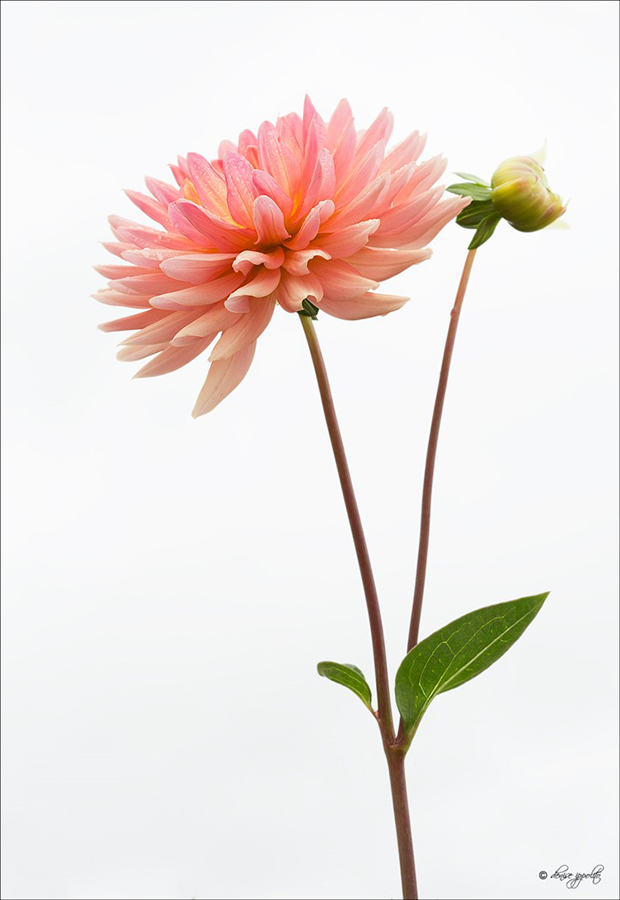
|
Dahlia, botanical print. Image copyright 2014: Denise Ippolito/A Creative Adventure.
Simply put, Denise Ippolito is a talented artist.
|
A Tour de Force
tour de force (ˈto͝or də ˈfôrs/) noun: an impressive performance or achievement that has been accomplished or managed with great skill. “The Art of Flower Photography is a tour de force.”
|
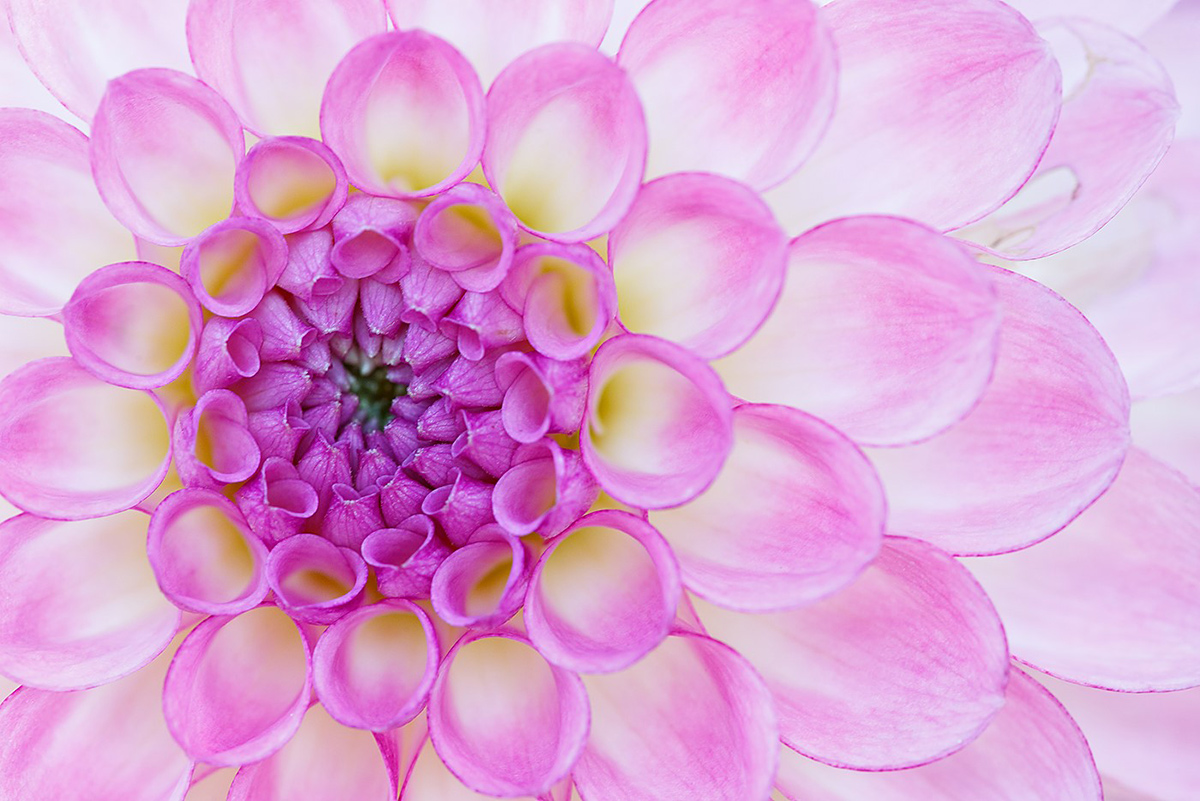
|
Dahlia, tight portrait. Image copyright 2014: Arthur Morris/BIRDS AS ART.
Like his bird photographs, artie’s flowers images tend to be clean, tight, and graphic.
|
The Project
Conceived by Denise Ippolito, six months in the making, The Art of Flower Photography is a summital achievement, the results of many hundreds of hours of effort. Thanks to Carol Carson for her careful review of the manuscript.
|
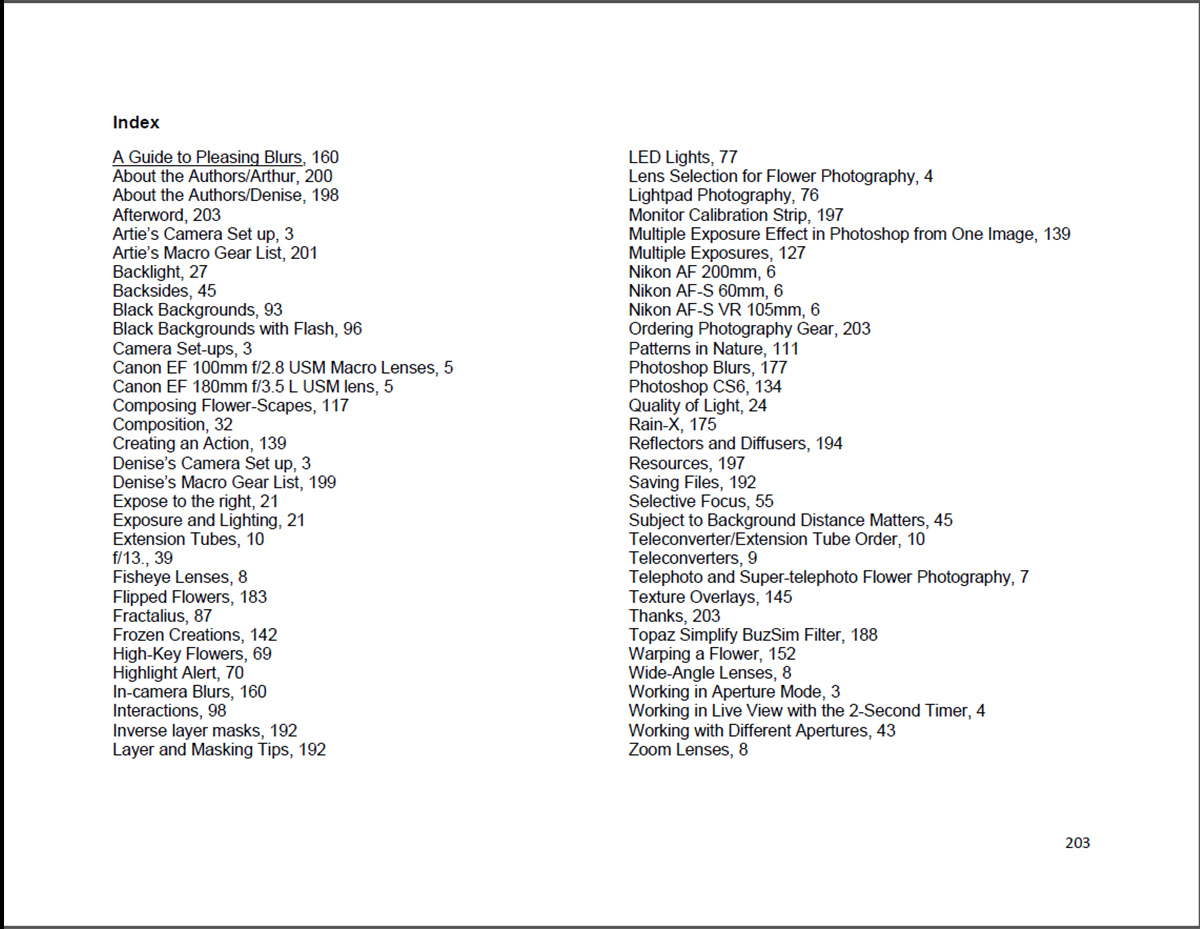
|
|
The Index of The Art of Flower Photography.
|
What You Will Learn?
In short, you will–as a glance at the eBook’s index above shows, learn everything about flower photography that you wanted to know but were afraid to ask.
We cover lens, gear, and accessory selection, in-the-field techniques, image design and composition, understanding and using the light, getting the right exposure, aperture choice and depth-of-field, focusing techniques, and a variety of post processing and Photoshop techniques. Among others.
Part of the strength of this eBook is that though both denise and artie produce beautiful and inspiring images on a consistent basis, they often use different lenses and different techniques to achieve their visions. In The Art of Flower Photography you get to pick the brains of two very fine photographers.
|
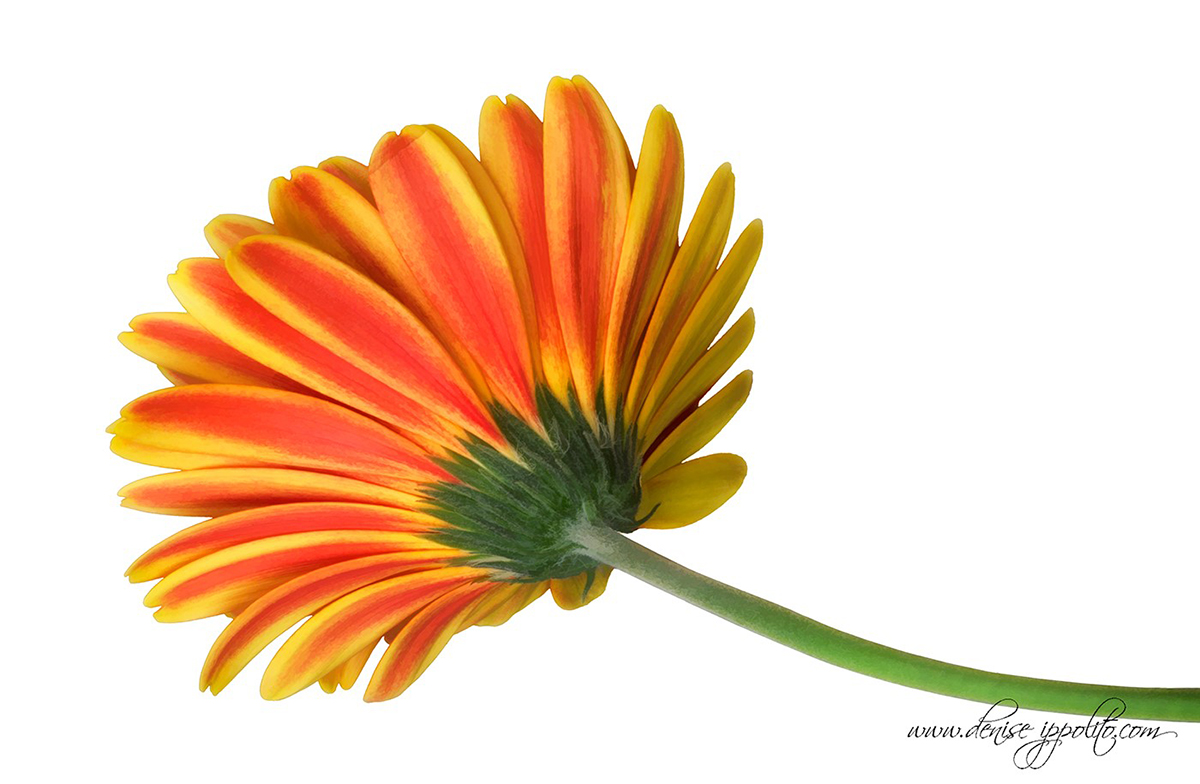
|
Gerbera Daisy after warping and rotation, Topaz Simplify BuzSim applied. Image copyright 2014: Denise Ippolito/A Creative Adventure.
Denise is as skilled and creative at the computer and in Photoshop as she is in a field of flowers.
|
Author Backgrounds
Denise Ippolito
Denise has been involved with flowers for much of her life. She is a fifth generation florist who owned and operated a successful flower shop. Subsequently, she then ran first one and then another garden center for the next ten years. Denise has since become a skilled flower photographer; and she has succeeded admirably. Her incredibly creative mind led her to experimenting with both in-the-field techniques and creative post processing effects using Photoshop and several plug-in applications to create the artistic flower renditions that are presented in this eBook.
Arthur Morris
Arthur is a world renowned photographer, and a member of Canon’s “Explorers of Light” program. Although Artie is perhaps best known for his superb bird photography, with thousands of his images gracing the pages of numerous books, magazines, and other publications, he has recently extended his subject matter by redirecting his lenses to capture images of flowers that emphasize their form, pattern, and texture.
|
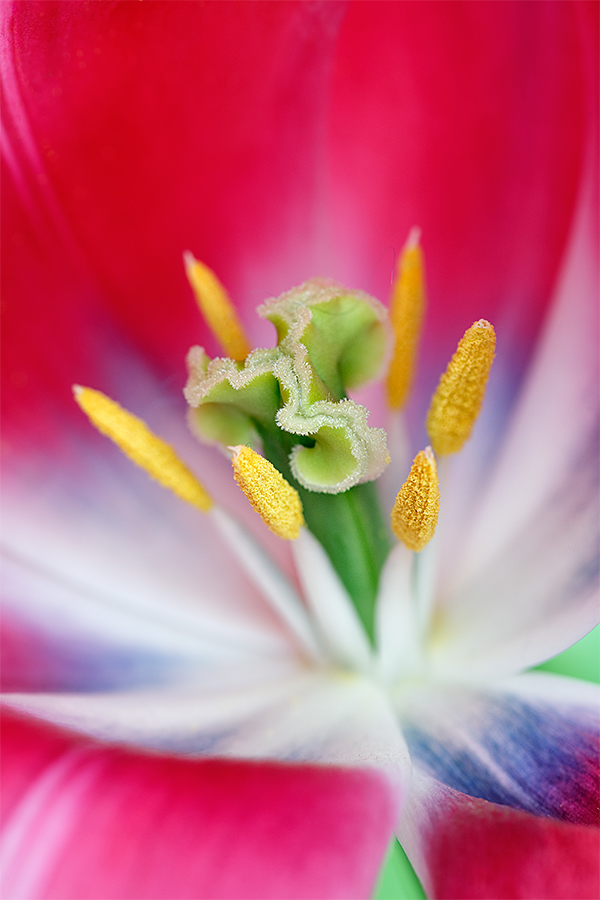
|
Tulipa Renown. Image copyright 2014: Arthur Morris/BIRDS AS ART.
On average, artie works with longer focal length lenses than denise. In this new eBook, he shares the techniques that he has developed for using super-telephoto lenses for flower photography. This image was created with the Canon EF 180mm f/3.5L Macro USM lens that denise owns but rarely uses as she much prefers the Canon EF 100mm f/2.8L Macro IS USM lens
|
The Team
The Art of Flower Photography combines the creative energy, the technical proficiency, and the artistic visions of Denise Ippolito and Arthur Morris. Together they form a dynamic teaching team that lectures and conducts seminars and workshops across the country and internationally. They are both multiple award winning photographers who specialize in making world class images of birds, flowers, wildlife, the natural world and Urbex subjects.
The First Review
The first review is in. From Carol Carson via e-mail:
Inspiration and instruction from two experts with different shooting styles–how can you top that? Denise and Artie have produced a must-have addition to the flower photographer’s eLibrary.
Typos
In all blog posts and Bulletins, feel free to e-mail or to leave a comment regarding any typos or errors.
January 14th, 2021 What’s Up?
Wednesday was another totally grey day. I walked the pier with the a9 ii/200/600 and created 360 intentionally blurred images. I kept four. None will probably ever see the light of day, or be featured on the blog … Many times when I walk with a zoom lens — be it a SONY lens or the Canon RF 100-500 with the R5, I am working to learn more about the AF system and to fine tune my understanding of exposure …
SONY folks are advised to check out the Coming Soon item just below.
It is partly cloudy here this morning — Thursday 14 January 2021 with light winds from the SW. I hope that it stays cloudy for my walk so I can try some more blurs.
This blog past makes twenty-five days in a row with a new blog post. This one took about 2 1/2 hours to prepare. Please remember …
Please Remember
With income from IPTs approaching zero, please, if you enjoy and learn from the blog, remember to use one of my two affiliate programs when purchasing new gear. Doing so just might make it possible for me to avoid having to try to get a job as a Walmart greeter and will not cost you a single penny more. And if you use Bedfords and remember to enter the BIRDSASART code at checkout, you will save 3% on every order and enjoy free second-day air shipping. In these crazy times — I am out at least forty to sixty thousand dollars so far due to COVID 19 (with lots more to come) — remembering to use my B&H link or to shop at Bedfords will help me out a ton and be greatly appreciated. Overseas folks who cannot order from the US because of import fees, duties, and taxes can always help out by clicking here if they see fit.
|
|
SONY AF point display after the fact!
|
Coming Soon!
We recently learned about an amazing new program that will show SONY AF points (and to a limited degree, the AF info). We hope to be sharing that info with you here soon.
RawDigger e-Guide and Video Advance Copy Available
Save $10 Now
The RawDigger e-Guide and Video is almost finished. It will sell for $51.00. If you are anxious to get started with RawDigger, learn to mega-Expose to the Right, and wind up with the highest quality image files, you can save $10.00 and have a chance to review a pre-publication copy of the guide by sending a PayPal for $41.00 to birdsasart@verizon.net with the words RawDigger e-Guide and Video Pre-publication Copy cut and pasted into the Subject line. The recent delay is the result of my recent conversations with Iliah Borg, the brains behind RawDigger. It is very likely that the Shock-your-World section will shock you.
In the new guide, we teach you why the GREEN channel is almost always the first to over-expose. We teach you how to interpret the Max G values. And most recently, we teach you a simple way to evaluate your exposures using an adapted RawDigger histogram. And tons more, of course. I am planning on having the RawDigger guide ready for sale by next Monday. Folks who saved $10.00 by pre-ordering will of course receive a link to the final PDF.
Great Topaz News!
Folks who use the BAA Topaz link to purchase Sharpen AI, DeNoise AI, or the Utility Bundle (or any other Topaz plugins) will receive a 15% discount by entering the ARTHUR15 code at checkout. To get the discount you must use my link and you must enter the discount code. Be sure to start with this link.
Topaz Stuff
As I said just a while back and have said often many times before, I should have listened sooner. If you, like me, are new to the Topaz party, please use this link to purchase. Right now I can wholeheartedly recommend both Topaz Sharpen AI and Topaz DeNoise AI. Though I have not yet worked with JPEGtoRAW AI or Gigapixel AI, I have installed both of these plug-ins and look forward to trying them on some I-Phone 11 images fairly soon. If you are thinking like me, consider the Utility Bundle that includes all four plug-ins mentioned above at a money-saving price.
Again, those who purchase Sharpen AI or DeNoise AI using my link, can e-mail to request a short Getting Started with Topaz e-Guide. I had a bit of trouble getting the two plug-ins installed and having them appear in the Photoshop Filter Menu. In addition, I will explain how to best learn about the two plug-ins by applying them on a Layer (in Photoshop).
|
|
|
132 sold to rave reviews.
The SONY e-Guide by Patrick Sparkman and Arthur Morris
|
The Sony Camera User’s e-Guide (and Videos)
Click here to purchase the guide with one Camera Set-up Video. Be sure to e-mail us by clicking here to specify your camera body so that we can send you a link for the correct video.
Click here to purchase the guide with two Camera Set-up Videos. Be sure to e-mail us by clicking here to specify your two camera bodies so that we can send you links for the correct videos.
Click here to learn more about the SONY e-Guide.
Folks who have used my B&H affiliate links or purchased their SONY gear are invited to e-mail for discount information.
New and Better Bedfords Discount Policy!
You can now save 3% on all of your Bedfords photo gear purchases by entering the BIRDSASART coupon code at checkout. Your discount will be applied to your pre-tax total. In addition, by using the code you will get 2nd day air shipping via Fed Ex.
Grab a Nikon AF-S Teleconverter TC-14E III and save $14.99. Purchase a Canon EOS R5 and your discount will be $116.97. Purchase a Sony FE 600mm f/4 GM OSS lens and save a remarkable $389.94! Your Bedford’s purchase no longer needs to be greater than $1,000.00 for you to receive a discount. The more you spend, the more you save.
Money Saving Reminder
Many have learned that if you need a hot photo item that is out of stock at B&H and would enjoy free overnight shipping, your best bet is to click here, place an order with Bedfords, and enter the coupon code BIRDSASART at checkout. If an item is out of stock, contact Steve Elkins via e-mail or on his cell phone at (479) 381-2592 (Central time). Be sure to mention the BIRDSASART coupon code and use it for your online order to save 3% and enjoy free 2nd-day air shipping. Steve has been great at getting folks the hot items that are out of stock at B&H and everywhere else. The wait lists at the big stores can be a year or longer for the hard to get items. Steve will surely get you your gear long before that. For the past year, he has been helping BAA Blog folks get their hands on items like the SONY a9 ii, the SONY 200-600 G OSS lens, the Canon EOS R5, the Canon RF 100-500mm lens, and the Nikon 500mm PF. Steve is personable, helpful, and eager to please.


Gear Questions and Advice
Too many folks attending BAA IPTs (remember those?) and dozens of photographers whom I see in the field and on BPN, are–out of ignorance–using the wrong gear especially when it comes to tripods and more especially, tripod heads… Please know that I am always glad to answer your gear questions via e-mail. Those questions might deal with systems, camera bodies, accessories, and/or lens choices and decisions.
The Situation
We arrived at Anahuac early every morning in hopes of photographing the grackle and ibis pre-dawn blast-offs. On the very foggy morning of 28 OCT, I spotted this Great Egret standing still next to a canal near some dayflowers and approached just a bit as I moved to my left. Remember: when it’s dark, keep your teleconverters in your pocket. I went with 1/125 second wide open at f/4 and raised the ISO until I had some Zebras on the subject. RawDigger showed that the raw file was about 2/3 stop too dark — in the SONY e-guide we advice going with lots os Zebras in low light …
Not a Head Shot!
I love clean tight and graphic. And I love head portraits. But, when the wide image includes some interesting habitat (and some nice flowers), small-in-the-frame is the way to go. Not to mention that the birds at the refuge were not at all tame …
|
|
Image #1A: Topaz DeNoise AI on Auto
|
Topaz DeNoise on Auto
The comparison view of this ISO 8000 image clearly showed that DeNoise AI was the most effective option. Be sure to click on the image to see how DeNoise AI cleaned up the noise and brightened and sharpen the image. Please note that white feathers in very soft light will never show much if any fine feather detail (FFD).
The Image Optimization
In the raw file converted with no adjustments you can see a large blue-cast. While converting the image in Capture One, I used click-White Balance to warm up the image and then backed off a bit. I executed the rotation and crop before bringing the image into DeNoise AI. Then I spent a while cleaning up the many distracting elements along the near-shoreline, especially in the lower left portion of the frame. The clean-up was performed using my usual cadre of tools and techniques. Those included the Patch Tool, the Spot Healing Brush, the Clone Stamp Tool, a series of small, transformed Quick Masks modified with Regular Layer Masks, and Divide and Conquer.
Feel free to leave a comment revealing your thoughts on the image clean-up.
|
|
The BIRDS AS ART Current Workflow e-Guide (Digital Basics II).
You can order your copy from the BAA Online Store here, by sending a PayPal for $40 here, or by calling Jim or Jennifer weekdays at 863-692-0906 with your credit card in hand. Be sure to specify Digital Basics II.
|
The BIRDS AS ART Current Workflow e-Guide (Digital Basics II)
The clean-up techniques mentioned above and tons more great Photoshop tips and techniques (with the exception of Capture One RAW Conversions) — along with all of my personalized Keyboard Shortcuts — are covered in detail in the BIRDS AS ART Current Workflow e-Guide (Digital Basics II), an instructional PDF that is sent via e-mail. Learn more and check out the free excerpt in the blog post here. While the new e-Guide reflects my MacBook Pro/Photo Mechanic/DPP 4/Photoshop workflow, folks using a PC and/or BreezeBrowser will also benefit greatly by studying the material on DB II. Note: folks working on a PC and/or those who do not want to miss anything Photoshop may wish to purchase the original Digital Basics along with DB II while saving $15 by clicking here to buy the DB Bundle.
Folks who learn well by following along rather than by reading can check out the complete collection of MP 4 Photoshop Tutorial Videos by clicking here. Note: all of the videos are now priced at an amazingly low $5.00 each.
You can learn how and why I used to convert all of my Canon digital RAW files in DPP 4 in the DPP 4 RAW Conversion Guide here. More recently, I became proficient at converting my Nikon RAW (NEF) files in Adobe Camera Raw. About two years ago I began converting my Nikon and Sony RAW files in Capture One Pro 12 and continue to do so today (along with my R5 images).
To purchase Capture One, please use this link. Then you can learn more about Capture One in the Capture One Pro 12 Simplified MP4 Video here. The next step would be to get a copy of Arash Hazeghi’s “The Nikon Photographers’ Guide to Phase One Capture One Pro e-Guide” in the blog post here.
You can learn advanced Quick Masking and advanced Layer Masking techniques in APTATS I & II. You can save $15 by purchasing the pair. Folks can learn sophisticated sharpening and (NeatImage) Noise Reduction techniques in The Professional Post Processing Guide by Arash Hazeghi and edited by yours truly. Please use this link to purchase NeatImage.
To introduce folks to our MP.4 videos and the basics involved in applying more NeatImage noise reduction to the background and less on the subject, I’d be glad to send you a free copy of the Free Noise Reduction Basics MP.4 Video. Simply click to shoot me an e-mail to get your free copy.
Typos
In all blog posts and Bulletins, feel free to e-mail or to leave a comment regarding any typos or errors.
January 13th, 2021 What’s Up?
The birds on the pier railings are forever painting the floor boards with whitewash. As I walk, I see all sorts of Rorschach birds and animals in the patterns of the white poop. As it was cloudy-grey on Wednesday morning, I walked the pier with the SONY 100-400 and an a9 ii and photographed many of the whitewash creatures from directly above (thanks to the less-than-one meter MFD of the SONY 100-400 lens.). I will be sharing some of those imaginary creatures with you here soon.
The artie-the-ILE-eagle blog post will be delayed about a week as Patrick and I explore an amazing new program that will thrill SONY Users around the world. More on that soon. Promise.
Work on the RawDigger e-Guide is on temporary hold until I can get with Patrick to iron out a single sticking point. I am hoping that that will happen this coming weekend.
There was an excellent exchange of comments at yesterday’s Geoff Newhouse Short-eared Owl blog post here. Those included two by Geoff as he answered the “which is better SONY a9 ii or Canon R5?” questions.
All are invited to take the Multiple Choice/Fill-in Quiz below.
Today is Wednesday 13 January 2021. I peeked out the door at 7:15am to see that Polk County is currently covered by a huge, grey soft box sky. I will head down with my photo gear to see what’s what. Read on to see why I wish I had my Canon rig for this very cloudy morning. This blog past makes twenty-four days in a row with a new blog post. This one took about three hours to prepare. Please remember …
Please Remember
With income from IPTs approaching zero, please, if you enjoy and learn from the blog, remember to use one of my two affiliate programs when purchasing new gear. Doing so just might make it possible for me to avoid having to try to get a job as a Walmart greeter and will not cost you a single penny more. And if you use Bedfords and remember to enter the BIRDSASART code at checkout, you will save 3% on every order and enjoy free second-day air shipping. In these crazy times — I am out at least forty to sixty thousand dollars so far due to COVID 19 (with lots more to come) — remembering to use my B&H link or to shop at Bedfords will help me out a ton and be greatly appreciated. Overseas folks who cannot order from the US because of import fees, duties, and taxes can always help out by clicking here if they see fit.
Via e-Mail from Bill Dummitt
Hi Artie, Everything sold! Thank you for the help with pricing and selling all the lenses. It was invaluable. Some happy folks now own new lenses and I am almost 4K to the good. Bill
The BAA Used Gear Page
The Used Gear page continues to be very active. The BAA Used Gear Page is the place to sell your used photographic equipment. We will help you to get your gear sold quickly for 20 to 60% or more than what the big guys are offering … Doubt me? Check out the Recent Sales list for the past eleven months at the bottom of the page.
RawDigger e-Guide and Video Advance Copy Available
Save $10 Now
The RawDigger e-Guide and Video is almost finished. It will sell for $51.00. If you are anxious to get started with RawDigger, learn to mega-Expose to the Right, and wind up with the highest quality image files, you can save $10.00 and have a chance to review a pre-publication copy of the guide by sending a PayPal for $41.00 to birdsasart@verizon.net with the words RawDigger e-Guide and Video Pre-publication Copy cut and pasted into the Subject line. The recent delay is the result of my recent conversations with Iliah Borg, the brains behind RawDigger. It is very likely that the Shock-your-World section will shock you.
In the new guide, we teach you why the GREEN channel is almost always the first to over-expose. We teach you how to interpret the Max G values. And most recently, we teach you a simple way to evaluate your exposures using an adapted RawDigger histogram. And tons more, of course. I am planning on having the RawDigger guide ready for sale by next Monday. Folks who saved $10.00 by pre-ordering will of course receive a link to the final PDF.
Canon R5/R6 AF e-Guide Info
So far, 71 folks have sent PayPals for their copy of the Canon R5/R6 AF e-Guide. And 28 who used my affiliate links to purchase their R5 have e-mailed for and received their free copy of the guide. If you e-mailed or sent a PayPal and did not receive your guide, please LMK immediately via e-mail.
Feedback has been overwhelmingly positive so far. Three folks wrote stating that they had a better way of setting up AF on their R5s. When I wrote back explaining why they were in error, two of them back-tracked. One stubborn guy is still doing it his way — less efficiently. Be sure to scroll down to read about my plans for a Canon R5/R6 User’s e-Guide. Understand that the info in the BAA Canon R5/R6 Autofocus e-Guide is so important that I opted to publish the AF guide immediately as the R5/R6 User’s Guide will take at least a month to finish.
BAA Canon R5/R6 Autofocus e-Guide
Twenty-one pages. 3,452 words. 28-DPP4 screen captures showing the R5’s vaunted AF system in action. Note: the AF system of the R5 is identical to the AF system of the R6.
You will learn:
1- The two most useful AF Methods for general bird photography and for birds in flight.
2- How to set up your R5/R6 AF Menus.
3- What boxes to check (and un-check) under Limit AF Methods.
4- How to change the AF Method quickly, easily, and efficiently. Note: the default way of doing this is clunky, cumbersome, and inefficient at best. One person replied that this tip alone was worth the price of admission.
5- The only setting that should be used for Initial Servo AF pt for Face Detection + Tracking.
I you are currently using multiple back buttons either for general bird photography or for birds in flight, what you learn in this guide will change your life. For the better.
Here are the first three paragraphs of this e-Guide:
From the moment I learned about the new Canon mirrorless bodies, I read about using two or three back-buttons to focus using different AF methods. The word on the street said that the way to go for birds in flight was to use one button to acquire focus with Zone AF or with Large Zone: Horizontal AF and then switch to another button to activate Face Detection + Tracking AF and then use the shutter button to make an image. My immediate thought was, “This is insanity! There has got to be a better way.” In short, there is a far superior way to set up AF on your R5 or R6.
Remember that I got away from any form of back-button or rear focusing many years ago after finally realizing that it is always easier to do one thing (press the shutter button), than it is to do two things (press a back button and then press the shutter button).
The default method of switching AF Methods with the R5/R6 bodies is cumbersome at best. It involves first pressing the grid button (my name) on the upper right back of the camera and then pressing the hard-to-access M-Fn button to toggle through the AF Methods. This method is so bad that it will not be mentioned again in this guide.
The guide is free to all who have ordered an R5 or an R6 using my B&H affiliate link or from Steve Elkins/Bedfords using the BIRDSASART coupon code at checkout. Please send your receipt to me via e-mail. It will take me a few days to a week to verify the B&H purchases. Bedfords folks should expect their free e-Guides fairly quickly.
To purchase your copy of the e-Guide, please send a PayPal for $25.00 to birdsasart@verizon.net and be sure to include the words R5/R6 AF Guide in your PayPal e-mail.
Everyone who gets the guide will receive a free update no later than the first week in January.
Canon R5/R6 User’s e-Guide
I am working on a complete Canon R5/R6 User’s e-Guide. This will require a lot of research, a lot of time, and a lot of effort. I am hoping to have it complete by mid- to late January. As always, folks who use the BAA affiliate links to purchase their Canon gear will receive a substantial discount.
Understand that the info in the BAA Canon R5/R6 Autofocus e-Guide is so important that I opted to publish the AF guide right off the bat to help folks get started with their new camera bodies.
Great Topaz News!
Folks who use the BAA Topaz link to purchase Sharpen AI, DeNoise AI, or the Utility Bundle (or any other Topaz plugins) will receive a 15% discount by entering the ARTHUR15 code at checkout. To get the discount you must use my link and you must enter the discount code. Be sure to start with this link.
Topaz Stuff
As I said just a while back and have said often many times before, I should have listened sooner. If you, like me, are new to the Topaz party, please use this link to purchase. Right now I can wholeheartedly recommend both Topaz Sharpen AI and Topaz DeNoise AI. Though I have not yet worked with JPEGtoRAW AI or Gigapixel AI, I have installed both of these plug-ins and look forward to trying them on some I-Phone 11 images fairly soon. If you are thinking like me, consider the Utility Bundle that includes all four plug-ins mentioned above at a money-saving price.
Again, those who purchase Sharpen AI or DeNoise AI using my link, can e-mail to request a short Getting Started with Topaz e-Guide. I had a bit of trouble getting the two plug-ins installed and having them appear in the Photoshop Filter Menu. In addition, I will explain how to best learn about the two plug-ins by applying them on a Layer (in Photoshop).
|
|
|
132 sold to rave reviews.
The SONY e-Guide by Patrick Sparkman and Arthur Morris
|
The Sony Camera User’s e-Guide (and Videos)
Click here to purchase the guide with one Camera Set-up Video. Be sure to e-mail us by clicking here to specify your camera body so that we can send you a link for the correct video.
Click here to purchase the guide with two Camera Set-up Videos. Be sure to e-mail us by clicking here to specify your two camera bodies so that we can send you links for the correct videos.
Click here to learn more about the SONY e-Guide.
Folks who have used my B&H affiliate links or purchased their SONY gear are invited to e-mail for discount information.
New and Better Bedfords Discount Policy!
You can now save 3% on all of your Bedfords photo gear purchases by entering the BIRDSASART coupon code at checkout. Your discount will be applied to your pre-tax total. In addition, by using the code you will get 2nd day air shipping via Fed Ex.
Grab a Nikon AF-S Teleconverter TC-14E III and save $14.99. Purchase a Canon EOS R5 and your discount will be $116.97. Purchase a Sony FE 600mm f/4 GM OSS lens and save a remarkable $389.94! Your Bedford’s purchase no longer needs to be greater than $1,000.00 for you to receive a discount. The more you spend, the more you save.
Money Saving Reminder
Many have learned that if you need a hot photo item that is out of stock at B&H and would enjoy free overnight shipping, your best bet is to click here, place an order with Bedfords, and enter the coupon code BIRDSASART at checkout. If an item is out of stock, contact Steve Elkins via e-mail or on his cell phone at (479) 381-2592 (Central time). Be sure to mention the BIRDSASART coupon code and use it for your online order to save 3% and enjoy free 2nd-day air shipping. Steve has been great at getting folks the hot items that are out of stock at B&H and everywhere else. The wait lists at the big stores can be a year or longer for the hard to get items. Steve will surely get you your gear long before that. For the past year, he has been helping BAA Blog folks get their hands on items like the SONY a9 ii, the SONY 200-600 G OSS lens, the Canon EOS R5, the Canon RF 100-500mm lens, and the Nikon 500mm PF. Steve is personable, helpful, and eager to please.


Gear Questions and Advice
Too many folks attending BAA IPTs (remember those?) and dozens of photographers whom I see in the field and on BPN, are–out of ignorance–using the wrong gear especially when it comes to tripods and more especially, tripod heads… Please know that I am always glad to answer your gear questions via e-mail. Those questions might deal with systems, camera bodies, accessories, and/or lens choices and decisions.
|
|
|
Screen Capture courtesy of Steve Elkins
Image #1: Bedfords Receipt for my very own Canon Rig
|
The Deed is Done; Thanks Steve!
I returned my Canon loaner gear, the EOS R5/RF 100-500/RF 1.4X teleconverter rig, on 4 January 2021. It took less than 10 days for Steve Elkins at Bedford Camera and Video to get a Canon rig for me. Thanks as always, Steve!
Notice that I did not order the vertical battery grip. I’d rather keep one extra battery in my fanny pack than sacrifice any of the weight advantage. I did order an extra battery (out of necessity), but they are back-ordered. I’ve run a Canon battery down while working on the guide without every releasing the shutter!
Why?
So why did I purchase the Canon gear above?
- 1- I need it in order to finish the BAA EOS R5/R6 Camera Users Guide.
- 2- The rig is relatively small, is light in weight, and is a breeze to handhold.
- 3- The under 4-foot MFD offers 0.33x magnification at 500mm and makes the lens great for quasi-macro work.
- 4- The Face Detection + Tracking AF is — though less than perfect — an amazing and intriguing technology that I need to explore further.
- 5- I did not have many chances to do flight. Oh, how I’d love to head to San Diego right now …
- 6- The in-camera Multiple Exposure (ME) and HDR (High Dynamic Range) features are a ton of fun and are great for lazy folks like me. Yes, you can assemble your own ME and HDR images after the fact, but that takes a ton of time and effort. The latter approach is not for me.
- 7- I want to be able to try to create more (and even better) funky flight images on cloudy days.
Funky Flight Photos
While neither of today’s feature images is a contest winner, I think that some potential exists. Each of today’s two featured image was a one-off — I had just a single chance at success. And each is a single image as it appeared right out or the camera. I love this technique on cloudy days as an option to creating some pleasingly blurred images. If you’d like to guess which R5 feature I used for today’s images, feel free to leave a comment. I will refrain from responding. I will of course, describe the technique in complete detail in the BAA EOS R5/R6 Camera User’s Guide (in progress).
Lose Which One?
I almost removed one of the birds in Image #3. Which one? And why?
Multiple Choice/Fill-in Quiz
a) I like both images and find them interesting and creative.
b) I like Image #2 best because _____________.
c) I like Image #3 best because _____________.
d) I think that both of these are insta-deletes and that you should not be wasting your time trying to create more lousy images like these.
|
|
Image #3A: Topaz DeNoise screen capture for Cattle Egret flock funky flight
|
DeNoise with ISO 10000
Again, using the Comparison View has paid huge dividends. I continue to be surprised that at times, either Low Light or AI Clear proves to be more effective than DeNoise. With this ISO 10000 image, AI Clear was obviously the best choice.
Typos
In all blog posts and Bulletins, feel free to e-mail or to leave a comment regarding any typos or errors.
January 12th, 2021 What’s Up?
Monday morning turned out rather nice weather-wise. It was quite still early, with some sweet light as the sun occasionally broke through the clouds. I started with a few images of my favorite crane family. Then after driving around a bit scouting, created a nice bird-scape or two of a Great Blue Heron on the edge of a canal. By the time I walked the pier at about 8:30am there was a gentle breeze from the northwest. There was a silly-tame Turkey Vulture on the pier railing that let me get closer than I ever have to any vulture. I would get really close and the bird would scamper away a few feet. There was a Bald Eagle sitting on the railing farther along. For some strange reason, the scampering vulture made the eagle somewhat comfortable with my presence. I made lots of tight head and shoulders portraits of the vulture but would up deleting every single one because the bird’s back was covered with whitewash. Vultures often poop on other vultures when they are roosting.
Anywho, with the sun in the southeast and the wind from the northwest the eagle took flight. I made a single good frame of the eagle gliding away over still blue water. I will likely share that with you here tomorrow. I did my swim with my neoprene vest. By late Monday, the clouds had taken over. I stayed in.
He today is another opportunity to look at some more great images. If you have a moment, please leave a comment and let us know which of Geoff’s five images you think is the strongest, and why you made your choice.
I was glad to learn yesterday that William Dummitt sold his Sigma 500mm f/4.5 APO EX HSM lens for Nikon mount in excellent condition for a very low $699.00 (was $899.00) and a Nikon AF-S NIKKOR 24-120mm f/4G ED VR lens in excellent condition for a BAA record-low $399.00 (was $498.00) in late-December 2020.
Today is Tuesday 12 January 2021. As it is cloudy-dark at 7:30, I will probably stay in this morning to get some work done. This blog past makes twenty-three days in a row with a new blog post. This one took about three hours to prepare. Please remember …
Please Remember
With income from IPTs approaching zero, please, if you enjoy and learn from the blog, remember to use one of my two affiliate programs when purchasing new gear. Doing so just might make it possible for me to avoid having to try to get a job as a Walmart greeter and will not cost you a single penny more. And if you use Bedfords and remember to enter the BIRDSASART code at checkout, you will save 3% on every order and enjoy free second-day air shipping. In these crazy times — I am out at least forty to sixty thousand dollars so far due to COVID 19 (with lots more to come) — remembering to use my B&H link or to shop at Bedfords will help me out a ton and be greatly appreciated. Overseas folks who cannot order from the US because of import fees, duties, and taxes can always help out by clicking here if they see fit.
Via e-Mail from Bill Dummitt
Hi Artie, Everything sold! Thank you for the help with pricing and selling all the lenses. It was invaluable. Some happy folks now own ew lenses and I am almost 4K to the good. Bill
The BAA Used Gear Page
The Used Gear page continues to be very active. The BAA Used Gear Page is the place to sell your used photographic equipment. We will help you to get your gear sold quickly for 20 to 60% or more than what the big guys are offering … Doubt me? Check out the Recent Sales list for the past eleven months at the bottom of the page.
RawDigger e-Guide and Video Advance Copy Available
Save $10 Now
The RawDigger e-Guide and Video is almost finished. It will sell for $51.00. If you are anxious to get started with RawDigger, learn to mega-Expose to the Right, and wind up with the highest quality image files, you can save $10.00 and have a chance to review a pre-publication copy of the guide by sending a PayPal for $41.00 to birdsasart@verizon.net with the words RawDigger e-Guide and Video Pre-publication Copy cut and pasted into the Subject line. The recent delay is the result of my recent conversations with Iliah Borg, the brains behind RawDigger. It is very likely that the Shock-your-World section will shock you.
In the new guide, we teach you why the GREEN channel is almost always the first to over-expose. We teach you how to interpret the Max G values. And most recently, we teach you a simple way to evaluate your exposures using an adapted RawDigger histogram. And tons more, of course. I am planning on having the RawDigger guide ready for sale by next Monday. Folks who saved $10.00 by pre-ordering will of course receive a link to the final PDF.
Canon R5/R6 AF e-Guide Info
So far, 70 folks have sent PayPals for their copy of the Canon R5/R6 AF e-Guide. And 28 who used my affiliate links to purchase their R5 have e-mailed for and received their free copy of the guide. If you e-mailed or sent a PayPal and did not receive your guide, please LMK immediately via e-mail.
Feedback has been overwhelmingly positive so far. Three folks wrote stating that they had a better way of setting up AF on their R5s. When I wrote back explaining why they were in error, two of them back-tracked. One stubborn guy is still doing it his way — less efficiently. Be sure to scroll down to read about my plans for a Canon R5/R6 User’s e-Guide. Understand that the info in the BAA Canon R5/R6 Autofocus e-Guide is so important that I opted to publish the AF guide immediately as the R5/R6 User’s Guide will take at least a month to finish.
BAA Canon R5/R6 Autofocus e-Guide
Twenty-one pages. 3,452 words. 28-DPP4 screen captures showing the R5’s vaunted AF system in action. Note: the AF system of the R5 is identical to the AF system of the R6.
You will learn:
1- The two most useful AF Methods for general bird photography and for birds in flight.
2- How to set up your R5/R6 AF Menus.
3- What boxes to check (and un-check) under Limit AF Methods.
4- How to change the AF Method quickly, easily, and efficiently. Note: the default way of doing this is clunky, cumbersome, and inefficient at best. One person replied that this tip alone was worth the price of admission.
5- The only setting that should be used for Initial Servo AF pt for Face Detection + Tracking.
I you are currently using multiple back buttons either for general bird photography or for birds in flight, what you learn in this guide will change your life. For the better.
Here are the first three paragraphs of this e-Guide:
From the moment I learned about the new Canon mirrorless bodies, I read about using two or three back-buttons to focus using different AF methods. The word on the street said that the way to go for birds in flight was to use one button to acquire focus with Zone AF or with Large Zone: Horizontal AF and then switch to another button to activate Face Detection + Tracking AF and then use the shutter button to make an image. My immediate thought was, “This is insanity! There has got to be a better way.” In short, there is a far superior way to set up AF on your R5 or R6.
Remember that I got away from any form of back-button or rear focusing many years ago after finally realizing that it is always easier to do one thing (press the shutter button), than it is to do two things (press a back button and then press the shutter button).
The default method of switching AF Methods with the R5/R6 bodies is cumbersome at best. It involves first pressing the grid button (my name) on the upper right back of the camera and then pressing the hard-to-access M-Fn button to toggle through the AF Methods. This method is so bad that it will not be mentioned again in this guide.
The guide is free to all who have ordered an R5 or an R6 using my B&H affiliate link or from Steve Elkins/Bedfords using the BIRDSASART coupon code at checkout. Please send your receipt to me via e-mail. It will take me a few days to a week to verify the B&H purchases. Bedfords folks should expect their free e-Guides fairly quickly.
To purchase your copy of the e-Guide, please send a PayPal for $25.00 to birdsasart@verizon.net and be sure to include the words R5/R6 AF Guide in your PayPal e-mail.
Everyone who gets the guide will receive a free update no later than the first week in January.
Canon R5/R6 User’s e-Guide
I am working on a complete Canon R5/R6 User’s e-Guide. This will require a lot of research, a lot of time, and a lot of effort. I am hoping to have it complete by mid- to late January. As always, folks who use the BAA affiliate links to purchase their Canon gear will receive a substantial discount.
Understand that the info in the BAA Canon R5/R6 Autofocus e-Guide is so important that I opted to publish the AF guide right off the bat to help folks get started with their new camera bodies.
Great Topaz News!
Folks who use the BAA Topaz link to purchase Sharpen AI, DeNoise AI, or the Utility Bundle (or any other Topaz plugins) will receive a 15% discount by entering the ARTHUR15 code at checkout. To get the discount you must use my link and you must enter the discount code. Be sure to start with this link.
Topaz Stuff
As I said just a while back and have said often many times before, I should have listened sooner. If you, like me, are new to the Topaz party, please use this link to purchase. Right now I can wholeheartedly recommend both Topaz Sharpen AI and Topaz DeNoise AI. Though I have not yet worked with JPEGtoRAW AI or Gigapixel AI, I have installed both of these plug-ins and look forward to trying them on some I-Phone 11 images fairly soon. If you are thinking like me, consider the Utility Bundle that includes all four plug-ins mentioned above at a money-saving price.
Again, those who purchase Sharpen AI or DeNoise AI using my link, can e-mail to request a short Getting Started with Topaz e-Guide. I had a bit of trouble getting the two plug-ins installed and having them appear in the Photoshop Filter Menu. In addition, I will explain how to best learn about the two plug-ins by applying them on a Layer (in Photoshop).
|
|
|
132 sold to rave reviews.
The SONY e-Guide by Patrick Sparkman and Arthur Morris
|
The Sony Camera User’s e-Guide (and Videos)
Click here to purchase the guide with one Camera Set-up Video. Be sure to e-mail us by clicking here to specify your camera body so that we can send you a link for the correct video.
Click here to purchase the guide with two Camera Set-up Videos. Be sure to e-mail us by clicking here to specify your two camera bodies so that we can send you links for the correct videos.
Click here to learn more about the SONY e-Guide.
Folks who have used my B&H affiliate links or purchased their SONY gear are invited to e-mail for discount information.
New and Better Bedfords Discount Policy!
You can now save 3% on all of your Bedfords photo gear purchases by entering the BIRDSASART coupon code at checkout. Your discount will be applied to your pre-tax total. In addition, by using the code you will get 2nd day air shipping via Fed Ex.
Grab a Nikon AF-S Teleconverter TC-14E III and save $14.99. Purchase a Canon EOS R5 and your discount will be $116.97. Purchase a Sony FE 600mm f/4 GM OSS lens and save a remarkable $389.94! Your Bedford’s purchase no longer needs to be greater than $1,000.00 for you to receive a discount. The more you spend, the more you save.
Money Saving Reminder
Many have learned that if you need a hot photo item that is out of stock at B&H and would enjoy free overnight shipping, your best bet is to click here, place an order with Bedfords, and enter the coupon code BIRDSASART at checkout. If an item is out of stock, contact Steve Elkins via e-mail or on his cell phone at (479) 381-2592 (Central time). Be sure to mention the BIRDSASART coupon code and use it for your online order to save 3% and enjoy free 2nd-day air shipping. Steve has been great at getting folks the hot items that are out of stock at B&H and everywhere else. The wait lists at the big stores can be a year or longer for the hard to get items. Steve will surely get you your gear long before that. For the past year, he has been helping BAA Blog folks get their hands on items like the SONY a9 ii, the SONY 200-600 G OSS lens, the Canon EOS R5, the Canon RF 100-500mm lens, and the Nikon 500mm PF. Steve is personable, helpful, and eager to please.


Gear Questions and Advice
Too many folks attending BAA IPTs (remember those?) and dozens of photographers whom I see in the field and on BPN, are–out of ignorance–using the wrong gear especially when it comes to tripods and more especially, tripod heads… Please know that I am always glad to answer your gear questions via e-mail. Those questions might deal with systems, camera bodies, accessories, and/or lens choices and decisions.
|
|
|
This image was created by Geoff Newhouse in Vancouver, British Columbia, Canada. He used the handheld Sony FE 600mm f/4 GM OSS lens, Sony FE 1.4x teleconverter, and the blazingly fast AF King, the Sony Alpha a9 II Mirrorless Digital Camera Body. ISO 1250: 1/3200 sec. at f/5.6 in Manual mode.
Center Zone AF-C was active at the moment of exposure and performed to perfection. Click the image to see the spectacular larger version.
Image courtesy of and copyright 2020: Geoff Newhouse
Image #1: Short-eared Owl looking down the lens barrel flight
|
Thanks to Brian Sump
Thanks to Brian Sump for shooting me a link to the fine work of Photographer Geoff Newhouse.
Geoff Newhouse
Geoff grew up in the interior of British Columbia, did university at UBC in Vancouver, and worked in Alberta after graduation. He got into photography with his first Canon Rebel DLSR in early 2009 after from moving from Alberta to Whitehorse, Yukon Territory. His focus soon changed from general outdoor photography to bird and wildlife photography after a trip to Galapagos in 2011. His interest in bird photography surged after he located two eagle nests at eye level; he spent four years photographing eagle nesting behaviour. One of his eagle images was highly-honoured in the 2017 Nature’s Best Photography Contest/Bird category in 2017. Scroll down in the gallery here to see his Eagles Feeding Eaglet image. After that, he spent most of his vacation time traveling to Antarctica, Borneo, Ecuador, Costa Rica, and Florida photographing birds.
Geoff started with Canon and added some Nikon gear in late 2016. He soon switched mostly to Nikon but then added a Sony A9 in 2017. He sold off the last of his Canon gear in 2019. He still has a bit of Nikon gear but went predominantly to the Sony a9 ii, a7r iv, 200-600 G, and the 600mm f/4 GM for the past few years. The R5’s Face Detection + Tracking “bird eye” AF was too tempting to pass up, so he recently added the mirrorless EOS R5 to his kit. He wishes that he’d kept at least one of his big Canon EF super-telephoto lenses to use with the R5 and an EF adapter. His plan is to use the RF 100-500 until Canon releases some larger RF prime lenses. (Does his gear story sound familiar?)
In August of 2018 he moved from the Yukon to Vancouver Island in the Victoria, BC area. There he discovered lots of new and different avian subjects to photograph relatively close to home. As there is not any significant winter on the island, he is able to do lots of bird photography year-round. He plans to live there until he retires.
Geoff was a great help with the R5/R6 AF Guide. You can see more of his excellent work on his Flickr Photostream here.
|
|
|
This image was created by Geoff Newhouse in Vancouver, British Columbia, Canada. He used the handheld Sony FE 600mm f/4 GM OSS lens, Sony FE 1.4x teleconverter, and the blazingly fast AF King, the Sony Alpha a9 II Mirrorless Digital Camera Body. ISO 640: 1/4000 sec. at f/5.6 in Manual mode.
Center Zone AF-C was active at the moment of exposure and performed to perfection. Click the image to see a larger version.
Image courtesy of and copyright 2020: Geoff Newhouse
Image #2: Short-eared Owl flight flight side view
|
Two-Gun Geoff
So why “Two-Gun Geoff?” Geoff is currently using both the SONY 600 GM/a9 ii and the Canon RF 100-500/R5 rigs. The first two of today’s featured images were created with is SONY 600 GM, the 1.4X TC, and the a9 ii. Image 3 & 4 were created with his Canon gear. All of these excellent images (and lots more), were created on a single great day of photography — 4 December 2020!
The Real “Two-Gun Pete”
“Two-Gun Pete” Washington was a legendary Chicago police officer who is said to have been responsible for more than 20,000 arrests. He had 9 notches on the two 357 Magnums that he carried on his South Side beat between 1933 and 1951.
About the book “Chicago’s Two-Gun Pete by Jerry Jones (now out of print), a reviewer named Peter wrote:
A very interesting history of a Black Chicago Cop that spanned from the 1930’s to the 50’s. He one time had patrolled both the South and West sides of the city. Sylvester “Two-Gun” started his career as an anonymous blue-coated Chicago beat cop, but he ended up as a neighborhood superstar! He was a flamboyant, hard-drinking, crooked, braggadocious, womanizing, foul-mouthed Chicago Police detective.
He was tasked with clearing out bad elements from every nightclub, whorehouse, flophouse, jazz club, and pool hall in what was then called the Black Metropolis, aka “Broneville” on Chicago’s the South Side. This Black Belt was mired in poverty, violence, corruption, substandard housing and was the home to 3/4 of Chicago’s Black population. Which kept growing, with waves of Blacks arriving on the Illinois Gulf Central trains from the deep southern states. Washington spent most of his career working out of the old Wabash Avenue Police Station located at 48th Street and Wabash Avenue. By the mid-1940s, his 5th District, with a population of 200,000, led the city in slayings, robberies, rapes, and had gained the nickname the “Bucket of Blood.”
But the mention of Two-Gun Pete’s name could clear a street corner in seconds. “Everybody knew Sylvester Washington,” said Rudy Nimocks, a former Deputy Superintendent. “They knew his car. And the prostitutes would go hide someplace when they saw him. He was something else.” Washington and his pistols were even featured in a small photo in a 1947 issue of Life magazine. At the height of his legend, he didn’t even have to unholster his guns. He would send troublemakers unescorted to the police station, and they would go, preferring not to have Pete come looking for them later.
Staring in Flight!
I found this one in Geoff’s Flickr Photostream gallery after my morning walk and decided that I had to add it to the blog post. So I did.
R5 Crop-ability
Geoff kindly sent me DPP 4 screen captures for both of the Canon images here (and several more from the series during which Image #4 (below) was created. With 45 megapixels, sharp R5 images can stand up to healthy crops. I’d estimate that for Image #3 more than 75% of the original pixels were cropped away yet the image quality looks just fine.
The screen capture for this image showed that Face Detection + Tracking AF for this image reverted to what I would call full-screen AF with 910 AF points (or areas?) available. In any case, the system activated an irregular pattern of 8 AF points. One caught the top of the owl’s head. The other seven points painted the far wing. Keep reading for my additional comments on Face Detection + Tracking AF.
The Attack!
As you can see by looking at the screen capture below, this is another large crop. It is from a five-frame sequence where a second short-eared flew in to attack the bird that Geoff was photographing. Geoff wisely kept firing. The bird in Image #4 was diving away from the attacking bird.
|
|
|
DPP 4 screen capture courtesy of and copyright 2020: Geoff Newhouse
Image #5A: DPP 4 screen capture for Short-eared Owl flight
|
Getting Lucky
By Geoff’s own admission, he got lucky here. The AF system tracked the attacking bird. Though the active AF point was nowhere near the bird that would become the subject, both birds were on the same plane. Thus, the bird featured in Image #4 is quite sharp on the eye. Such lucky accidents happen with all AF systems. I have made sharp flight images with Canon, Nikon, and SONY where the AF point was on the sky rather than the subject.
R5 Face Detection + Tracking AF
Part of the reason that I was curious about the R5 were statements to this effect: The R5’s Face Detection + Tracking AF never fails. The system sees the bird’s eye even before you press the shutter button, locks onto the eye, and never lets go.
I will readily admit that this technology is nothing short of amazing. I have seen it track the eye of a-small-in-the-frame subject perfectly for multiple in-flight frames. But having worked with the R5 for five weeks, and having seen Geoff’s DPP 4 screen captures, I can state with absolute confidence that the R5’s Face Detection + Tracking AF is nowhere near perfect. It will, at times — with subjects ranging from tiny-in-the-frame to large-in-the-frame — fail to track the a subjects eye (even after first acquiring it successfully). When eye AF is tracking perfectly the AF point transforms to a tiny square. As detailed in the R5/R6 AF Guide, this technology may often revert to a small square, to a medium-sized square, a large square, or to activating multiple AF points (as we saw with Image #3).
In short, the R5’s Face Detection + Tracking AF technology is amazing, but it is far from perfect even in highly skilled hands like Geoff’s.
Typos
In all blog posts and Bulletins, feel free to e-mail or to leave a comment regarding any typos or errors.
|
|

